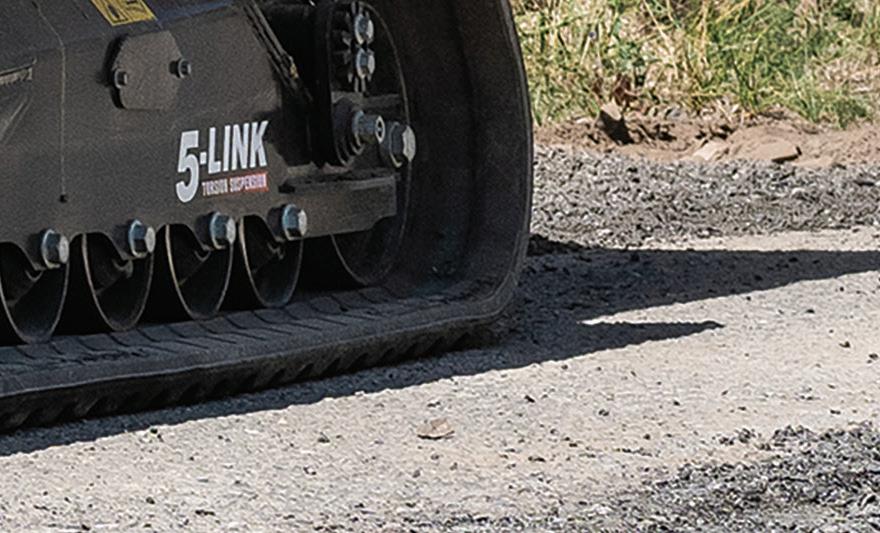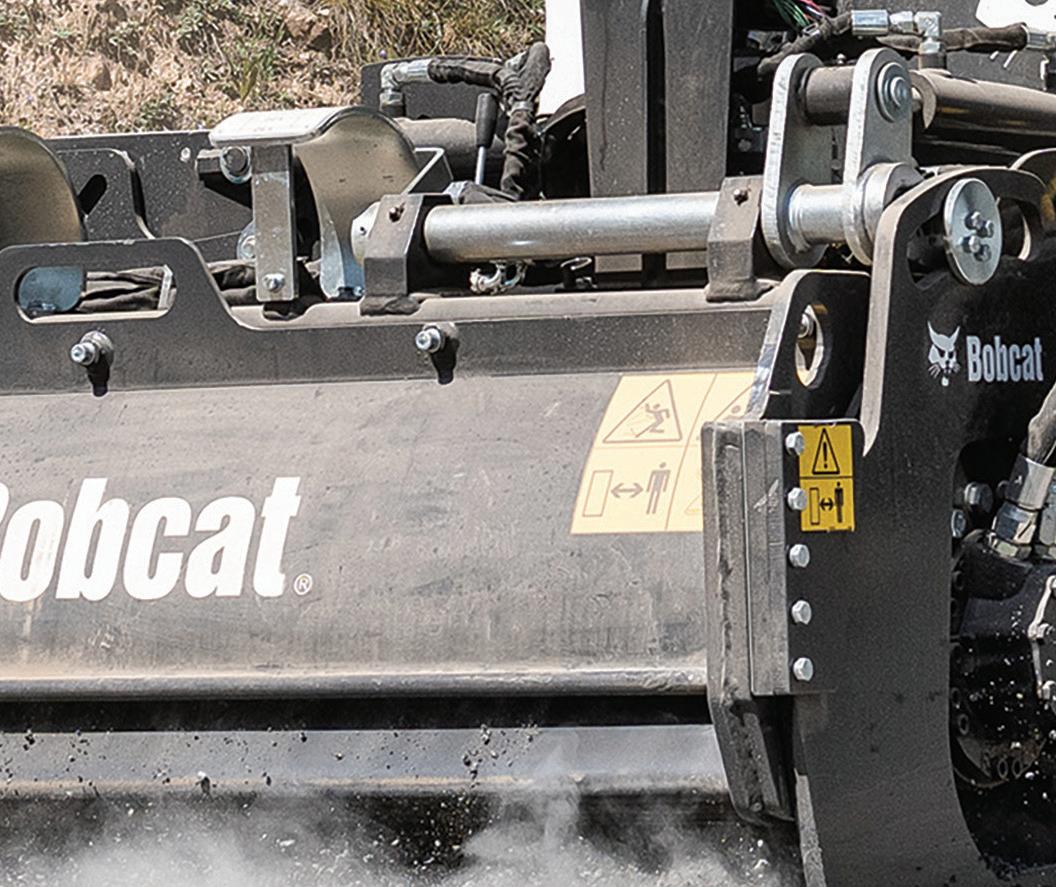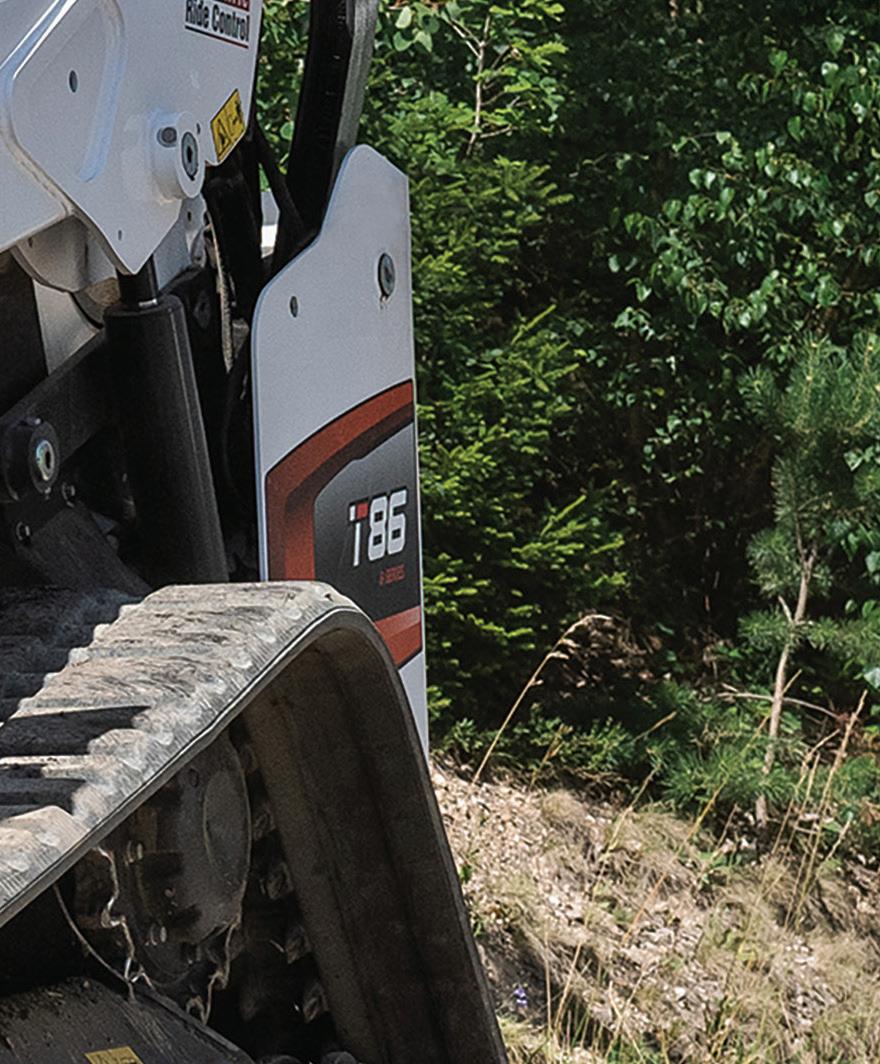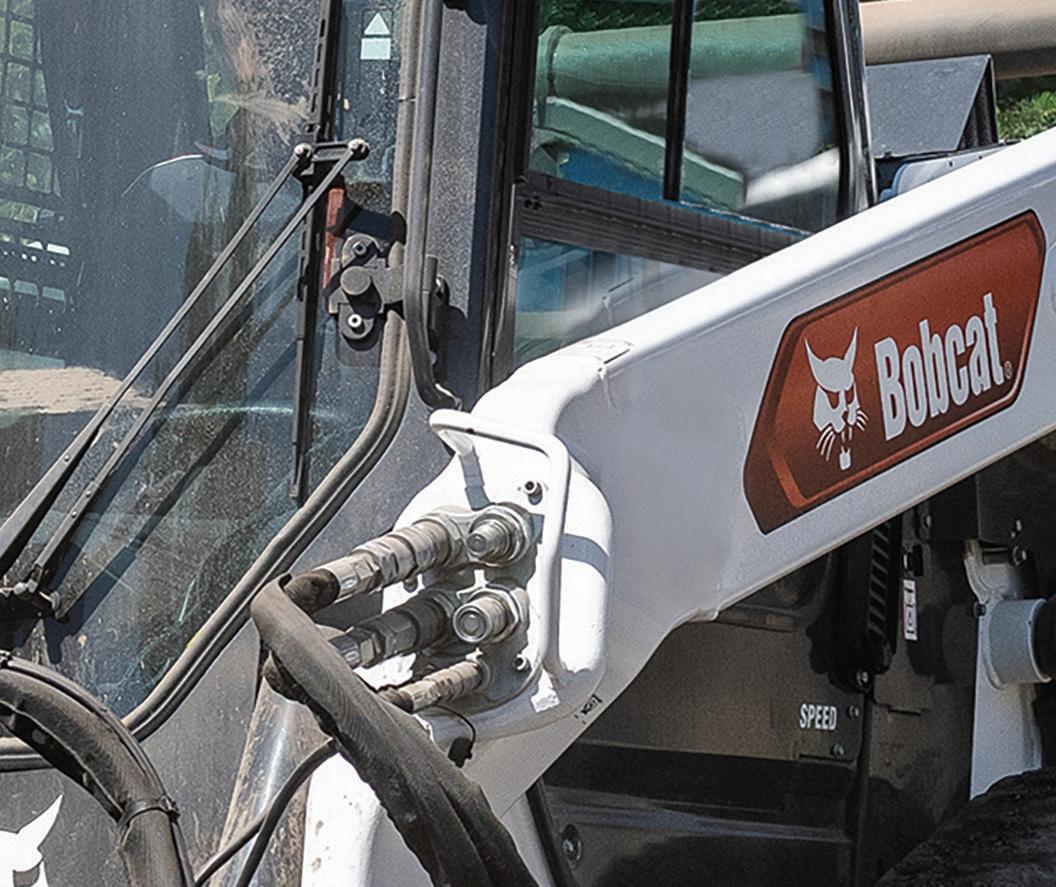













































We showed off a lot in Vegas this year. New features, new cabs, electrification, but across all of it, one thing stands out. For us, finished is never finished. Once something is done, we look to how we can do it better. That’s why when we decided to make our new excavators 100% ourselves, we told R&D to use our current production benchmarks as the numbers to beat. Because the work deserves it, you deserve it, and because we didn’t get into this business to settle for anything less.









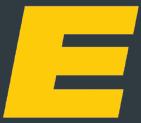


12
EARTHMOVING TRENDS
Data Upgrades to Fleet Maintenance
Data points are like puzzle pieces that when connected properly, can change the way you operate your business.
FLEET MANAGEMENT
Smart Compressors Adding Advanced Monitoring to Jobsites
Compressors are able to adapt operations to best suit the needs of a jobsite, especially with increased “smart” features.
FLEET MANAGEMENT
What to Consider Before Renting Generators & Compressors for Construction

Generator and compressor manufacturers lay out the trends rental companies should keep top of mind.
FLEET MANAGEMENT
Unlock Hidden Data to Improve Construction Fleet Efficiency With Telematics

The construction fleet industry has advanced in ways we previously would not have imagined.
Next Generation CTLs From CONEXPO Equipment manufacturers respond to high demand for land-clearing power and technology in easy-to-use compact track loaders.

BREAKING GROUND
New Editor-in-Chief Joins the Equipment Today Team Lori Ditoro becomes editor-in-chief after more than a year with OEM Off-Highway magazine.
EQUIPMENT INTRODUCTIONS
Check out the Latest Equipment Compact track loaders and other earthmoving equipment.

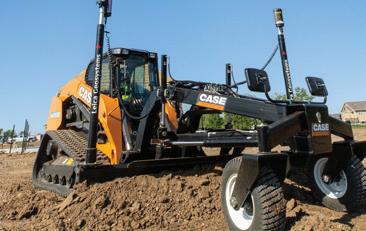
PROFIT MATTERS
Why Connected Construction Equipment is Hot in 2023 Machine control is being thrust to the forefront of construction technology.

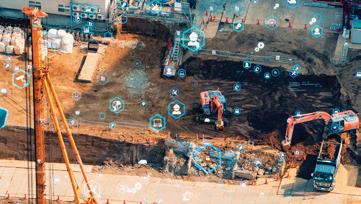
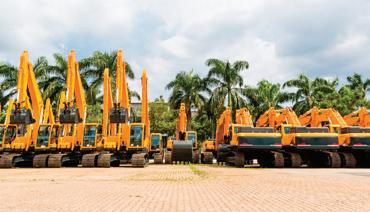
RUNNING THE BUSINESS
The Agony of Idle Equipment on a Construction Jobsite Poor controls cost you money two ways; loss of work and increase in costs.
EARTHMOVING TRENDS
Moving dirt with heavy equipment.
FLEET MANAGEMENT
Products to manage your fleets.
TECHNOLOGY
Mobile apps and machine control to optimize equipment and the jobsite.

VIDEO NETWORK https://eqtoday.co/k2p285
FLEET MANAGEMENT
Construction Fleet Sustainability Targets Find an Efficient Solution in Mobile Fueling
The hunt for solutions to decarbonize construction fleets is on.
FLEET MANAGEMENT
Reducing Equipment Carryback & Improving Hauling Efficiency
Carryback works against efficiency by reducing payload in the haul truck.
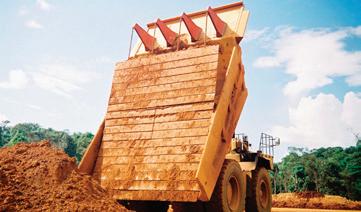
TECHNOLOGY
Construction Software X Factors
Moves by HCSS, Trackunit, Trimble, Procore and others are showing that when it comes to construction software, life is better with friends.
TECHNOLOGY
3 Ways to Add Technologies to Your Construction Site
The construction business has an enormous amount to gain from digitalization.


TECHNOLOGY
Is Technology the Key to Stronger Supplier Relationships? Strong supplier relationships are the lifeline of a successful construction business.

DIGGING DEEPER PODCAST https://eqtoday.co/s7sfkm
PREMIUM CONTENT https://eqtoday.co/9pd73s

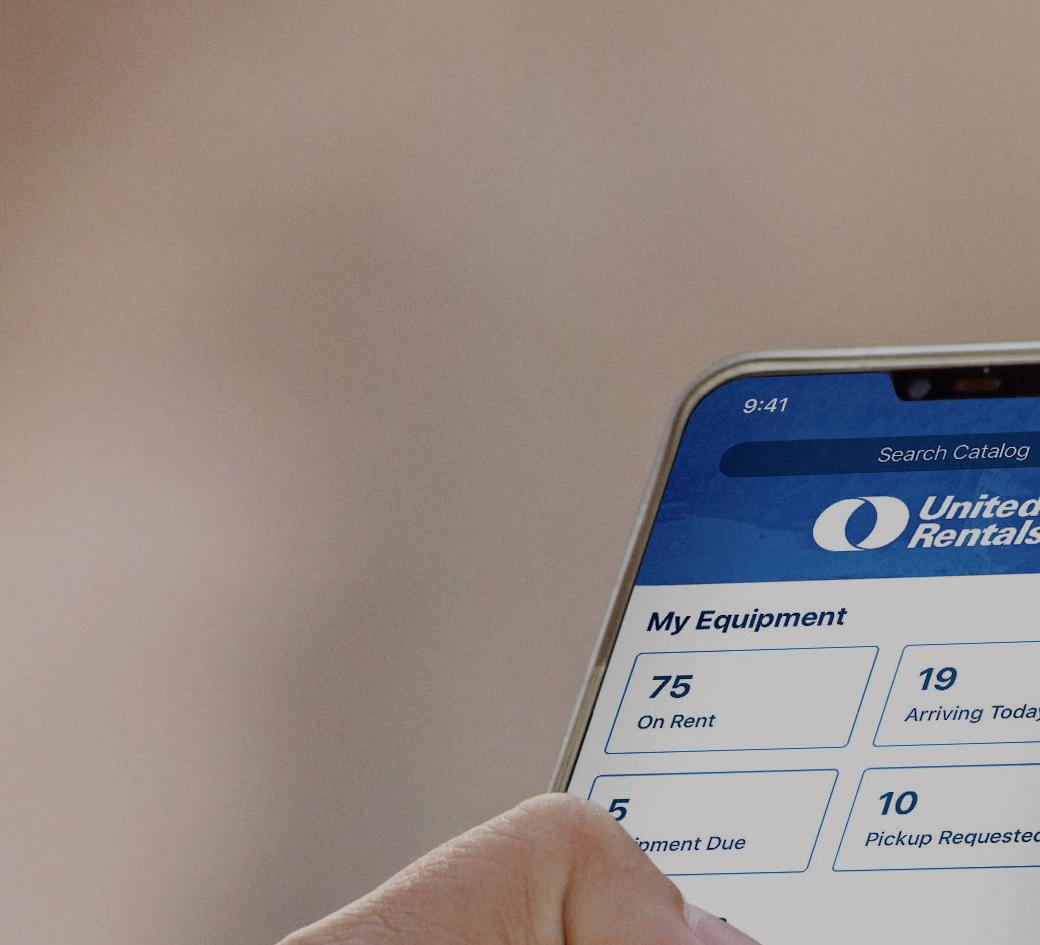












®
Lori Ditoro Editor-in-Chief Equipment TodayIam thrilled to be the new editor-in-chief of Equipment Today!
During my time as editor of OEM Off-Highway, I enjoyed learning more about the construction industry and the trends affecting it. I also gained knowledge about components and technology, and I expect that knowledge will help me share ideas about aftermarket additions to your fleets to improve efficiency, decrease emissions and help operators with their jobs. I look forward to sharing this knowledge with you, the readers of Equipment Today, and learn more about what these trends and tech mean for contractors with boots on the ground.
Before joining OEM Off-Highway, I worked as the marketing manager for SEPCO, a fluid sealing manufacturer focused on the industrial and municipal sectors. I was a content marketing strategist for Fluke Reliability, where I spent a lot of time learning about the reliability and maintenance world of industrial plants and facilities.
Prior to my content marketing roles, I was in editorial roles including editorial director of the Process
Flow Network, publishers of Water Technology, Processing, and Flow Control; editor of Pumps & Systems; and editor of Upstream Pumping.
Some of the trends affecting original equipment manufacturers (OEMs) are impacting contractors, too. A few examples are:
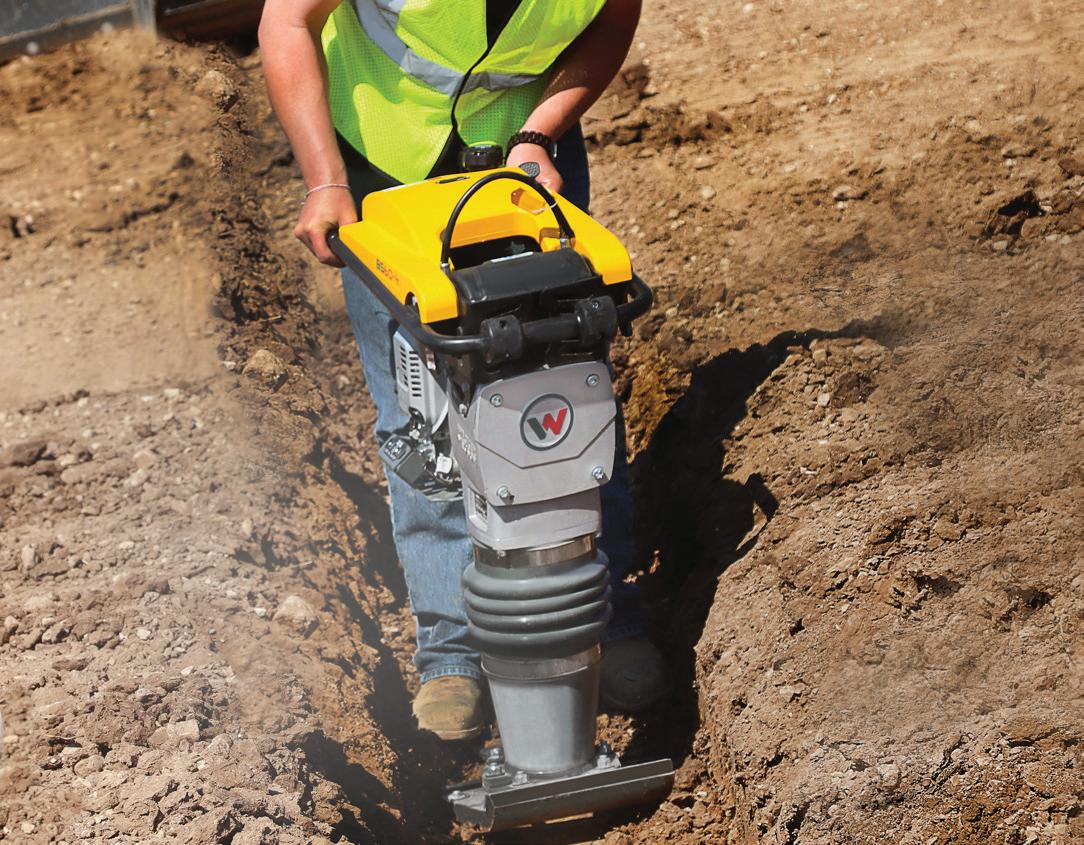

Decreasing carbon and particulate emissions
An aging workforce and workforce shortages
An unstable oil and gas industry
Supply chain slowdowns and disruptions
However, challenges bring disruption, and disruption often results in innovation. Innovations that the industry is embracing are alternative fuels for powering equipment, digital technologies to improve operations and efficiencies, and onboard telematics to maximize maintenance intervals and monitor equipment operations and operator activity.
Of course, we have been talking a lot about CONEEXPO-CON/AGG (CONEXPO), and the trends mentioned above were front and center during the construction industry’s main event. In the April issue, we included a comprehensive look at CONEXPO and Work Truck Week. If you missed it, you can check it out here: https://eqtoday.co/2p6a7h.
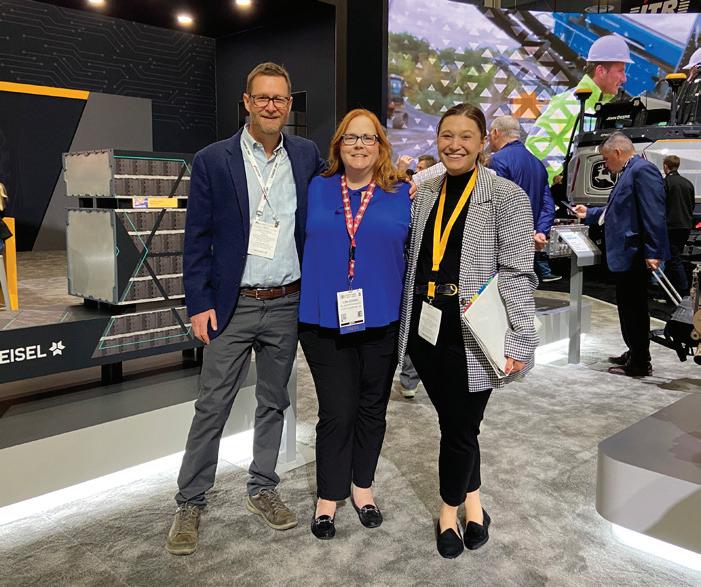
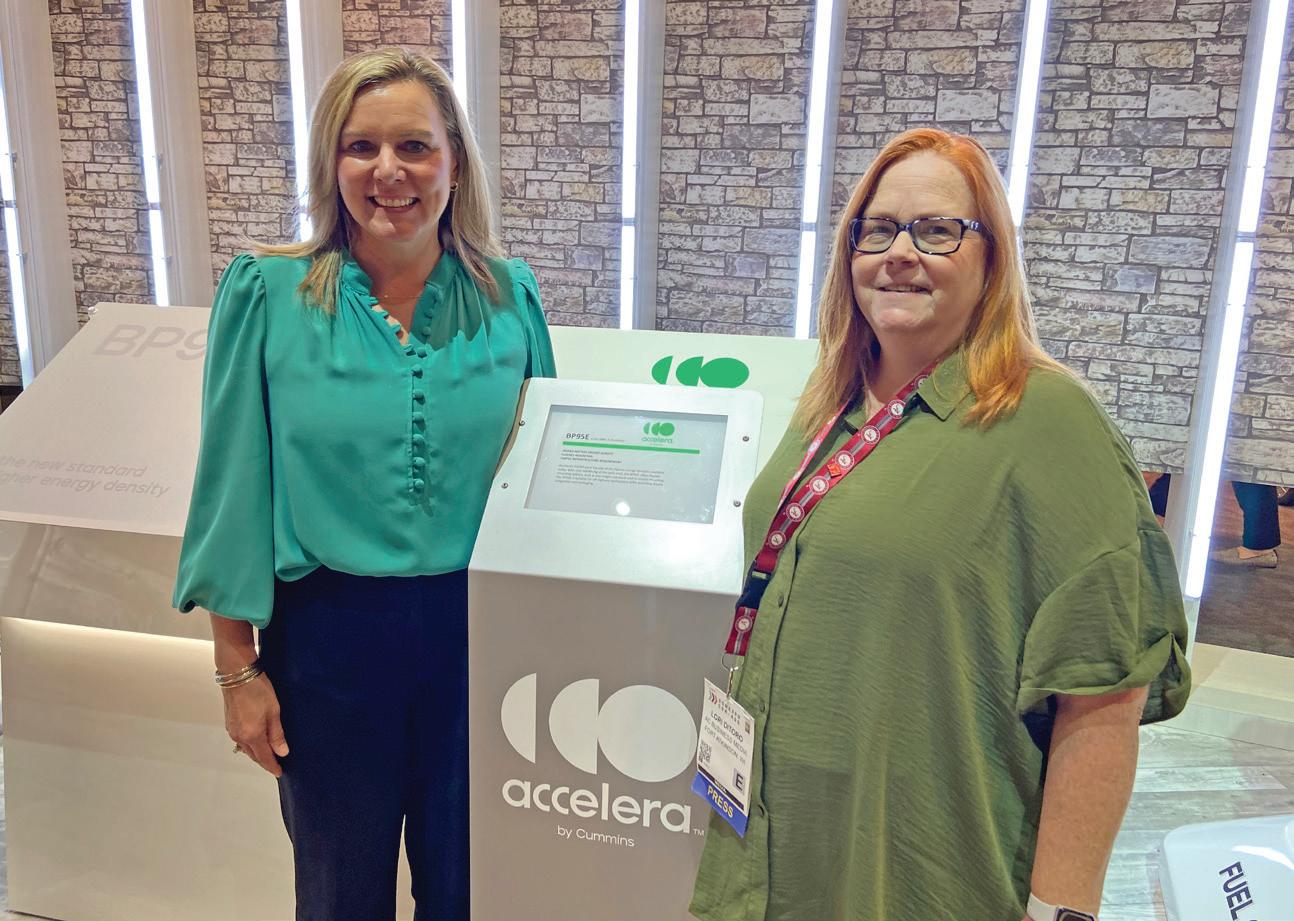
I look forward to learning and building upon my base industrial knowledge as our team continues to share valuable information with you, while we, likewise, receive information from you to inform us. I look forward to seeing where we are headed and sharing it all with our print and digital readers. If you have topics you would like covered, or questions for me, please reach out. I would love to hear from you and get to know you. Email me at lditoro@acbusinessmedia.com, or message me on Twitter using @LoriDitoro.
EDITORIAL
Editor-in-Chief Lori Ditoro lditoro@acbusinessmedia.com
Digital Content Director, IRONPROS Wayne Grayson wgrayson@acbusinessmedia.com

Managing Editor Gigi Wood gwood@acbusinessmedia.com



Technology Editor Charles Rathmann crathmann@acbusinessmedia.com
Editor, Construction Equipment & Product Michael Cheng mcheng@acbusinessmedia.com
AUDIENCE
Audience Development Manager Angela Franks
PRODUCTION
Senior Production Manger Cindy Rusch crusch@acbusinessmedia.com
Art Director April Van Etten
ADVERTISING/SALES
Brand Director Sean Dunphy sdunphy@acbusinessmedia.com

Assoc. Brand Director Nikki Lawson nlawson@acbusinessmedia.com
Sales Representative Kris Flitcroft kflitcroft@acbusinessmedia.com
Sales Representative Tadashi Soma tsoma@acbusinessmedia.com
Sales Representative Kristin Pride kpride@acbusinessmedia.com
Sales Representative Megan Perleberg mperleberg@acbusinessmedia.com
Sales Representative Greg Schulz gschulz@acbusinessmedia.com
AC BUSINESS MEDIA
Chief Executive Officer Ron Spink
Chief Financial Officer JoAnn Breuchel
Chief Revenue Officer Amy Schwandt
Chief Digital Officer Kris Heineman
Brand Director, Supply Chain & Green Industry Jason DeSarle
Brand Director, Construction Sean Dunphy
VP, Audience Development Ronda Hughes
VP, Operations & IT Nick Raether
Content Director Marina Mayer
Director, Online & Marketing Services Bethany Chambers
Content Marketing, Marketing Services Jess Lombardo
Director, Demand Generation & Education Jim Bagan CIRCULATION & SUBSCRIPTIONS
PO Box 3605 Northbrook, IL 60065-3605, Phone: (877) 201-3915 Fax: (847)-291-4816 circ.EquipmentToday@omeda.com
LIST RENTAL
Sr. Account Manager Bart Piccirillo, Data Axle 402-836-2768 | bart.piccirillo@data-axle.com

REPRINTS &

Assoc. Brand Director Nikki Lawson nlawson@acbusinessmedia.com
lditoro@ACBusinessmedia.com E @EquipmentToday D @EquipmentToday C @equipment-today-magazine-official Q @equipmenttoday
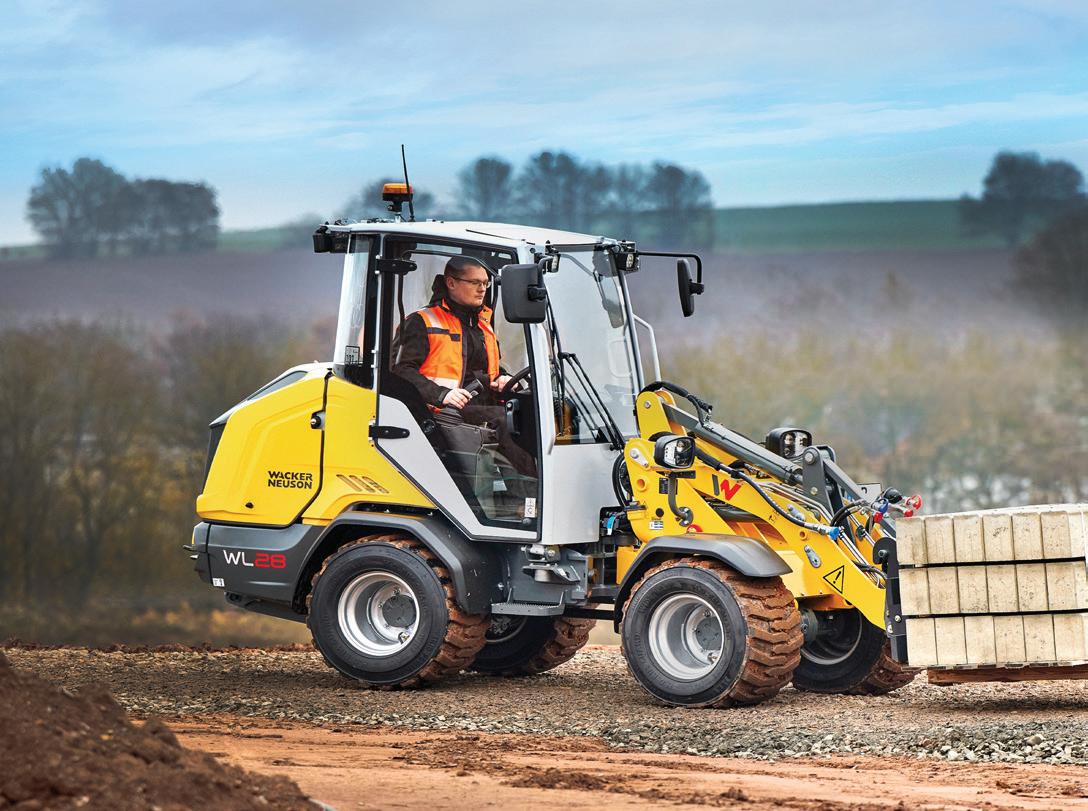
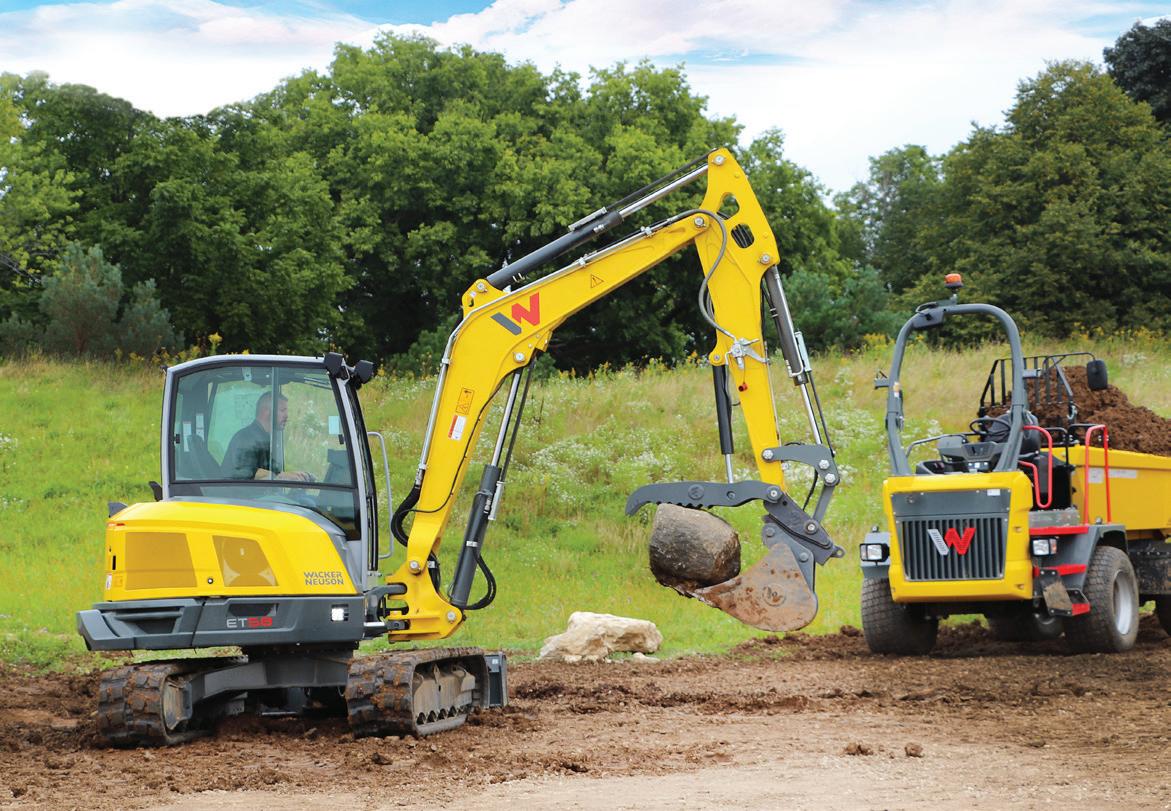
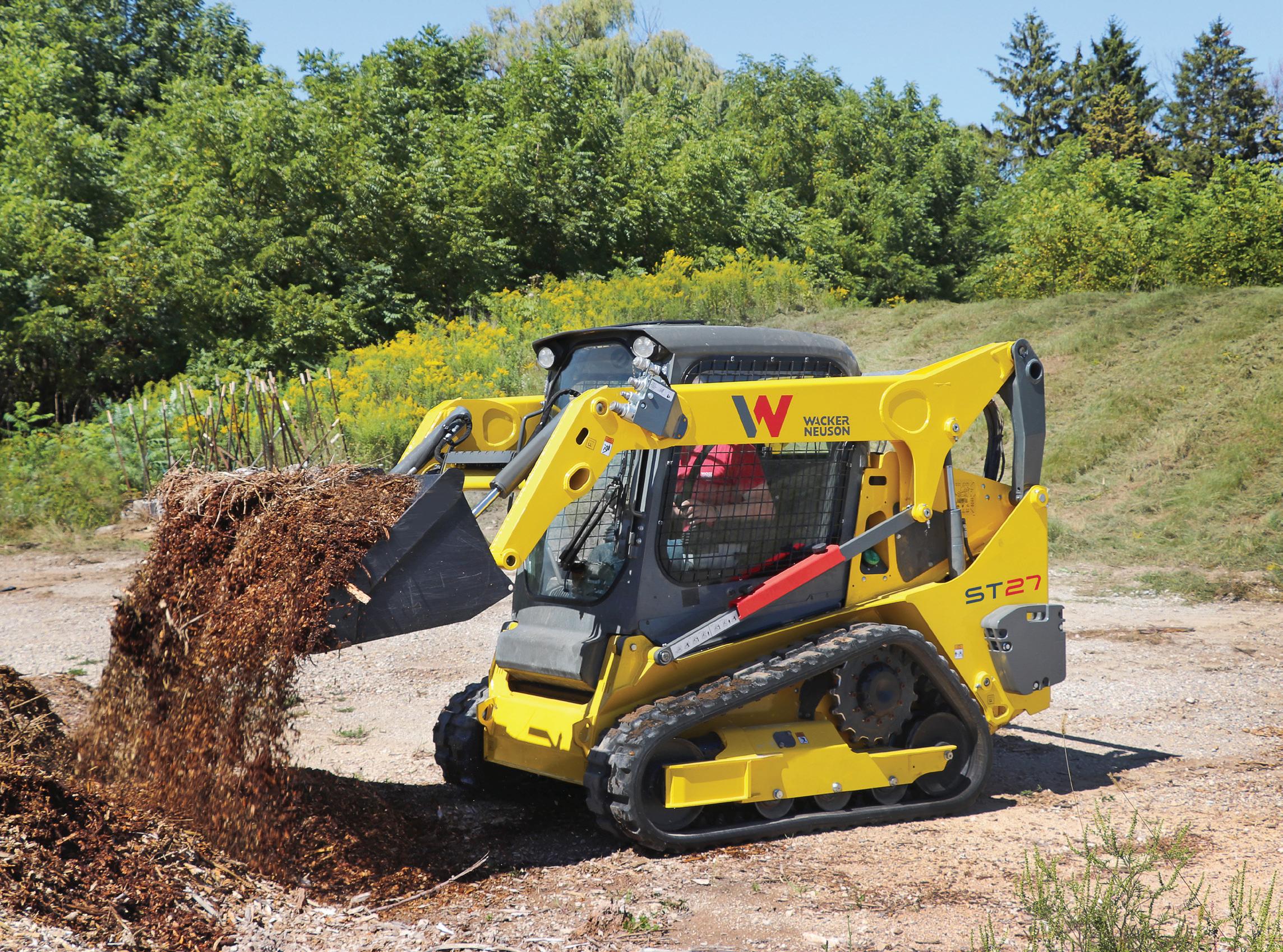

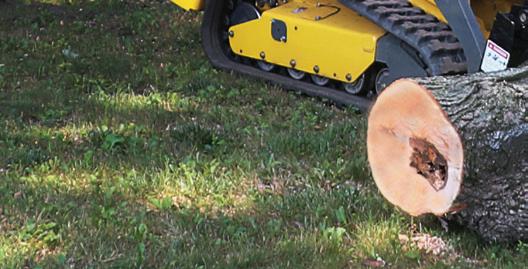



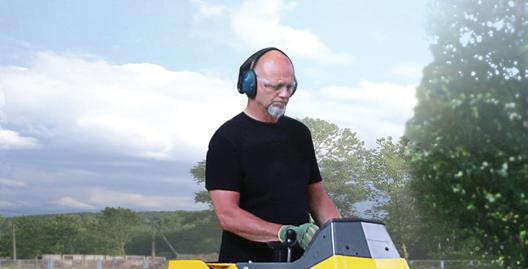



These pages feature some of the latest equipment available. For more information on these products, use the QR code shown.
Kubota Tractor Corp.'s SVL753 compact track loader is powered by a 74.3 hp Kubota engine with higher maximum torque, and features that include an Advanced Multifunction Valve (AMV) for simultaneous operation of all hydraulic functions, a new 7-in. color LCD panel with jog dial that puts a wide range of functions and information at the operator’s fingertips, and a new one-piece sealed cab, the SVL75-3 will be available at authorized Kubota dealers beginning in May 2023.
Read More at https://eqtoday.co/56qtfv

Caterpillar announced a range of new attachments available for backhoe loaders and mini excavators, increasing application versatility for these machines. The new models span the range of demolition and sorting grapples, multipurpose grapples for Cat tiltrotators, vibratory compactor plates and cold planers. Expanding the Cat Demolition and Sorting Grapple line, the new G306 and G308 models are specifically designed for 5- to 6-ton and 7- to 10-ton mini hydraulic excavators, respectively. With open and close functions controlled by the machine’s first auxiliary function and rotation head handled by the second, these grapples deliver fast and productive material handling with 360 degrees of bidirectional rotation. A slim design makes it easier to get into tight spaces, and material capacities range from 160 l (0.21 yd3) with the G306 to 240 l (0.31 yd3) for the G308. Vertical perforated shelves offer high wear resistance, positive penetration, good load visibility and easy positioning, while the oversized heavy-duty cylinder with load holding valve delivers constant clamping force, even when maneuvering the grapple or machine. Providing low maintenance intervals, the swing bearing features a single-ball heavy-duty, internally driven design.
Read More at https://eqtoday.co/fe3r1w

The new Kobelco SK350LC-11 features a 265-hp Isuzu Tier 4 Final engine to support lifting heavy loads and operating large tools. With redesigned boom cylinders, the SK350-11 can handle trench boxes. With the press of a switch, the machine dedicates one hydraulic pump to the travel system and one to all the other functions on a continuous basis. This allows the 11-series Kobelco machines to travel while having the ability lift and swing heavy loads. The SK350LC-11 has three working modes: Eco, S and H mode for balancing between high performance, economy and fuel consumption. The in-cab hydraulic pressure release function allows customers to change work tools or hoses safely. The machine’s 84,200-lb. operating weight provides stability in reach and lift situations. The machine’s side panels are thick, while the increased diameter of the bucket cylinder pin contributes to durability for using various work tools.
Read More at https://eqtoday.co/dk7ur7
Offering front-joint durability, the P-Tier mid-size models, including the 135, 210, 245, 250, 300 and 345, promote operator stability. With grease points at the arm-tip for accessible greasing, extended uptime and torque retention at the clamp, which reduces the likelihood of the front hydraulic pipes moving, the new P-Tier models were designed to provide performance and serviceability. The redesigned boomfoot bushings offer durability for an extended machine lifespan. The latest addition to the John Deere lineup of mid-size excavators is the 200 G-Tier. The PowerTech 4.5-l engine on the 200 G-Tier delivers performance for operators.

Read More at https://eqtoday.co/nksn2d

Tackle trench work and other compaction jobs with the remote-controlled Bobcat TR75 Trench Roller. Outsmart operator fatigue and get compaction results with the remote-controlled Bobcat TR75. The TR75 achieves compaction on a wide range of materials, including dense soils. The powerful TR75 is designed for a variety of compaction applications, including pipeline trench construction, commercial, industrial and residential development, structure backfill work, as well as electric and cable installation. With a tight turning radius, low center of gravity and an oscillating articulated joint, the TR75 is highly maneuverable and maintains more complete contact on uneven ground.
Read More at https://eqtoday.co/ztwemg
Available in late 2023, the TL100 has a rated operating capacity of 1,000 lbs. (35% of tipping load). The 25-hp CASE TL100 features hydraulic pilot controls (ISO pattern) and a standard auxiliary hydraulic setup of 13 gpm and 2,700 psi. Attachments connect through a common industry interface (CII) compatible with most major manufacturers of MTL attachments. Optional equipment will be a 14-pin front electric connector that includes a hydraulic case drain circuit, multiple track widths, additional counterweights, hydraulic oil and multiple bucket options. The CASE TL100 MTL will become available in late 2023.

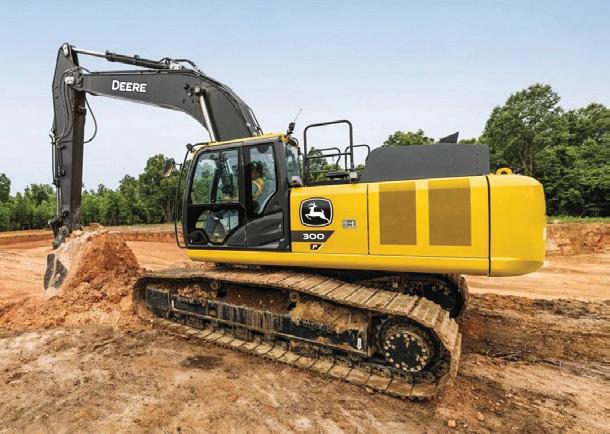

Read More at https://eqtoday.co/xqrpal

The excavator is designed for heavy construction, demolition, material handling, deep sewer, water, large mass excavation and mining or quarry. The 842-hp PC900LC-11 was featured in Komatsu's booth at CONEXPO-CON/AGG 2023. The PC900LC-11 offers major design enhancements compared to the earlier model. The new counterweight removal system helps with moving and the boom configuration reduces transport height. A new service pass through area allows access to filters, oil level checks and sample ports. The major structures, booms and arms, with a redesigned revolving frame, were engineered for longevity. To help operators with situational awareness, tools such as the KomVision camera system come standard on the PC900LC-11. KomVision is a 360-degree monitoring system that uses six cameras for a real-time view of the surroundings. Smart Construction 3D guidance and payload monitoring are other available options.
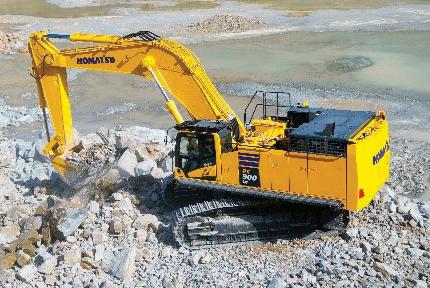
Read More at https://eqtoday.co/99se5w

This 43,652-lb. (19,800-kg) excavator offers a 23-ft., 2-in. (7.07-m) maximum digging depth and 28,551-lb. (127-kN) bucket breakout force. The HIOS IV hydraulic system minimizes hydraulic loss. The HIOS IV hydraulic system features a responsive boom, arm and bucket with intuitive control. On the ZX190LC-7, the system produces a maximum flow rating of 100 gpm (380 lpm). Attachment, arm and swing priority can be adjusted on the monitor to match the attachment or the operator’s preference. A Yanmar engine’s output is 132 hp (98.6 kW). The Yanmar power system features economy, power and high-power modes to match available power to the working conditions. An auto idle system with auto shutdown control prevents wasted fuel.
Read More at https://eqtoday.co/itaxl8
This 1.7-ton machine is a zero-emission solution for indoor applications and in areas where noise and exhaust are a concern. The EZ17e mini excavator offers zero emissions and reduced maintenance. With its minimal-tail swing design, it has a maximum digging depth of 97.7 in., a breakout force of 4,608 lbs. and the ability to run auxiliary attachments such as hydraulic breakers. The lithium ion battery offers all-day run time and can be recharged using a common 240-V, single-phase outlet. Charge time is between five and six hours.
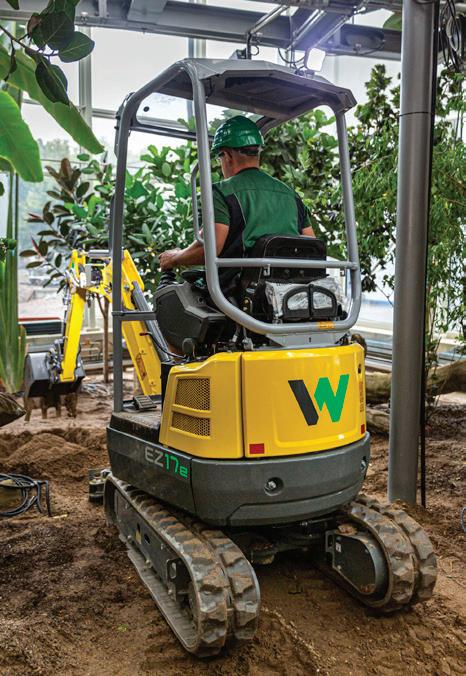
Read More at https://eqtoday.co/6p7v2a
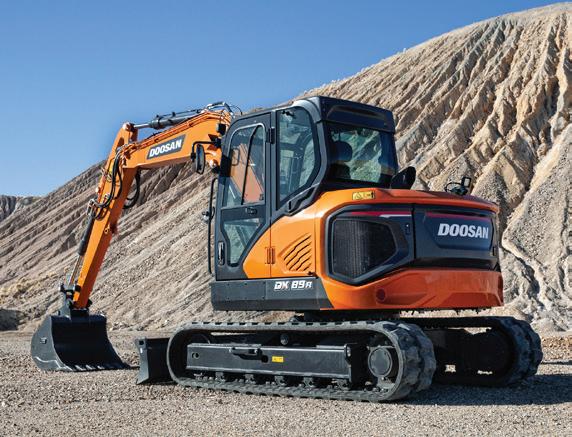
The new DX89R-7 mini excavator replaces the DX85R-3 and features greater lifting capacity and more horsepower. The mini excavator has a reduced-tail-swing feature, permitting more power in cramped, congested worksites. Powered by a Tier 4-compliant D24 diesel engine offering more horsepower, the DX89R-7 provides increased productivity from its predecessor. Auxiliary hydraulic flow remains readily available. An increased machine operating weight and the excavator’s new counterweight design provide better stability for increased lifting capacity:
• Horsepower: 65 hp at 2,100 rpm (48.5 kW)
• Operating weight: 21,005 lbs.
• Maximum digging depth: 13

ft. 6 in.
• Maximum digging reach (ground): 22 ft. 6 in.
• Maximum loading height: 15
ft. 5 in.
• Travel speed: 1.8-3 mph
Read More at https://eqtoday.co/k9tik4

The new HT Series model features a Tier 4 Final compliant Hyundai engine that provides power while meeting emissions standards. The new compact track loader is powered by a Hyundai HTI4 four-cycle, turbocharged, electronically controlled diesel engine. The new engine, designed and manufactured by Hyundai, meets Tier 4 Final and E.U. Stage V emissions standards and deliver 70 net hp (52 kW) at 2,200 rpm. The Hyundai HT100V has a rated operating capacity of 2,300 lbs. (1,220 kg) and its heaped bucket capacity is 0.58-yd3. Standard features include a multifunction joystick enabling operators to control all machine functions with their hands only; a vertical lift path that allows the boom to raise the bucket straight up to full height for stability, less spillage and lift height and two-speed travel enabling movement around the jobsite.
Read More at https://eqtoday.co/0zx91z
InSite Software's InSite Elevation Pro features a slope to daylight tool for construction designs, including excavation projects. The slope to daylight tool allows estimators to turn incomplete data into a manageable surface and create intermediate surfaces for foundation excavation, vaults, road construction, phasing and trenching. Configurable settings available in the slope to daylight tool include the following: Slope Up, Slope Down, Direction, Side, Miter Corners and Maximum Run. This tool adds surfaces to rough designs lacking data. The design can be exported to GPS machine control devices found on construction vehicles.
Read More at https://eqtoday.co/aje1nq
These pages feature some of the latest equipment available. For more information on these products, use the QR code shown.

The new VT-100 compact track loader (CTL) is a vertical-lift machine for loading and grading applications in landscaping and construction. The VT-100 Forestry is designed for mulching, right-of-way clearance, site prep and more. The models include visibility and performance features. ASV’s VT-100 and VT-100 Forestry come equipped with a 103.5-hp Tier 4 Final Yanmar diesel engine and standard 40-gpm high flow. The CTLs’ large line sizes, hydraulic coolers and direct-drive pumps transfer flow and pressure directly to the attachment and reduce power loss. The VT-100 features a 3,500lb. rated operating capacity and 10,286-lb. tipping load while the VT-100 Forestry includes a 3,700-lb. rated operating capacity and a 10,571-lb. tipping load. The models feature ASV’s patented PosiTrack rubber track suspension. The dual-level suspension of the VT-100 and VT-100 Forestry features both suspended wheels and axles, allowing it to manage various terrain.
Read More at https://eqtoday.co/j2xcsr
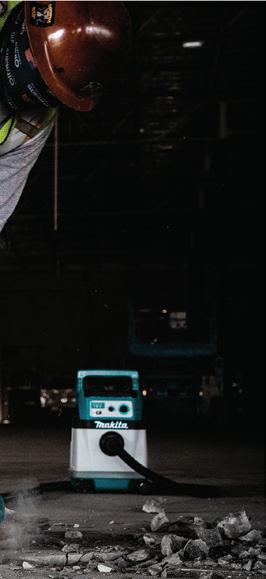
This multi-camera perimeter detection system features AI object and audio recognition, livestreaming video and continuous security recordings. The self-contained, solar powered unit is designed for safety and security in locations ranging from single store exteriors to parking lots in malls. The AI Safety Trailer generates essential alerts for security, vandalism and theft detection based on visual or auditory triggers. AI audio analysis recognizes specific sounds. AI object detection recognizes specific vehicle types or unauthorized interactions with equipment or vehicles. A user-controllable pan-tilt-zoom camera can be used to investigate specific areas of the site in real-time. The perimeter detection system uses twoway audio “talk down” capabilities, LED strobes and sirens to act as deterrents. Alerts may be sent to EarthCam’s Central Station Monitoring (UL Listed, Five Diamond CSM) where trained professionals review the incident, assess the risk and dispatch law enforcement as necessary.

Read More at https://eqtoday.co/erusyg


Ignite Attachments offers the General Purpose Bucket attachment for construction work vehicles, including skid steers and track loaders. This 50-in. bucket can be used for light-duty grading and leveling applications, as well as material handling. During use, the bucket combines reliable breakout force and a longer bottom for increased capacity and visibility to the cutting edge. It features a round back design for loading and cleanout, as well as a low heel to support cutting to grade and back dragging. The attachment has thick walls with weld-on side cutters that promote bucket strength. Operator guidance is facilitated by dual level indicators. Operating weight is 223 lbs., length is 30 in., width is 50 in., height is 19.9 in.; ISO heaped capacity is 8.5 cu. ft.
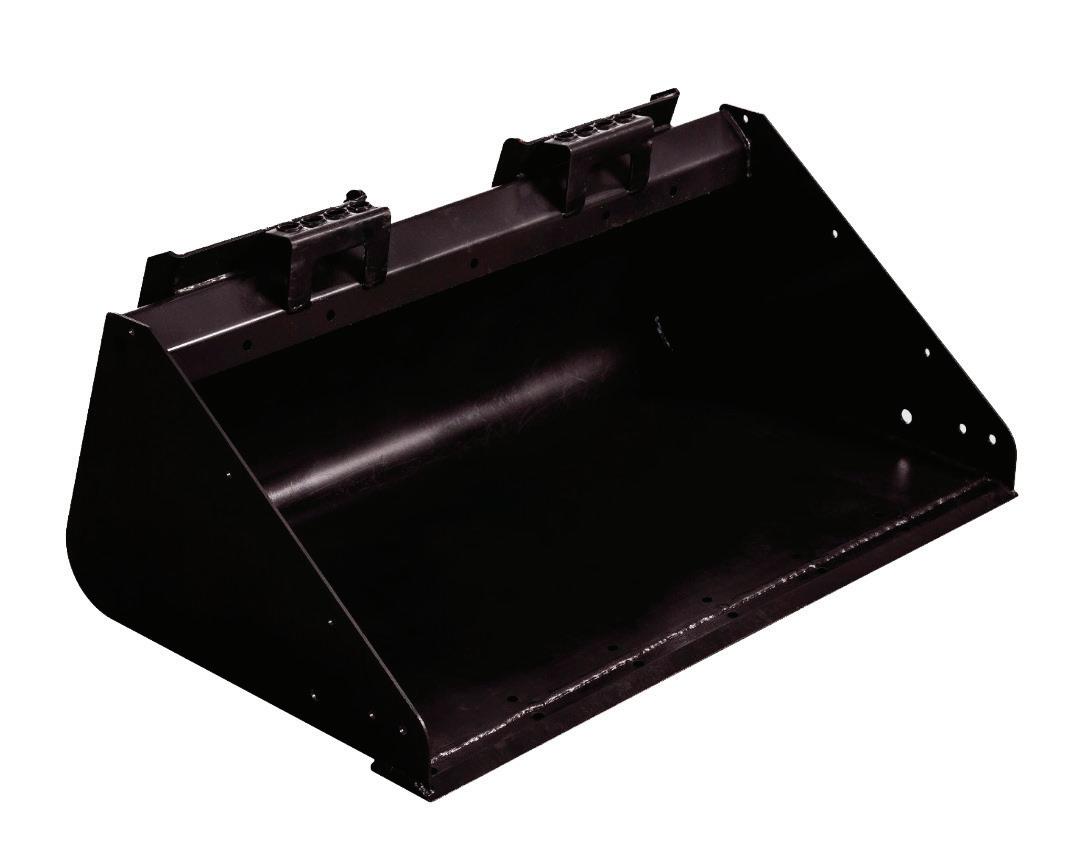
Read More at https://eqtoday.co/zfshbv
RIDGID introduced the SeeSnake Mini Pro Inspection Camera with TruSense Technology for pipe inspections and assessment. The compact, rugged Mini Pro is designed to inspect up to 200-ft. of 1.5- to 8-in. pipe with its mid-flex push cable that can navigate hard 90-degree bends. Its innovative 25-mm digital self-leveling camera always keeps the in-pipe image upright and is shorter than the traditional 25-mm camera head. TruSense establishes a two-way datalink between the camera head and a TruSense enabled monitor. With TruSense, advanced sensors on the camera head convey information about the in-pipe environment, including the high-dynamic range (HDR) image sensor that offers bright, clear in-pipe imaging in difficult lighting conditions.
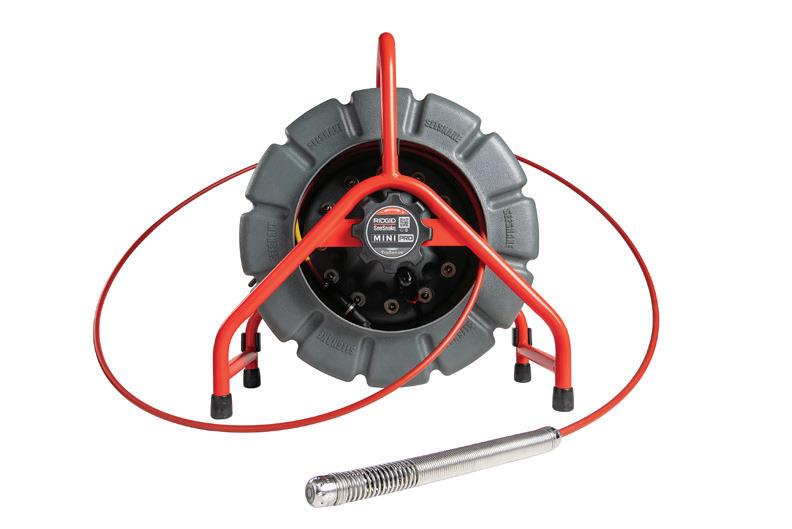
Read More at https://eqtoday.co/gvazdb
Yanmar Compact Equipment has introduced the TL100VS, the first machine in its new compact track loader line. The TL100VS comes equipped with a 103.5-hp Tier 4 Final Yanmar diesel engine and standard 40-gpm high flow for performance capacity on the jobsite. Paired with a 3,600-lb. standard operating capacity and 10,286-lb. tipping load, the TL100VS is available in Yanmar Premium Red color. Travel speeds up to 8 mph round out the performance features, while 4.5-psi ground pressure allows performance on sensitive, unstable surfaces. The TL100VS improves operator experience with premium 360-degree visibility and a 7-in. color display. Operators can access a standard suspended seat and a removable roof hatch escape inside the cab.
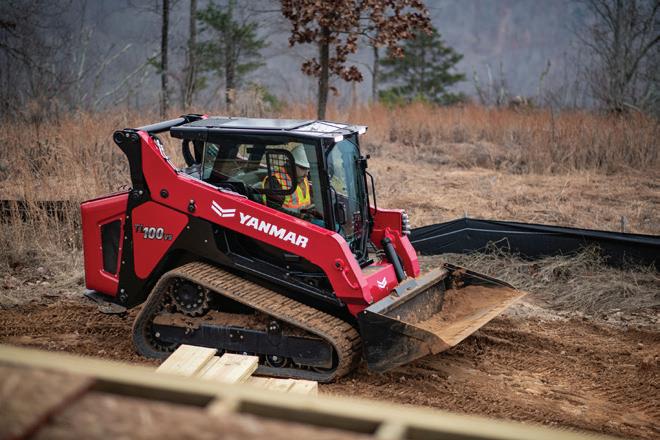
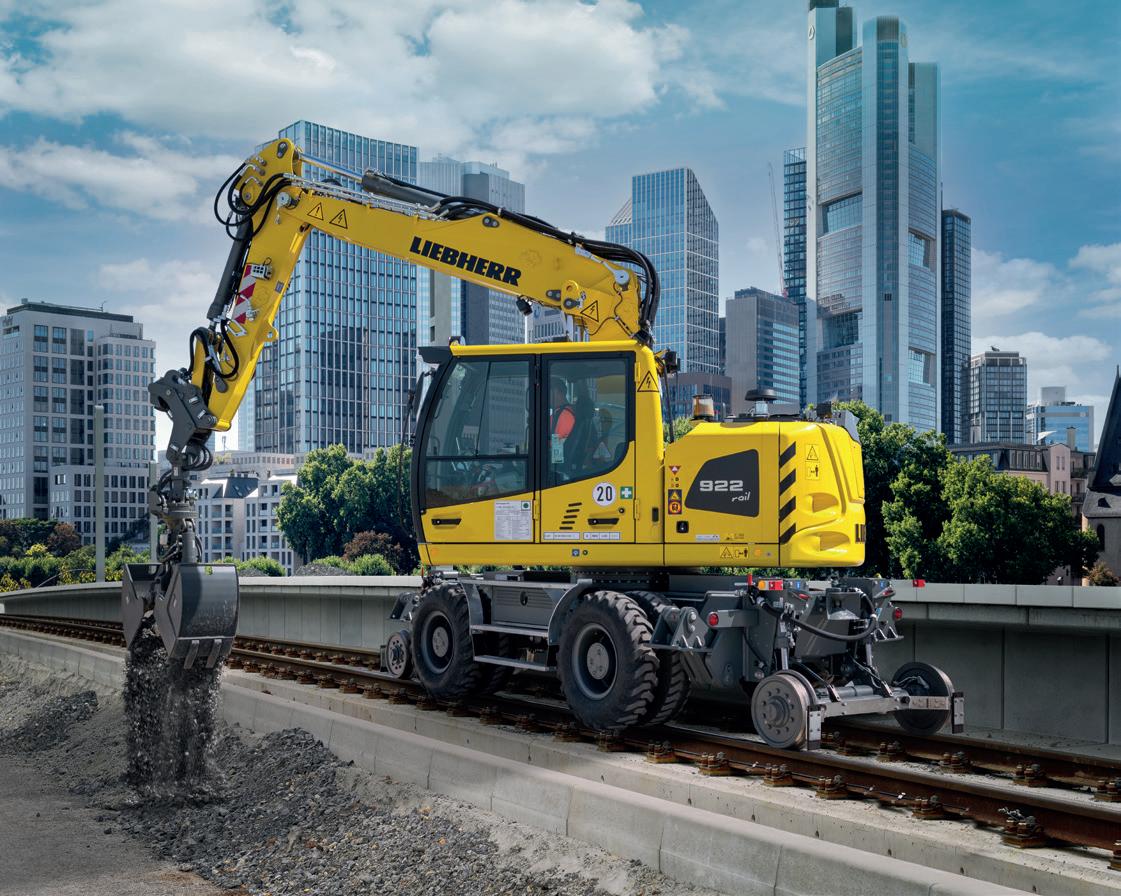


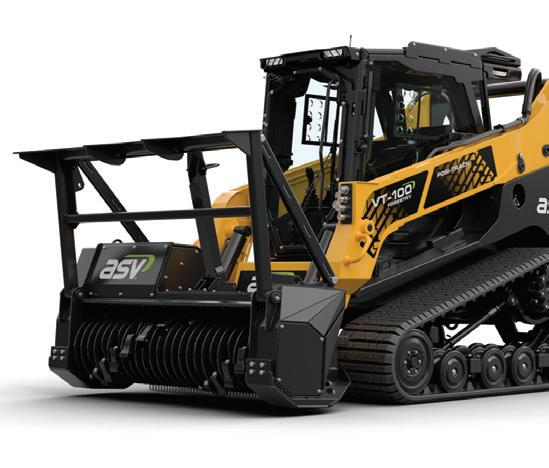
Read More at https://eqtoday.co/hcp69m

The 80-V max (40-V max X2) XGT Brushless 28-lb. Demolition Hammer (GMH02Z, tool only) is a cordless concrete solution designed for heavy-load applications. It delivers the power, speed and run-time for corded demands, without the cord. The demolition hammer delivers up to 15% faster breaking than the equivalent HM1213C corded hammer. Designed to accept SDS-MAX bits, the tool features Anti-Vibration Technology (AVT) for reduced vibration. AVT is an internal counterbalance that uses air pressure to move counterweight pistons in the opposite direction of the drive piston to actively reduce vibration. For added durability in harsh jobsite conditions, Extreme Protection Technology (XPT) is engineered for dust and water resistance.
Read More at https://eqtoday.co/rt3c0e





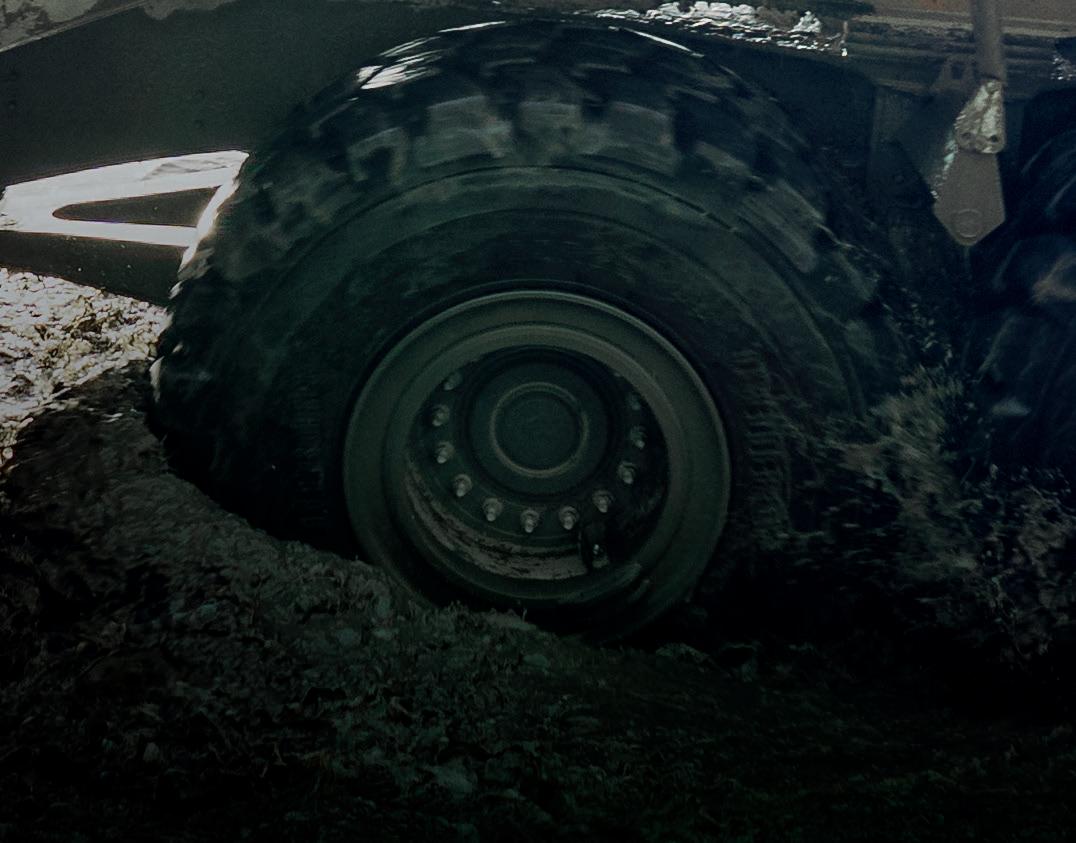
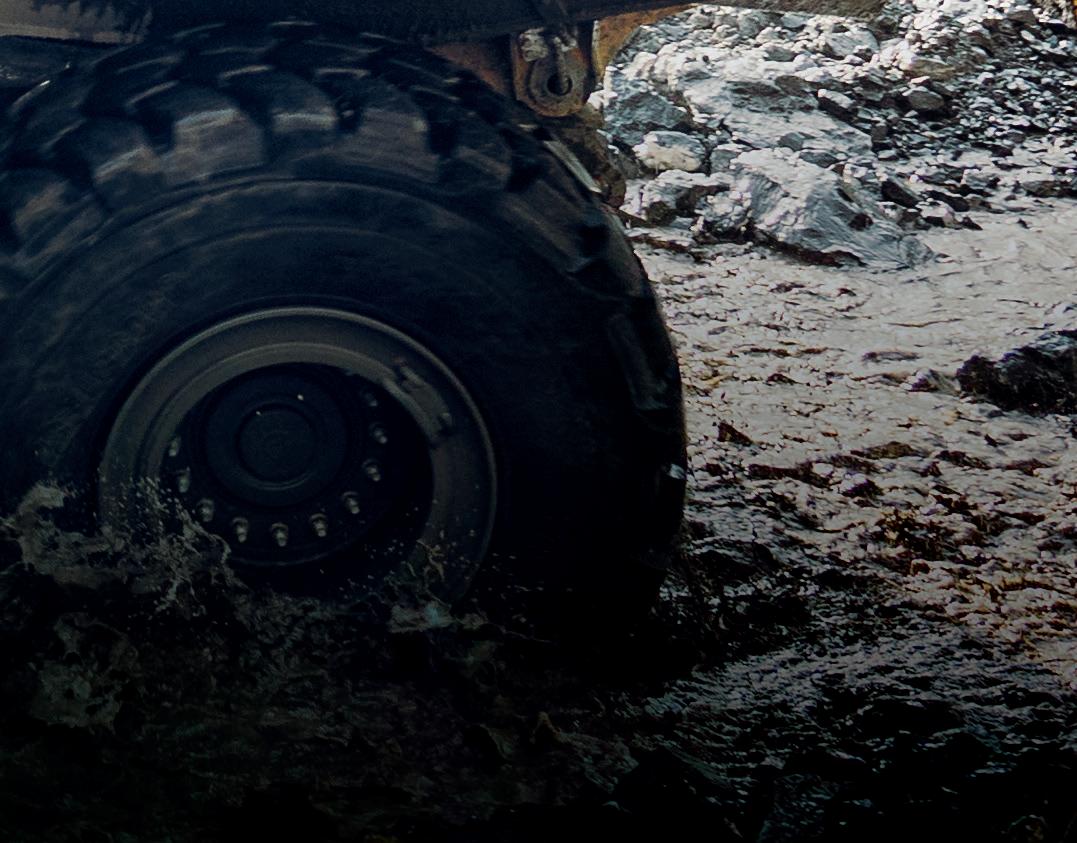

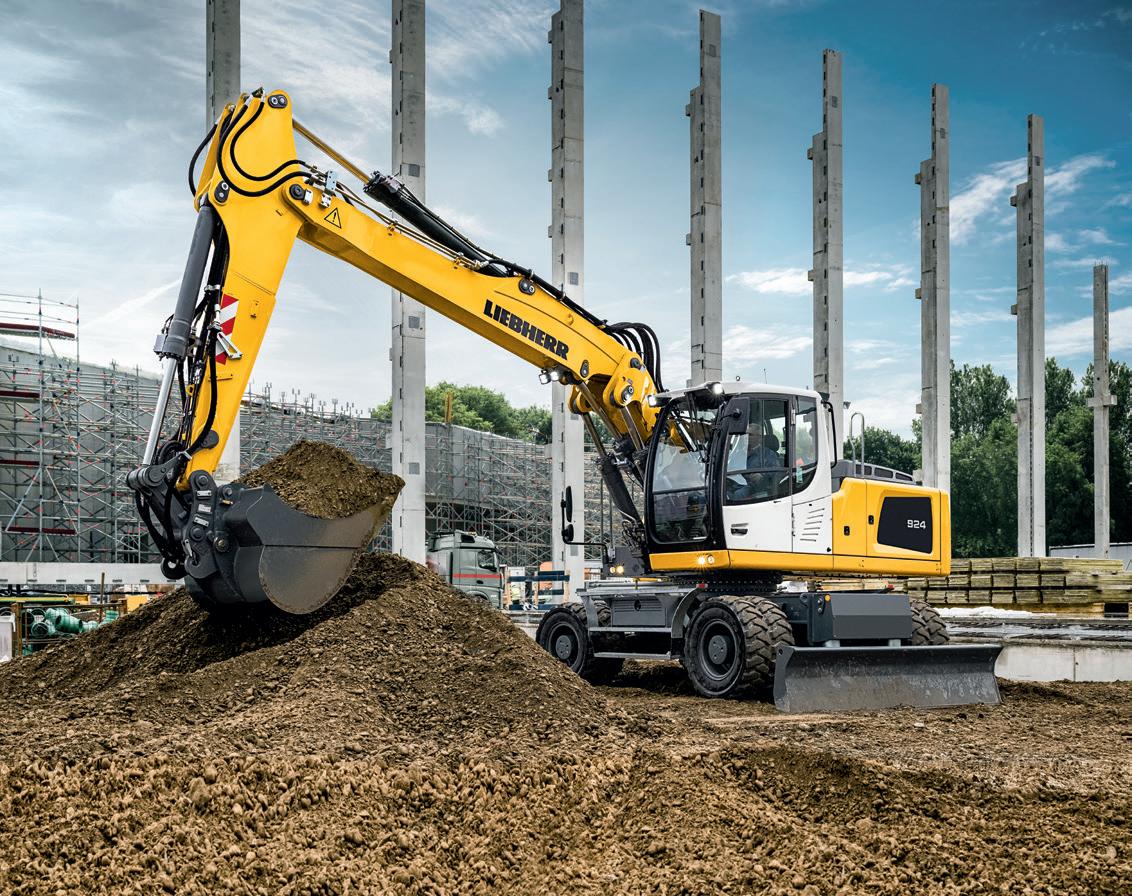




Manufacturers spent years honing technology
to allow contractors to do more with less, to more quickly train new workers and to find ways for construction companies to complete projects more effectively and with fewer emissions.
Of all the new construction heavy equipment product launches at CONEXPO-CON/ AGG, one of the hottest product categories was the compact track loader (CTL). Equipment makers have revamped and upgraded the design and technology of their existing models, and many showcased entirely new machines. The clamor to create the latest generation of CTLs was sparked by an industry need for equipment that is easy-to-use for new
operators and powerful enough for land-clearing construction jobsites.
“We’re seeing more and more customers, big and small, looking to push the limit when it comes to what a CTL can do on a jobsite,” said Luke Gribble, solutions marketing manager for John Deere. “They’re asking for a solution that can push more dirt, can grade more accurately, can run hydraulic attachments a lot more efficiently and effectively, and are utilizing bigger and
more complex attachments, too, with that.”
The entire industry is seeing an increase in CTL use and buying. Market research firms predict CTL market demand to increase 5% to 10% throughout the next decade. Equipment makers are creating many improvements to CTLs, which are known for their low ground pressure and task versatility, to increase sales at a compound annual growth rate (CAGR) of 5.2% by 2031 globally,
according to Transparency Market Research. While the market reached about $3.2 billion in sales in 2022, it’s expected to grow to $4.8 billion by 2032, a CAGR growth rate of 3.8%, according to market research firm Fact.MR. Meanwhile, TechSci Research predicts the CTL and skid steer segment will grow at a CAGR of 10% by 2026 due to demand, stating that CTLs

dominate the market and the trend is likely to continue due to broad uses of the equipment.





Most construction heavy equipment producers told Equipment Today that they are seeing increased demand for larger CTLs. Contractors are turning to CTLs more often because they are easy for new operators to learn, during a time when the industry is short 546,000 workers, according to Associated Builders and Contractors. Versatile compact equipment also allows contractors to do more with less.
Deere introduced its largest-ever CTL at CONEXPO, the 118-gross-hp 335 P-tier with load-sensing hydraulics. The 335 will be available in early 2024.
“Traditionally, what we see is that skid steers and CTLs are easier to operate. They're more comfortable in the field for new operators,” he said. “They're not as intimidating to operate as some other ... equipment. I think that's attracting a lot of customers into utilizing a CTL more on their bigger jobs, instead of more of a secondary
piece of equipment. And you can utilize more attachments on the machine, instead of having multiple machines. That's another shift that we're seeing in that space, which is why we're putting such a focus on attachment performance.”
CASE, which introduced the world’s largest CTL, the 16,000-lb. TV620B, in 2021, displayed different CTL sizes at CONEXPO this year, debuting the TL100 mini track loader with an operating capacity of 1,000 lbs. The medium and larger frame CTLs are getting a lot of attention at CASE. Part of the reason behind the popularity of the larger CTLs is the “cool” factor, said Jeff Jacobsmeyer, product manager at CASE Construction Equipment.
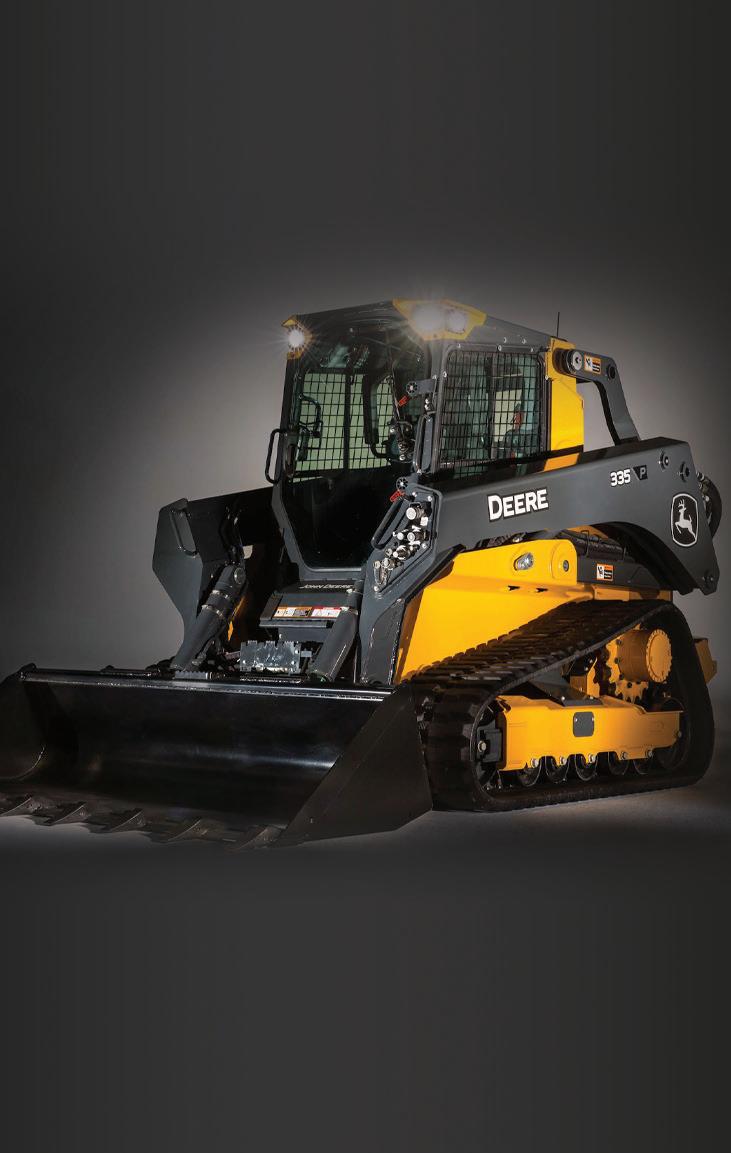
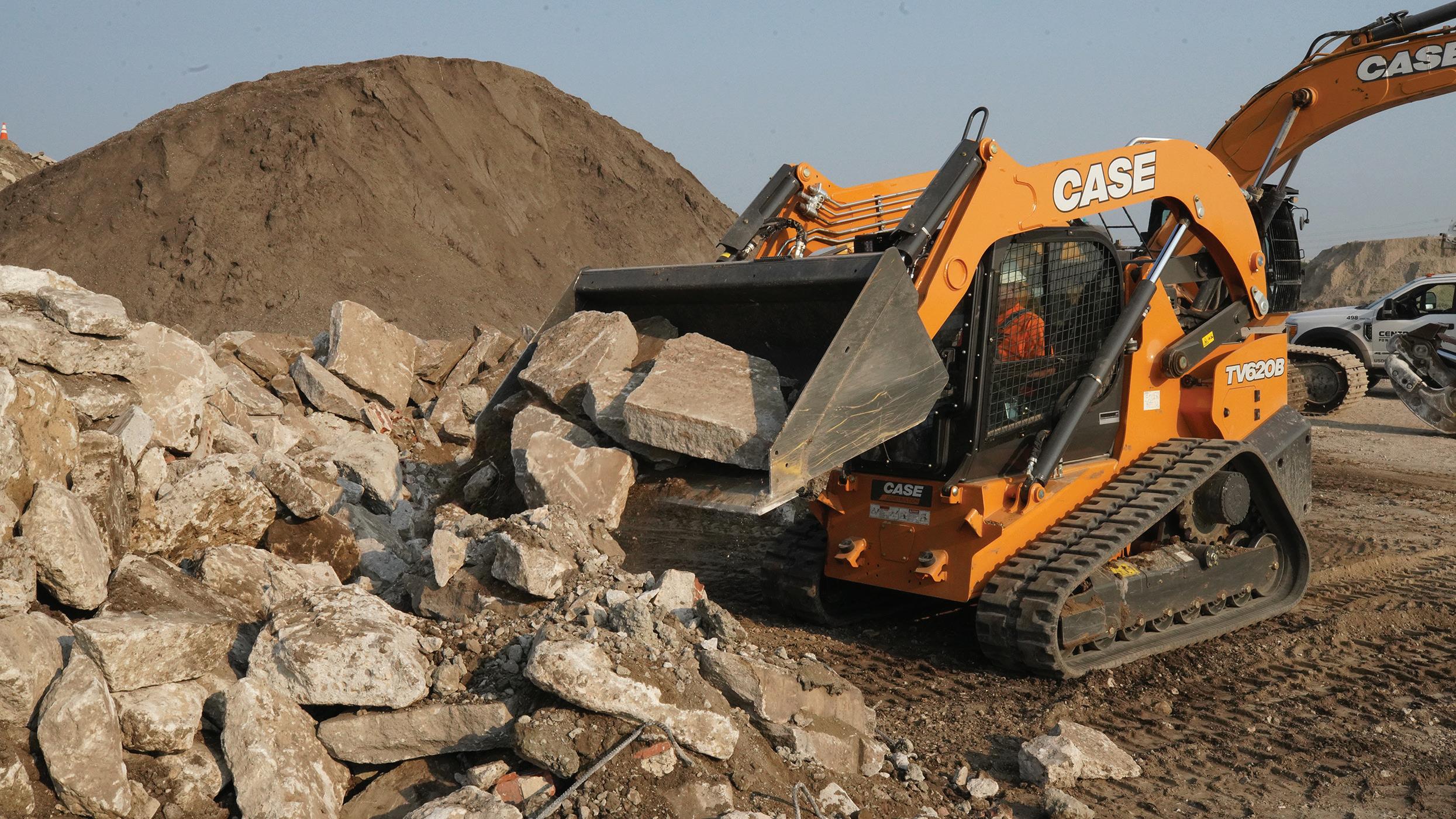
“I think we all like to think we have a sense of self control, but like many other things in life, you see the biggest and baddest tool, and you want it,” he said. “So you may not need more horsepower, and you may not need a CTL that weighs more than 16,000 lbs., and you may not need all that auxiliary hydraulic power, but you definitely want it. That is certainly part of the phenomenon that has contractors looking at larger, more powerful equipment.”
There are several reasons for bringing a larger machine into the fleet, such as growing a business, he said.
“A machine like the TV620B may be more machine than you need today, but as you
grow your business, it has the ability to load larger trucks, lift heavier loads, run more demanding attachments –you’re essentially specifying that added performance into your business growth and development,” Jacobsmeyer said. “Having said that, medium frame CTLs offer the best of both worlds: machines with strong hp and operating capacities, as well as machines with lower hp ratings that deliver even more simplified maintenance, while still delivering great performance and capacities. Between size classes, lift geometries, rated operating capacities and attachment strength, there are many great options in that medium-frame size class.”
Larger CTLs also perform well for grading and material-handling, said Kevin Coleman, product specialist at Caterpillar.
“Many customers are also looking to the larger, high-hp CTLs to deliver high performance and productivity when paired with high performance hydro-mechanical attachments,” he said. “The larger models have grown in popularity due to customers finding new ways and applications in which to use the larger machines with the higher load handling and hydraulic horsepower capabilities. The larger, more powerful CTLs deliver a machine and attachment combination designed to bring unparalleled speed and quality when paired with tools such as mulching heads or cold planers/ milling heads.”
At Doosan Bobcat, mid-frame CTLs are the long-term market driver, but there is also demand for large-frame models, said Julie Portillo, loader marketing manager.

“A variety of CTL sizes will continue to be in demand because they are among the most versatile tool-carrying, multipurpose machines available on today’s jobsites,” she said. “The increased floatation provided by their track systems makes them ideal on a wide range of jobsites with soft ground surfaces such as sand, mud and clay. With their weight distributed throughout the track and ground contact area, CTLs can travel across uneven ground more efficiently and are better at maneuvering through softer ground conditions.”
Specific jobsite needs also drive the larger CTL trend, said Ryan Anderson, product marketing manager for New Holland Construction North America.
“As subdivisions get smaller with tighter property lines, the need and demand, for medium-frame CTLs grows,” he said. “Overall trailer weight is also something that is constantly on customers’ minds. If they can get the same job done with a lighter, medium-frame machine, customers will do
A machine like the TV620B may be more machine than you need today, but as you grow your business, it has the ability to load larger trucks, lift heavier loads, run more demanding attachments," said Jeff Jacobsmeyer, product manager at CASE.
requirements,” she said. “This allows them to maximize the attachment performance and gives them precise control of the loader’s movements.”
when you’re running some of those really high- low, high-pressure attachments, the machines were able to more capably run them.”
One of the most popular aspects of any CTL is its ability to work in compact spaces and switch out attachments quickly. Equipment makers are rapidly growing their attachment portfolios to meet growing demand from owners and operators. Land clearing, grading and excavation are primary jobsite applications when it comes to the development of advanced attachments, and with it, comes improved hydraulics.
“Using any of the many attachments on a CTL is the definition of versatility,” Caterpillar’s Coleman said. “Not only can you finish grade with the machine, but you can do an innumerable amount of other tasks by simply changing the attachment connected to the machine. Other, more dedicated grading pieces of equipment do not provide that versatility for maximum asset utilization. Speed is also an advantage over other pieces of equipment.”
CTLs tend to be nimbler than dozers and Cat CTLs come with the company’s Smart Technology, which is designed to offer easy integration with grading Smart Attachments, the Smart Dozer with Assist and Smart Grader Blade with Assist, as well as the Smart Backhoe attachment, he said.
“The standard Smart Technology can be paired with the Smart Attachments to deliver an unmatched level of integration and attachment control with the new grading and excavating attachments, such as our Smart Grader Blade, Smart Dozer Blade, Smart Backhoe, he said. “The new Smart Creep feature senses the load on a cold planer or wheel saw attachment and automatically adjusts the drive command to keep the attachment running at the most productive speed. This helps reduce the likelihood
of stalling the attachment. If the attachment does stall, the Auto Reverse portion of Smart Creep can reverse the machine travel to clear the stall, then move the machine forward to continue cutting.”
Cat also offers its Dual SelfLeveling system, Return-to-Dig feature and Work Tool Positioner for automatic leveling, to fully lower the arms and select the working angle of attachments.
“This advanced machine technology allows the machine to recognize when a Smart Attachment is connected and tailor the controls and operator information to match the tool and the task,” Coleman said. “This integration allows for better machine utilization and a better-finished product by delivering easy, intuitive operation of these advanced grading and excavating smart attachments.”
The machine also comes standard with auxiliary hydraulics controlled with a multifunction joystick, as well as a 14-pin auxiliary hydraulic control connector.
Using the correct attachment can make all the difference on the jobsite, Bobcat’s Portillo said.
“That’s one of the reasons why we have such a huge variety of attachment types that can be matched to our CTLs,” she said.
TheT86 can use many attachments, including those specifically designed for super- low hydraulics such as super- low snowblowers, planers and forestry drum mulchers.
“Several attachments require control of more than one function, and our small, seven-pin attachment harness activates power and fingertip control functions, while eliminating the need for the mechanical relays used on other loaders,” Portillo said. “The T86 delivers more usable engine and hydraulic power than ever before with 105 hp and an ROC of 3,800 lbs.”
Bobcat’s T86 has selectable joystick controls that allow operators a range of options and low-effort hand control of all machine workgroup functions, with ISO or H patterns.
“Operators can dial in their travel speed in small increments to match their attachment operation
The T86 also comes with a telematics option, the Bobcat IQ, which allows owners and operators to track, monitor and manage equipment. Bobcat MaxControl offers geofencing capabilities.
Bobcat’s T86 has a larger, higher capacity radiator and a reversible cooling fan to offset the heat created when using high-powered attachments.
“The fan achieves more cooling at a slower rotation, which is more energy efficient,” Portillo said. “The T86 also features larger auxiliary hydraulic tube lines for less restriction and greater low.”
The base machine comes with an enclosed cab, dual-direction bucket positioning, the Power Bob-Tach system, automatic ride control, a reversible fan, two-speed travel, a rearview camera and selectable joystick controls.
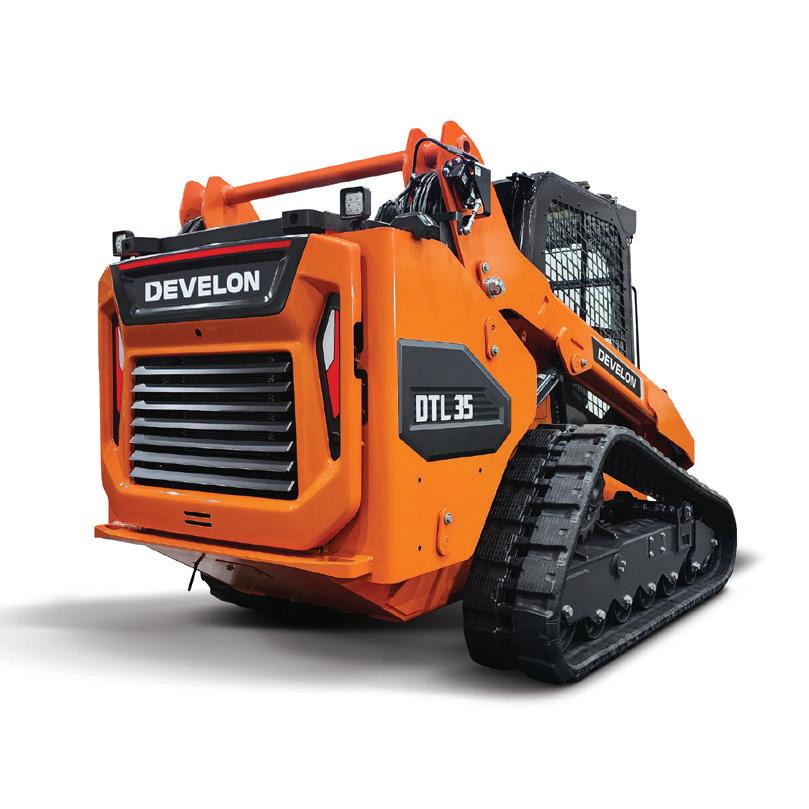
Deere has found success in the vegetation management segment and is creating attachments to fit that niche.
“That’s a that’s a key area that continues to grow,” Gribble said. “There are a lot of customers who are running mulching heads, different kinds of rotary cutters and things like that on the front of the machine, so that they can clear property before there’s some kind of housing or growth or business development there.”
At CONEXPO, Deere announced plans to launch two new mulching heads, the MK76 and MH72D.
“With the 335, one of the things we showcase, too, is we’re going to be offering a new mulching head to help customers in that space,” he said. “We also equipped that machine with what we call a severe-duty package that provides additional guarding around the machine to again, let customers know that not only is the machine more capable, we’re giving you an attachment that’s more capable, and also protecting the machine.”
Gribble said Deere has improved the hydraulic system on the larger machines.
“Previously, our 333 had 41 gpm of low capability, and the 335 will now have 44 gpm. So, almost a 10% increase,” he said. “When it comes to the auxiliary, when you’re running an auxiliary hydraulic function, we’re also increasing this auxiliary pressure system from 3,500 psi to 4,000 psi so that
Those hydraulic system improvements will make life easier for the operator, he said.
“When I think about how that actually improves operator experience, it’s going to be much easier to multitask,” Gribble said. “If you’re, let’s say, raising an attachment, wanting to keep low to the attachment, move in different directions, that’s a lot easier to do. It’s going to be quicker to do compared to an open center system. And we do know that a pressure compensated system actually improves fuel efficiency, as well, because it’s better able to manage how much power you need for the attachment versus an open center system that’s basically running at a constant low all the time.”
The CASE TV620B was designed to run big, tough attachments, Jacobsmeyer said.
“We’re talking about cold planers and mulchers,” he said. “We’re talking about big-bodied attachments, like the CASE precision grader blade. The long tracks, strong frame and auxiliary hydraulics available with the TV620B make this an extremely powerful attachment platform.”
CASE incorporated high- low hydraulics into the CTL.
“It features ‘Hydraulics on Demand,’ a feature that sets the percentage of hydraulic low to the attachment,” he said. “This allows the operator to dial in hydraulic low specifically to the demands of the attachment, their preference, or the job. And it really helps ensure that the attachment is working within the optimal parameters that the attachment is designed for.”
CASE also created the TV620B with the capability to handle its precision grader blade.
“It’s a machine control attachment that is compatible with a full range of 2D and 3D machine control solutions that ultimately turn a large-frame or extra-large-frame CTL into a compact motor grader,” Jacobsmeyer said. “There are other attachments, as well, that make these very practical finalgrade machines, and ultimately dispel any myths about the performance of compact equipment with machine control technology. Construction is rapidly expanding the attachment offering to include more precision-
controlled attachments every year.”
DEVELON’s DTL35 comes standard with 23 gpm of standard auxiliary hydraulic low and 40 gpm of high- low capacity, Lee said.
“The reason for this is because owners of this size class regularly operate attachments that require significant hydraulic low, such as forestry cutters and brush cutters,” he said. “The high hp, combined with the high- low hydraulics, provides exceptional attachment performance for CTL operators. DTL CTL operators will be able to change nonhydraulic attachments without leaving the loader cab. The machine’s quick coupling system will also allow for faster and easier connections for hydraulic-powered attachments.”
Kubota’s CTLs use hydraulic pilot control with control levers directly connected to the machine’s hydraulics, Corder said.
“This allows for sensitive, proportional control of the machine, as a slight movement of the stick initiates a corresponding response to the hydraulics in the machine,” he said. “We have borrowed the Advanced Multifunction Valve from the SVL65-2, which allows for enhanced, simultaneous machine and attachment operation. The auto-downshi t feature from Kubota compact excavators has been incorporated, as well. This function automatically shi ts from high to low range when executing a turn, for a smoother ride and maximum available torque when exiting the turn.”
Kubota CTLs also accept any “skid steer coupler design” attachment, regardless of brand.
Yanmar is like the Swiss Army knife of attachments, Storlie said. Multiple brands of attachments can fit on the TL100VS, and it comes equipped with a 14-pin connector. Adjustable high low is available. Operators can preset the attachment angle and loader arm position to keep measurements precise during repetitive tasks.
“Even in a 118°F day it can do full loads all day with its air-cooling system,” he said.
The standard auxiliary hydraulic low on Takeuchi’s TL8R2 is 19.1 gpm, Padgett said.
“The TL8R2 is designed with versatility in mind to handle a wide variety of attachments and applications,” he said. “A high- low option is available that delivers 33.8 gpm at 3,045 psi. If you opt for the high- low configuration,
you also get Creep Mode. For example, if you have an attachment like a trencher, tiller, mower, cold planer—or any other tool that requires a consistent and repeatable travel speed—you can throw the TL8R2 into this new Creep Mode, and that will allow you to match the speed of the machine exactly to your attachment without having to meter the travel lever.”
The Hyundai HT100V’s quick coupler allows for changing attachments without leaving the cab and bucket self-leveling.
“The auto, self-leveling system keeps the bucket or fork level without the need to manually adjust the angle on the way up during li ting,” Ford said.
Wacker Neuson carries a number of various width and profile buckets, toothed and lat, as well as several wood and rock removal attachments, trenchers, pallet forks and augers, Clark said.
“But Wacker Neuson’s CTLs are also compatible with any Common Industry Interface tools, for maximum lexibility on the jobsite,” he said.
The JCB 300T has a quick hitch for quick coupling to all JCB attachments and other brands’ attachments. The standard hydraulic circuit is 18 gpm and a high low option up to 30 gpm (114 lpm) is available for maximum attachment versatility.
New Holland expects an entire suite of attachments to be available for the C330, from pallet forks and buckets to grapples and more.
“We do offer lasers, receivers and laser grader boxes and blades,” Anderson said. “We have a partnership with Leica to supply our customers with the best precision tools.”
Hyundai’s HT100V comes standard with a hydraulic quick attach coupler.
“The hydraulic quick coupler allows the operator to quickly and safely change attachments without leaving the cab,” Ford said.
Manitou’s VT CTL series can be used with many different attachments. With typical machine weight ranging from 8,865 lbs. to 10,051 lbs., they are lexible when it comes to hauling and transportation, Ryan said.
“We also offer the new and optional high low boost, which increases auxiliary low performance for attachments like mulchers and planers,” he said. “It uses the same lines and connectors as the standard auxiliary hydraulics and is controlled easily by the display in the cab.”
so in order to avoid costly overweight expenses.”
DEVELON launched its first CTL, the DTL35, at CONEXPO. The 12,604 lb. machine has 116 hp and an operating capacity of 3,657 lbs.
“The combination of the hp and the rated operating capacity make this vertical-lift-path compact track loader an ideal choice for earthmoving contractors,” said Thomas Lee, director of product management for DEVELON. “Both the hp and auxiliary hydraulic flow make this size class a popular choice for heavy-duty construction and site prep projects. Our first compact track loader will be available for use with land-clearing attachments.”
Hyundai Construction Equipment Americas brought with it to CONEXPO its re-entry into the CTL market, the HT100V, designed to provide increased vertical lift.
“This lift path was chosen because the geometry of the arm allows the boom to raise the bucket straight up to full height,” said Adam C. Ford, product manager, Hyundai. “Our HT100V provides the best of both worlds: powerful engine, robust structural construction, superior lifting capacity of a large frame machine and low ground pressure and maneuverability of a smaller frame machine.”
Meanwhile, Yanmar Compact Equipment North America entered the CTL market for the first time at CONEXPO, with its TL65RS, TL75VS, TL80VS and TL100VS models, ranging from 67 hp to 103.5 hp and Tier 4 Final diesel engines. Yanmar, too, is seeing a pivot to larger CTLs.
“We’ve seen a shift from the smaller frames to the mid-frame to larger frame sizes, said Buck Storlie, product manager for Yanmar. “They’re looking for the machines to do more, more, more. CTLs continue to replace skid steers as their transportability and uses are increasing.”
Also at CONEXPO, ASV unveiled its VT-100 and VT-100 Forestry CTLs. Designed for mulching, right-of-way clearance and construction site prep, Storlie said they are ideal for owners who need a mid-range machine.
“They are the perfect option for those looking for a little more power than the RT-75 without having to go
Manitou’s 2750VT loaders feature keyless start requiring only code activation, LED lighting, and a patented Pilot joystick system as standard, adjacent to the operator’s seat. Numerous innovations also facilitate maintenance with a lifting cab and centralized maintenance points.
to the heavy hitter of all CTLs; the RT-135,” he said.
Weighing in at 1,890 lbs., Wacker Neuson’s ST27 CTL was also released at CONEXPO. It’s the company’s smallest in its mid-range CTL lineup.
“In general, there is in fact a trend toward large frame loaders, while medium frame loaders, like the ST27 have remained fairly stable,” said Doug Clark, Wacker Neuson product manager for compact equipment. “The growth in the large frame loader segment seems to be coming from small frame loaders. It seems as if, across all customer segments, users are embracing a ‘bigger is better’ philosophy.”
At Manitou, customers are trending toward larger machines to achieve greater operating capacity, said Nathan Ryan, product line manager for skid steers and CTLs at the company.
“Even as you look at what is traditionally considered a ‘mediumframe’ compact track loader – that’s in the 1,800-lb. to 2,400-lb. capacity range – our new range beefs that up between 2,100 lbs. and 2,750 lbs. of rated operating capacity. People are looking to be able to do more but don’t always want the footprint that comes with large-frame or extra-large-frame CTLs,” he said.
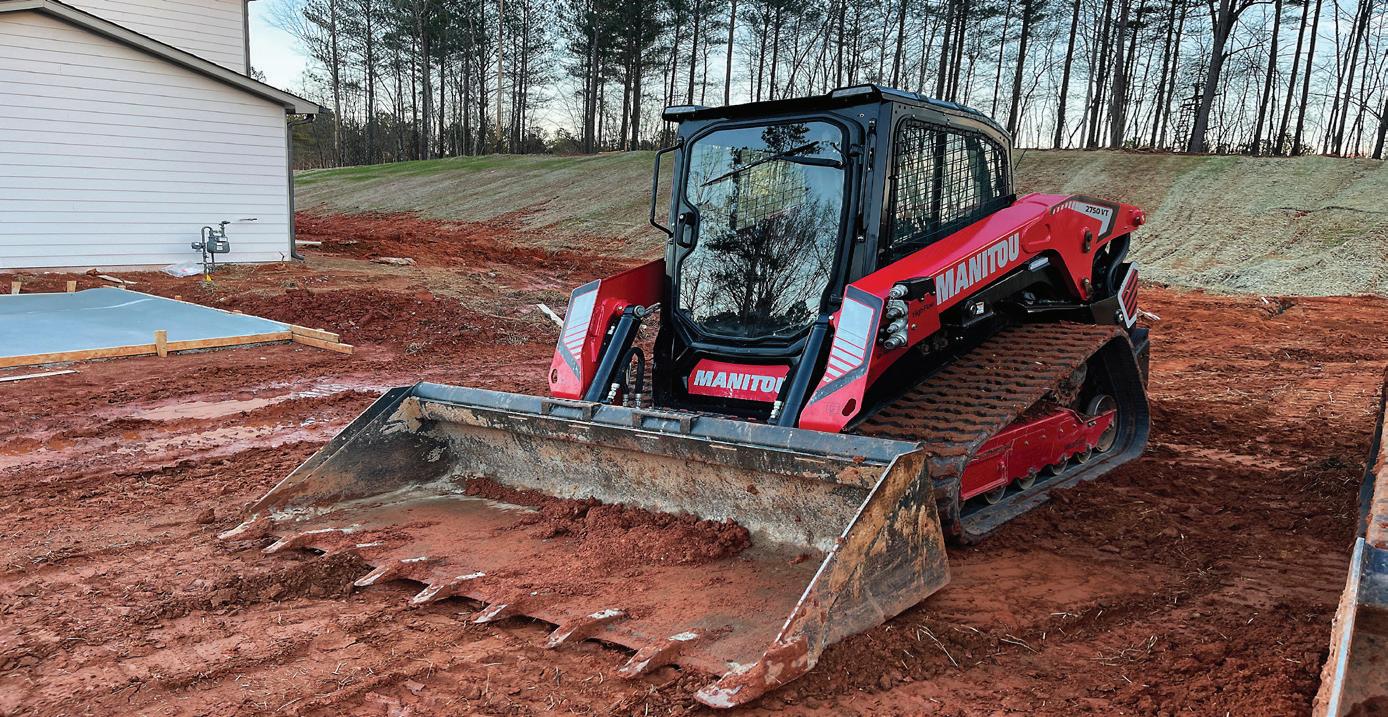
Takeuchi-US also sees a shift toward higher-capacity CTLs.
“Both (medium- and large-frame) sizes are appropriate for traditional dirt work,” said Lee Padgett, product manager for Takeuchi. “For residential work or landscaping, medium-frame CTLs are easier to maneuver around the jobsite and to trailer from place to place. Applications like mulching often require higher hp and gpm for the auxiliaries.”
Kubota’s SVL75-3 also made its debut at CONEXPO. The 74.3-hp machine has a higher peak torque and many updates.
“The new Kubota SVL75-3 incorporates a number of new features, as
well as features taken from other products in the Kubota lineup,” said Jerry Corder, Kubota product manager, construction equipment.
The JCB 300T CTL has a 74-hp JCB EcoMAX engine that requires no DEF, DPF or engine aftertreatment. A rated operating capacity of 3,000 lbs. (1,360 kg) means the 300T is meant for lifting and loading, digging and to be used with multiple attachments, the company said.
Many of the equipment manufacturers have increased the power and lift available in their newest CTLs. Not only do these models feature more hp, but they also have improved hydraulics for better attachment control and breakout force and enhanced servicing accessibility. As the CTL market increases, manufacturers are adding more features and functionality, including improved lift. Many of the machines have further reach, greater lift capacity and better stability.
CASE’s TV620B with 114 hp has an operating capacity of 6,200 lbs. (50% of tipping load) and includes electrohydraulic controls and high-flow hydraulics.
“It also features some of the industry’s strongest breakout forces – 12,907 lbs. at the bucket, 12,084 lbs. at the lift cylinders – and it comes standard with High Flow hydraulics that offer 41.6 gpm for the demanding hydraulic-powered attachments,” Jacobsmeyer said. “AUX flow can be set by using the Hydraulics on Demand feature through the monitor to dial in the specific flow needed for efficient operation.”
When it comes to suspension, CASE recently announced the availability of the CASE EZ Trac suspension on its large-frame and extra-largeframe CTLs, including the TV620B.
“The bogie wheel system in the middle of the track frame absorbs the rough terrain as the machine goes over it, delivering a smoother ride. It delivers greater traction as the bogey wheels allow you to stay in contact with the surface at all times, so the track is always engaging the ground,” he said. “It also allows the operator to hold a more exact grade, as there’s no torsion movement between the frame and the undercarriage, and truck loading is improved, as you’ve got an even more solid base with no porpoising when dropping heaped buckets into the back of trucks, even at full height.”
All service points are accessible for maintenance and repairs at ground level, and the machine uses SiteConnect Module and CASE SiteWatch telematics for improved monitoring.
Last fall, Bobcat launched its most powerful CTL to date, the T86, which is
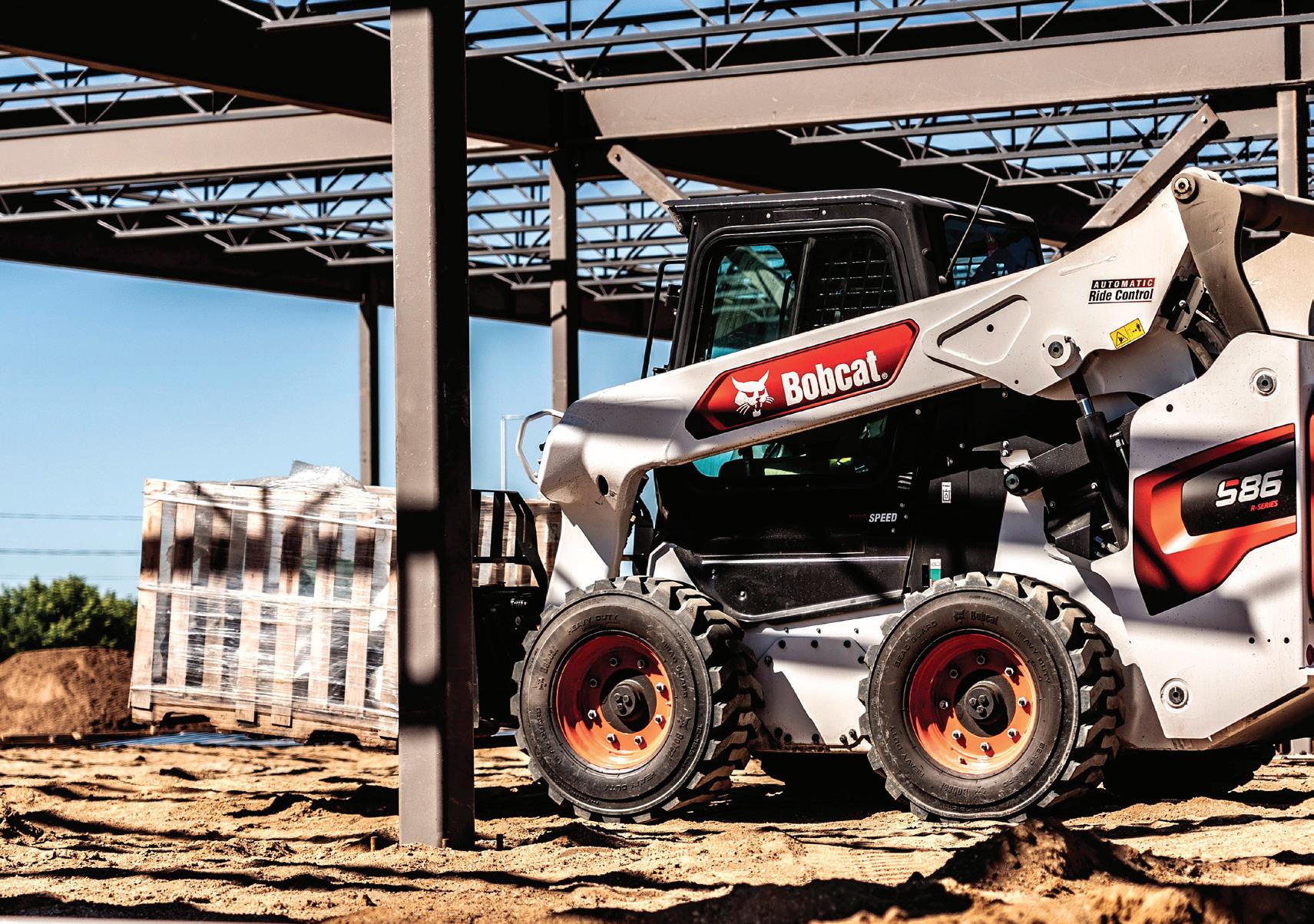

equipped with a 105-hp Tier 4 engine and has an 12,393-lb. operating weight.
“We’ve boosted the hp for the T86 while optimizing machine weight,” Portillo said. “The result is greater lifting capabilities, impressive breakout forces and leading maneuverability for fast cycle times.”
The T86’s vertical lift path provides higher lift capacity and more reach at full lift height than radius lift path, to keep the load closer to the machine while raising. The machine has three hydraulic flow options, including standard, which offers 23 gpm and 3,500 psi, up to super flow, which provides
components, we're going to continue to make that a focus with this next generation of machines.”
DEVELON’s DTL35 comes in at 12,604 lbs. and has a rated operating capacity of 3,657 lbs. The vertical-liftpath CTL comes with a choice of two track widths: 15.7 in. and 17.7 in.
42 gpm and 4,061 psi.
Bobcat’s R-Series CTLs, including the T86, are available with the 5-Link Torsion Suspension undercarriage.
“It dramatically reduces stress and vibration, making the ride more comfortable,” she said. “An additional pivot point improves ride quality, and a unique fifth link included in the rear axles provides a more comfortable ride. Other components like wider track rollers, dual flange front idlers and a longer track further improve the ride of the machine. The lengthened track of the undercarriage increases surface area and ground contact for better flotation.”
Meanwhile, Cat’s D3 Series CTLs come in multiple sizes, starting at the 239D3 and the 249D3, which weigh less than 8,000 lbs., omitting the need for a commercial driver’s license. The larger frame models, such as the 279D3 and the 289D3, offer more rated capacity and higher lifting heights, as well as increased hydraulic hp, Coleman said. Of the series, the 299D3 and the 299D3 XE have the largest load handling capacities and highest hp at 98 hp/110 hp.
The Cat CTL models are equipped with a torsion suspension system that attaches to the machine chassis with four torsion axles. Those axles require daily greasing, and the grease points are accessible at ground level.
“The suspension provides a more comfortable ride, along with greater load retention (even when using the standard two-speed travel)
when compared to competitive rigid undercarriage designs,” Coleman said. “More comfort means higher speeds on the job, which translates into higher productivity. The suspension also helps keep the tracks on the ground during digging/grading to provide maximum traction at all times.”
In recent years, Deere introduced its Anti-Vibration Undercarriage System, and it’s available on the new 333 and 335 models.
“That system is designed to increase operator comfort when you're going over rough terrain on a jobsite. We've actually isolated the undercarriage from the machine frame itself,” Gribble said. “There's also a bogie roller system incorporated into that undercarriage. If you're going over small rocks or small piles of dirt on the jobsite, you're able to keep the whole track ideally on the ground.”
One of Deere’s goals is to make equipment, especially CTLs, easy to service. These CTLs have a rear hood that opens for access and two side panels that can be taken off to view filters, access fluids and conduct daily checks.
“There's just a couple of bolts on the cab itself that you can take off with the cab up,” he said. “And if you do need to get into some more indepth repairs, you've got full access to some of the major systems underneath the machine. Between the ease of maintenance at the rear, and then the ability to raise the cab very easily and access some of the more complex
“The wider tracks will allow for less ground pressure in situations where operators are moving the machine across established surfaces for reduced disturbance,” Lee said. “The tracks will be available with either a block pattern or multi-bar pattern.”
When it comes to servicing the equipment, the DTL35 comes with a tilting cab for better access.
“When operators open the rear tailgate, they will have access to the key service components: diesel engine, battery, filters and fluid fills,” he said. “Above the rear tailgate area is the machine’s cooling system, which is also easy to access after lifting a top panel protecting the internal components. Operators working in extremely dusty and dirty conditions can easily access the cooling system to remove debris and minimize machine overheating issues. The radiator fan is also auto-reversible, which can be very beneficial in dusty environments.”
DEVELON’s CTLs are powered with D34 diesel engines and have a sloped undercarriage to reduce debris buildup.
One of the more popular CTLs at CONEXPO was New Holland’s C330. New Holland is known for creating the vertical lift skid steer loader in the 1980s and the first version of its SuperBoom. Today, the vertical lift C330 has a 67-hp engine and its SuperBoom.
“The patented SuperBoom vertical lift geometry is a huge factor for us,” Anderson said. “Some of the key advantages of the SuperBoom vertical lift are great hinge pin heights for dumping into higher containers and/or trailer, excellent bucket reach (essential for precision loading), and use of attachments.”
On large-frame models like the
C345 and C362, New Holland offers TerraGlide track suspension, bogiestyle design for working in harsh conditions. Fluid levels and grease points should be checked daily, and the oil change interval is at 500 hours.
“Checking track tension every day is important to ensure longer track life and safe performance of the machine,” he said.
Hyundai added an entirely new track system to its HT100V CTL.
“The suspension of this track system consists of a coil spring and shock damper, providing the operator with superior ride quality and load stabilization when traversing rough or uneven terrain,” Ford said.
The 69.7-hp model comes standard with two-speed travel is equipped with the Hyundai Escort system, which when the engine is turned off, the working lights on the front and rear remain on for 30 seconds to improve safety. Its preventive maintenance includes Hi Mate remote management with GPS satellite technology to access diagnostic information and verify equipment locations.
Yanmar’s TL100VS has a standard 40-gpm high flow with a 3,600-lb. standard operating capacity and 10,286-lb. tipping load.
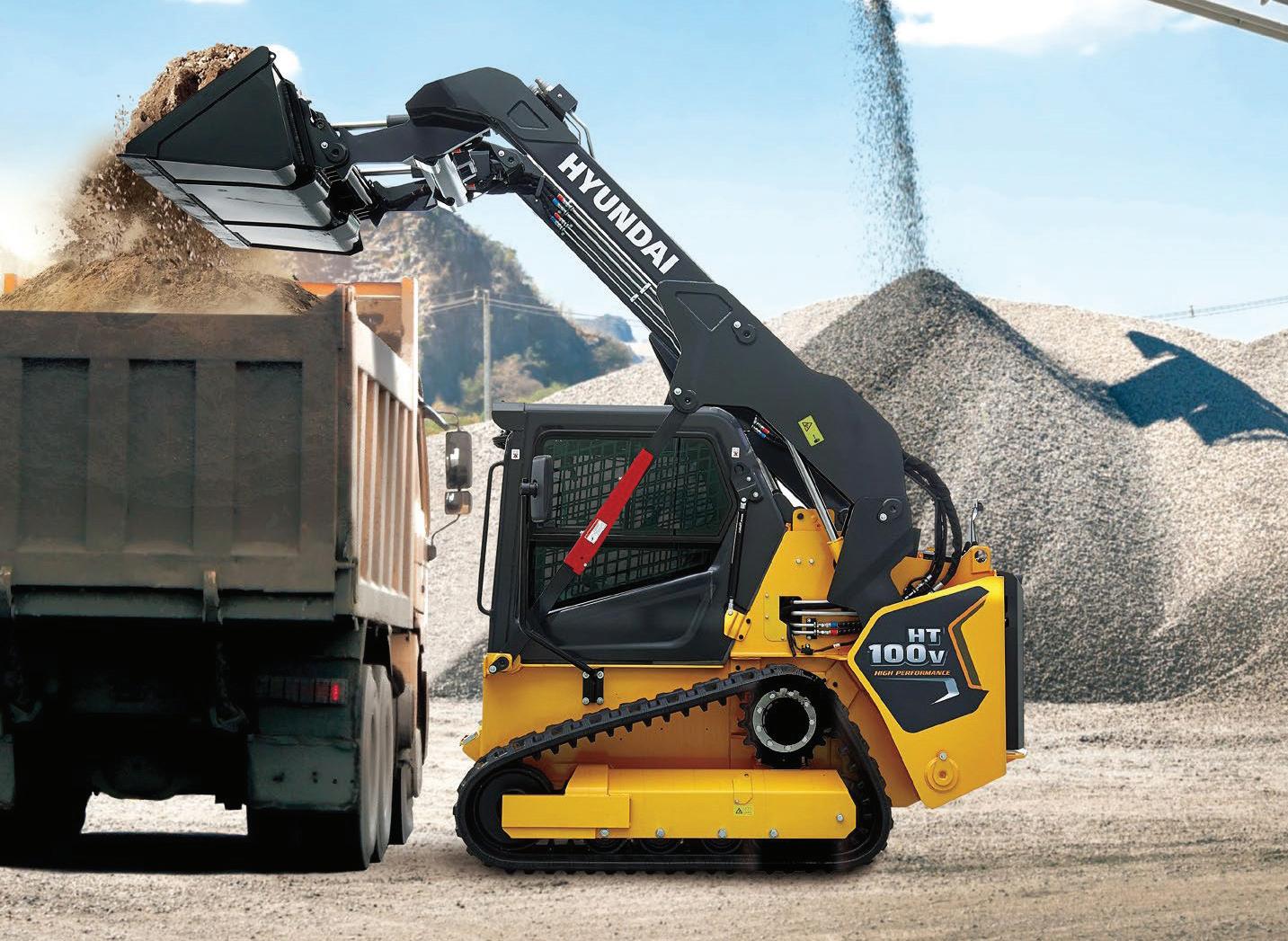
“The hydraulic system improvements make it easier to multi-task,” Storlie said.
The TL100VS has an optional load sensing system, work tool positioner, return-to-position technology, selfleveling, ride control and auto two-speed capabilities. The new construction-grade loader features a torsion axle suspended undercarriage with a pivot link system at the rear axle. This linkage technology uses a spring load to reduce oscillation and stabilize the machine, helping support material retention and ride quality. Additionally, the TL100VS includes large line sizes, hydraulic coolers and direct-drive pumps, transferring more flow and pressure directly to the attachment and reducing power loss.
“The undercarriage is a new design for the Yanmar model. It’s a steel embedded design with standard
Bobcat's S86 can power a variety of attachments including those specifically designed for superflow hydraulics such as super-flow snowblowers, cold planers and forestry drum mulchers.
Bobcat
suspension, best in class ride capabilities and traction,” Storlie said.
ASV’s VT-100 and VT-100 Forestry CTLs are equipped with a 103.5-hp Tier 4 Final Yanmar diesel engine and standard 40-gpm high flow. The VT-100 features a 3,500-lb. rated operating capacity and 10,286-lb. tipping load. The VT-100 Forestry includes a 3,700-lb. rated operating capacity and a 10,571lb. tipping load. The models include Posi-Track rubber track suspension with suspended wheels and axles, allowing it to manage diverse terrains. The models also have accessible daily checkpoints and removable skid plates for cleaning and include three-panel engine access.
“The ASV CTLs are for the premium performance buyer looking for more high-cooling capacity and luxury options like in the VT Forestry model,” Storlie said.
Wacker Neuson’s ST27 has a hinge pin height of 120 in., with a dump height of 94.3 in. The company states that the ST27 has the best power-to-weight ratio in its class with an operating weight of 7,310 lbs. and a 74.3-hp engine. The design also maximizes the rated operating capacity of 1,890 lbs. (at 35% of tip), while providing extra reach at max height making it easier to dump material into the center of a dump box and keeps the loader farther away from the vehicle being loaded.
When the loader arms are down, the cab tips forward, allowing access to the hydraulic system and the engine compartment openings.
“It’s purposefully designed to ensure the most frequently accessed components are also the easiest to access,” Clark said. “The easy-to-clean sloped undercarriage design sheds mud and debris while you work, reducing wear and cleanout time. The ST27 features lubricated and sealed forged steel rollers and idlers that require less maintenance, extend track life and are more durable than rubber coated rollers.”
Kubota’s SVL75-3 load arms have been redesigned for a taller hinge pin height – nearly 3 in. higher than the SVL75-2 – and improved rear visibility, Corder said.
“We have borrowed the Advanced Multifunction Valve from the SVL65-2, which allows for enhanced, simultaneous machine and attachment operation,” he said. “The auto-downshift feature from Kubota compact excavators has been incorporated, as well. This function
automatically shifts from high to low range when executing a turn for a smoother ride and maximum available torque when exiting the turn.”
Kubota has also adopted its skidsteer loader engine layout, putting the radiator on top and moving the fuel tank to the rear bonnet.
“This opens up the engine bay to provide unimpeded access to the battery, all filters and all fluid fill locations for easier routine maintenance,” Lee said. “The suspension design is a welded frame undercarriage to ensure durability and longevity, omitting wear part costs.”
Manitou has improved its breakout force by 12% compared to previous models and has increased fuel tank size by 14% for extended run times, Ryan said. The company introduced its entirely new lineup of CTLs at CONEXPO 2023, and that includes three new models ranging from 2,100 lbs. of rated operating capacity up to 2,750 lbs. in rated operating capacity (35% of tipping load). For contractors who reference the 50% tipping load metric for rated operating capacity, it ranges between 3,000 lbs. and just under 4,000 lbs., he said.
“We have focused on five very specific areas of improvement for these machines: safety, comfort, productivity, simplification and serviceability,” Ryan said. “All models are vertical lift and feature a new lift arm design, and the operator’s station has been improved.”
Each loader includes Manitou’s IdealTrax automatic track tensioning system, which keeps the proper tension. Instead of greasing to achieve proper tension every 50 hours, a hydraulic system keeps constant tension on the tracks.
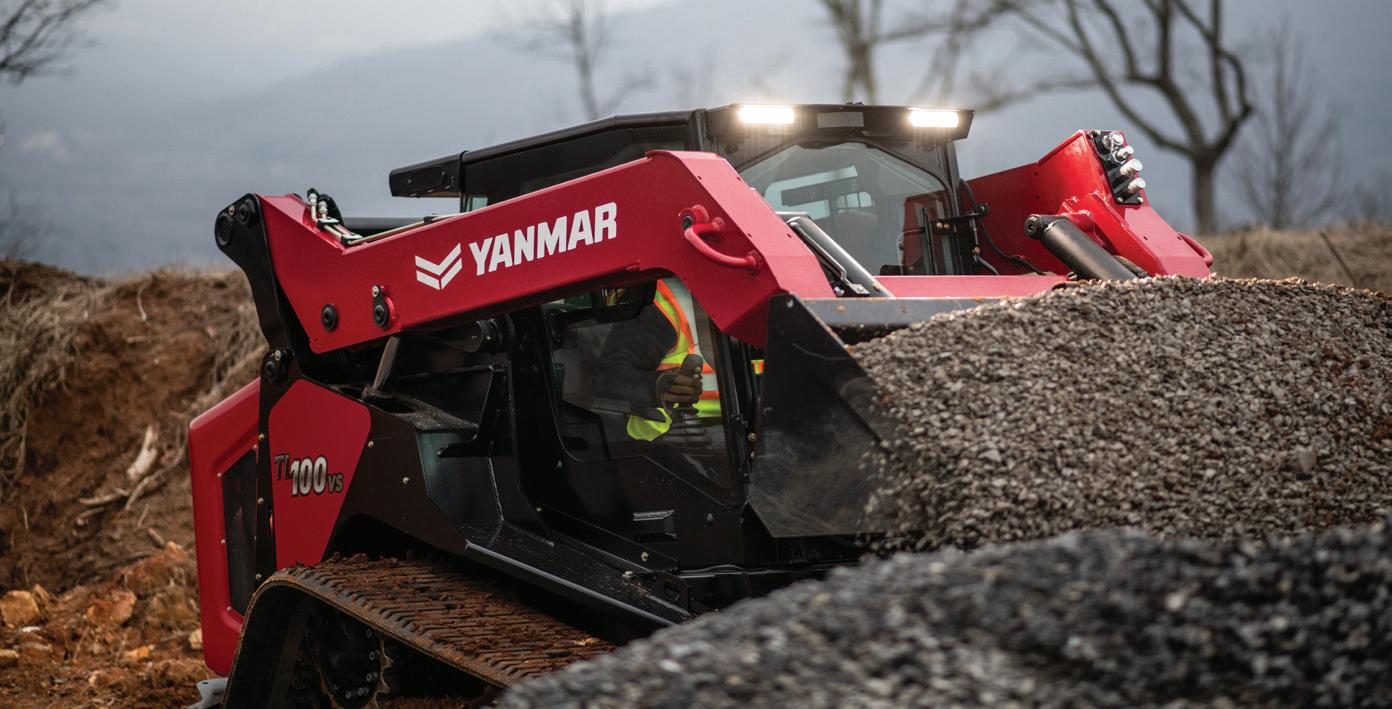
“You’re also going to see improved idler and bogie bearing life. It eliminates tensioning with a grease gun,” Ryan said. “And the track immediately releases tension when not in operation, making cleanout super easy; and it also simplifies track removal and installation.”
Takeuchi’s newest CTL, the TL8R2, includes high-flow auxiliary hydraulics, creep control, auto twospeed travel and a new undercarriage.
Yanmar Compact Equipment North America entered the CTL market for the first time at CONEXPO, with its TL65RS, TL75VS, TL80VS and TL100VS models, ranging from 67 hp to 103.5 hp and Tier 4 Final diesel engines.

The undercarriage is welded directly to the frame for greater strength and rigidity, Padgett said. The TL8R2 has a ride control feature for traveling at higher speeds for longer distances to help retain the material in the CTL’s bucket. The 300T has boom suspension, which can be turned on or off for precise boom control.
“Its new undercarriage design features repositioned travel motors with internally routed drive lines and double and triple flange track rollers,” Padgett said. “This track loader comes standard with many new features.”
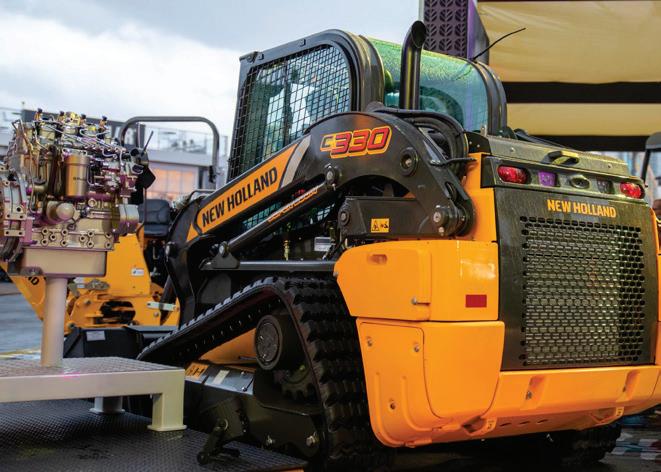
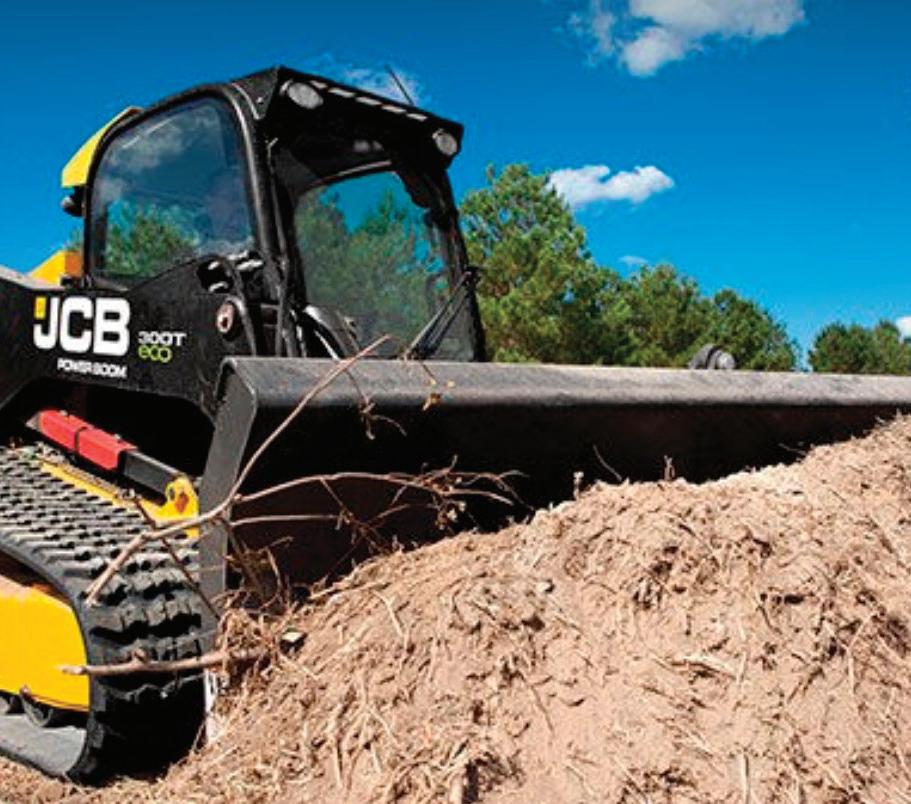
JCB’s CTL models include the single-arm JCB Powerboom and sidedoor entry. With a rated operating capacity of 3,000 lbs., the 300T is designed for lifting and loading, digging, and pushing while using a variety of attachments. These include blades, tilers and trenchers, grapple buckets, and rakes. Its welded chassis provides rigid structure for reduced weight, while the Powerboom protects the hydraulic hoses from impact, and greater breakout force is provided by the largest quick-hitch pivot pins in the industry, the company said.
Keeping up with the technological innovations taking place in the construction industry is no easy task. Owners and operators will likely see many of those improvements in the cab as controls, touchscreens and other dashboard electronics have improved. The improvements in joystick ergonomics and seating comfort also cannot go unnoticed. Most equipment manufacturers have made improvements to the cab in recent years and CTL cab upgrades are no exception.
For the past decade, an ongoing trend has been the one-piece cab. Kubota’s SVL75-3 has a new one-piece cab that is sealed to reduce dust, dirt, most noise and other elements. There is also a 7-in. touchscreen, keyless start, a wide-angle 176-degree backup camera and relaying of machine vitals, Corder said.
Deere redesigned its cab and offers a one-piece design in new CTLs.
“There are a lot of features that we're adding or making as optional to take operator comfort really to the next level,” Gribble said. “The cab itself, the structure, we moved to a one-piece design that's going to lower the noise inside the cab for operators, which is great for the jobsite, especially when running attachments. It's also going to help keep some of the elements out if you're in heavy rain or heavy snow, so that's going to be a big plus to keep our operators more comfortable.”
New technology will be incorporated into the cab, with asset location, improved maintenance monitoring and larger touchscreens, for example. A heated/cooling ventilated seat will be available, as well as Bluetooth connectivity and customizable joysticks.
“You can actually move them forward or backwards, depending where your arms rest on the machine, how long your arms are. That's going to be something new that you couldn't get previously,” Gribble said of the joysticks. “The features are suited for a machine that's going to be run all day long for both owner and operators or for larger companies, as well. I think that will help keep operators in the machine and again, that kind of helps with some of that retention of operators and attracting talent to the industry.”
When Caterpillar released its D3 series CTLs with a one-piece sealed and pressurized cab in 2019, the enclosed cab came standard. The cab door was wider than in the past and the distance between joystick pods had increased by 3 in.
At DEVELON, engineers spent considerable time designing the CTL cab for comfort and ease of use, Lee said.
“Our CTL cab offers a large interior space for operators that will come standard with electrohydraulic joystick controls for easy operation and less fatigue,” he said.
Among the standard equipment is a rearview camera to improve visibility, which is displayed on an 8-in. touchscreen, and Bluetooth connectivity for phone conversations and listening to music. Additional options include an air suspension, heated seat and 360-degree monitoring system.
Manitou’s new CTL lineup includes a cab that is 23% larger than older versions and has 23% more visibility.
“Each unit features a patent-pending sloped roof that provides better visibility, and uniquely shaped, patentpending vertical lift arms that reduce material buildup and increase visibility under the arm to the outer tracks,” Ryan said. “Ride Control is now standard, which delivers a smoother and more comfortable ride.”
Joysticks are now standard, and the seat and armrests are independently adjustable. A 7-in. color display shows operation data with telematics and the rearview camera footage.
“A foot throttle is now standard to increase and decrease engine speed without removing hands from the joysticks – and that also can act as a deceleration pedal when the hand throttle is set to high idle,” he said. “Each machine also features an optional creep mode, which is rare on machines with pilot controls.”
Meanwhile, Takeuchi’s TL8R2 cab includes an automotive-style cab that is becoming more popular in the industry with a high-back suspension seat, electronic throttle control, rocker switches, 12-V outlet and cup holder. The roll-up door pressurizes the cab, sealing in the air conditioning, heating and defrost capabilities. There is also an AM/FM radio with Bluetooth connectivity. The 5.7-in. color screen displays operation data and rearview camera footage. Additionally, its LCD display is 8 in.
New Holland’s C330 has customizable EH controls for operators of any skill level.
“EH controls are our preferred method of operating CTLs and skid steers,” Anderson said. “Different from Pilot Control, EH controls send an electrical signal to the pumps, which allows them to be ‘tuned’ to the operator’s needs.”
an optional heated air-ride seat. The base machine also comes standard with dual-direction bucket positioning, the Power Bob-Tach system, automatic ride control, a reversible fan and twospeed travel.
“Operators sit high and closer to the front of the cab for an optimal view to the bucket’s cutting edge,” she said. “The optional clear side enclosure further enhances visibility to the sides of the cab. Rear cameras are available and offer a continuous rearview from the operator’s seat, helping to identify jobsite obstacles.”
CASE’s TV620B has 360-degree visibility in the cab and comes standard with EH controls.
“This allows operators to easily set total machine responsiveness to low, medium or high, or independently set tilt, lift and drive speed, as well as loader arm and drive control to best meet the demands of the job and the preference of the operator,” Jacobsmeyer said. “This is all achieved very easily through the massive LCD multifunction display in the cab, which also comes standard.”
Also offering 360-degree visibility is Wacker Neuson’s ST27.
“The track frame design allows a lower profile on the loader arm, improving side visibility, and the vertical arm linkage is aligned with cab posts to maximize rear visibility,” Clark said. “The roomy cab offers plenty of foot and head room, while all switches and controls are ergonomically placed for the operator’s line of sight, making the operation very comfortable on the ST27.”
Additionally, operators can toggle between ISO and H-controls depending on their preference.
Hyundai’s HT100V’s cab has a vertical sliding door, ergonomic multifunction joysticks, a mechanical suspension seat, five-vent HVAC, foot pedal, rotary-dial throttle and Bluetooth.
Bobcat’s T86 has selectable, ergonomic joystick controls.

“Three workgroup response settings allow operators to adjust the joystick sensitivity of lift and tilt functions to match operation preference with the demands of the job,” Portillo said. “Users can adjust between slower and smooth movements for precision operations, as well as faster lift and tilt functions for applications that require more speed.”
The CTL’s drive response can be adjusted to individual preferences, she said.
“It is possible to set the drive response for smooth movements and precise control or adjust to a faster response drive for a proficient operator or when applications require faster cycle times,” Portillo said.
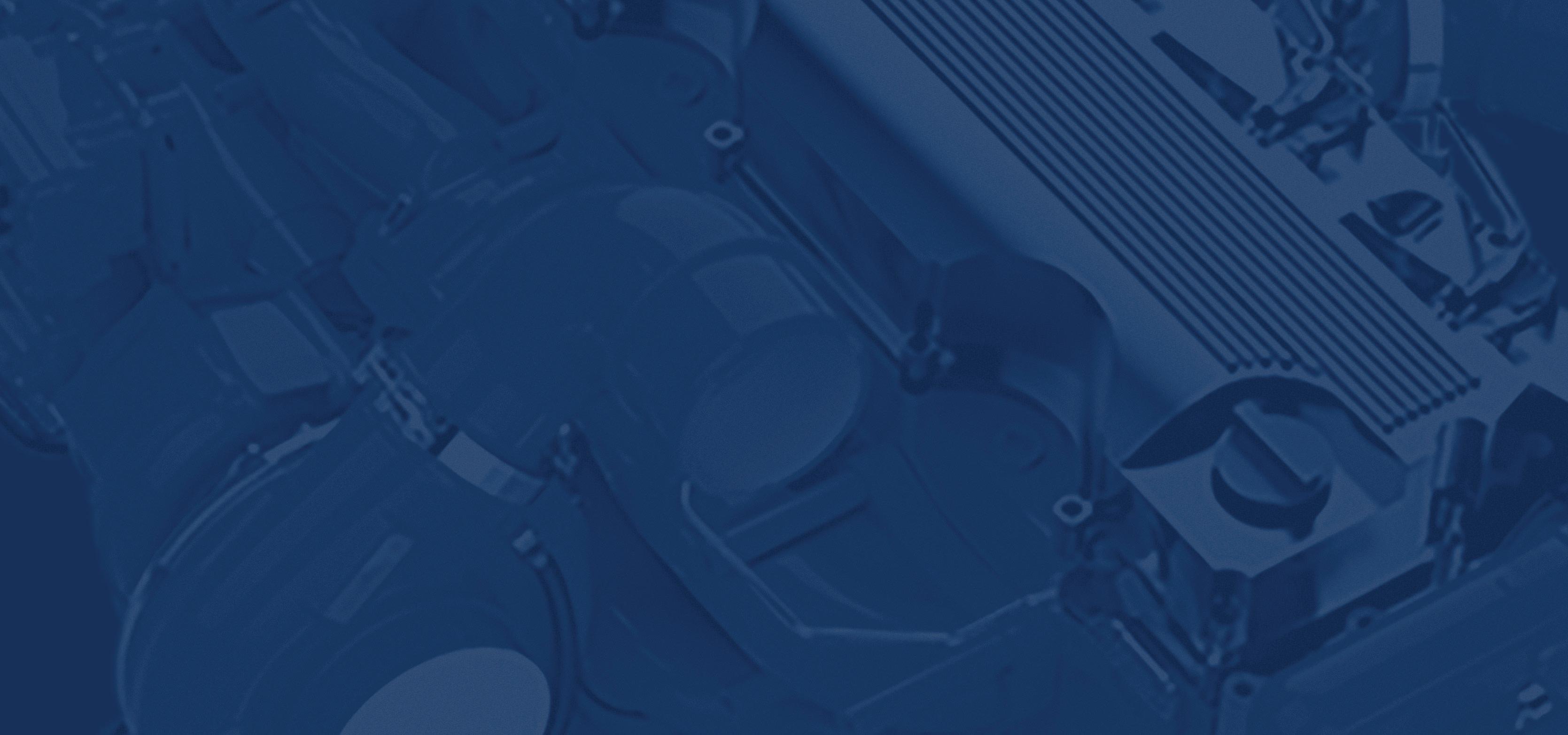
The cab is pressurized with automatic heat and air conditioning and
“These machines can also sense the needs of the operator with standard auto-shifting, which will switch between gears automatically based on joystick input, removing the need for the operator to remove their hands from the controls,” he said. “These and many other control options are displayed in the large color LCD display in the cab.”
Yanmar’s TL100VS comes with a mechanical suspension seat, fixed pilot controls, 7-in. color display, roof panel, rear window, cupholder, and two-speed and standard flow. Electronic joysticks with ISO or H patterns and seven-vent air conditioning are available, among other features.
The JCB 300T has a wide-opening side door and 60% better visibility than previous models. The model’s myCHOICE control software allows operators to tailor the sensitivity of joystick movement, and ISO or H-pattern controls are available. A new touch-screen display mounted in the top right-hand side of the cab improves visibility, while the diagnostics, electronic throttle and ignition switch are within easy reach.
Read more at: https://eqtoday.co/NewCTLs





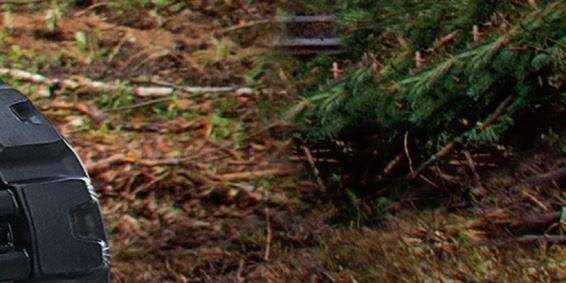
















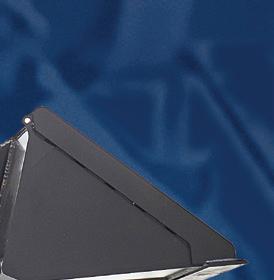










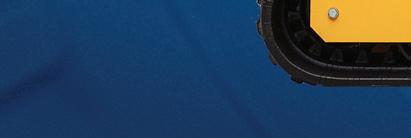
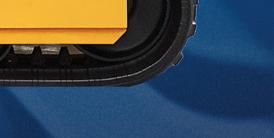


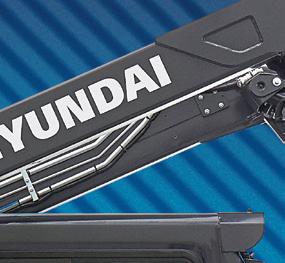
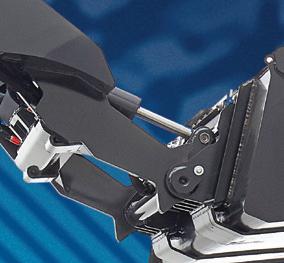

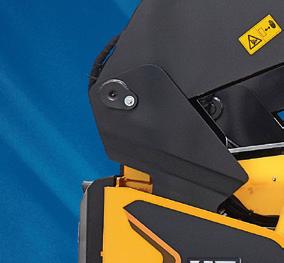
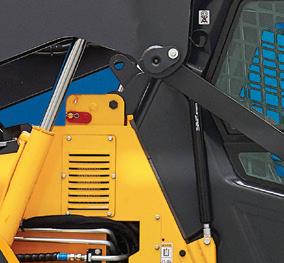



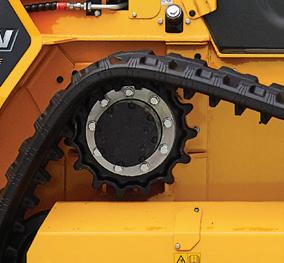
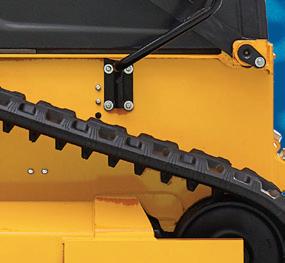




EARTHMOVING
| by Michael Cheng, Editor, Construction Equipment & ProductData points are like puzzle pieces that, when connected properly, form a fresh perspective that can change the way you operate your fleet and your business.
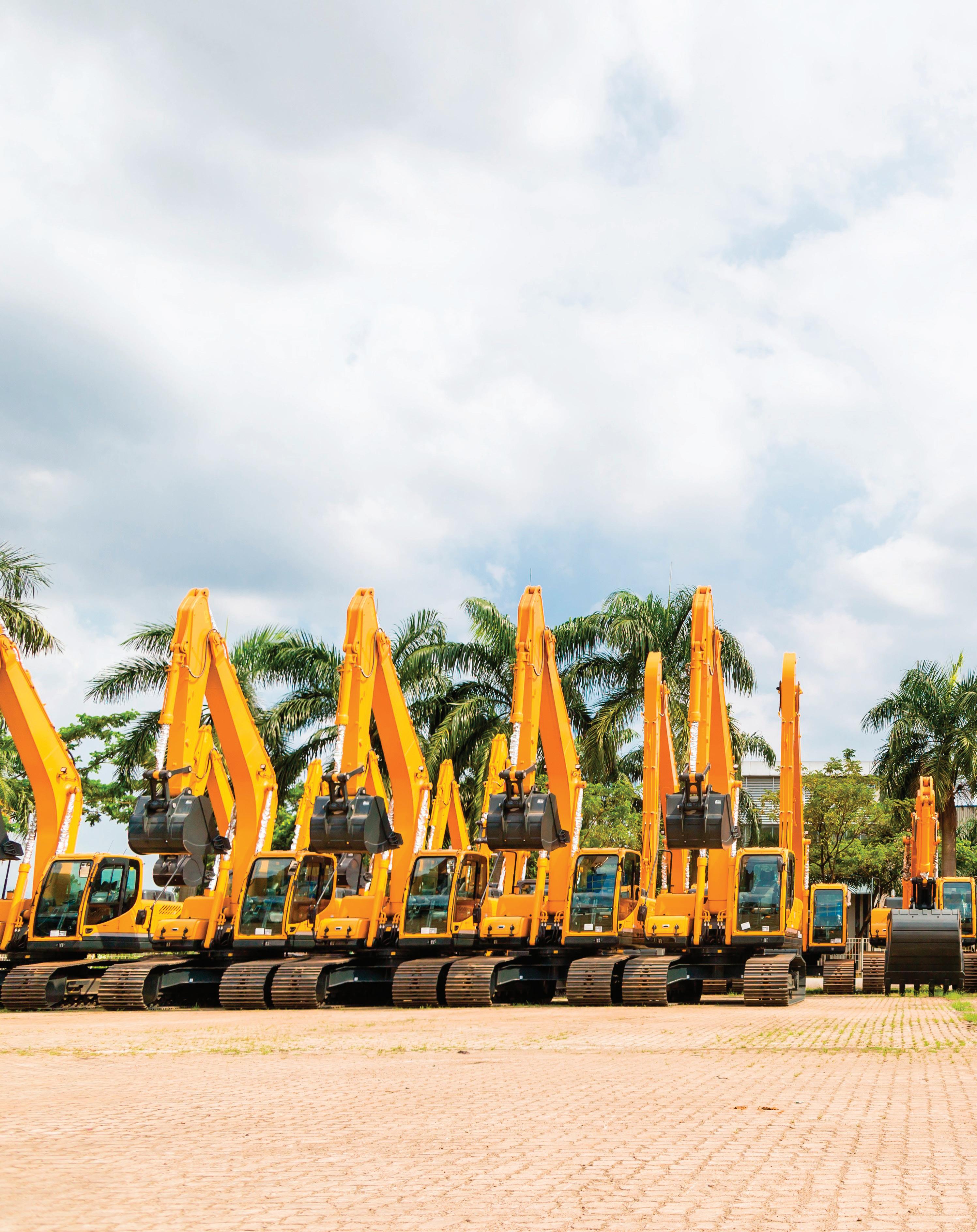



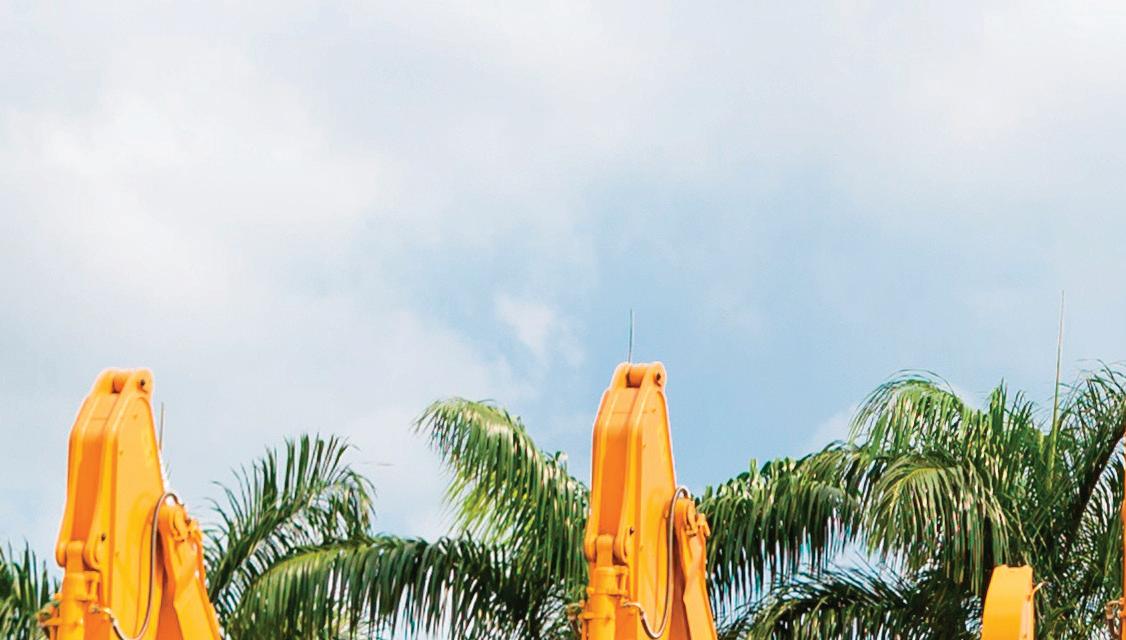





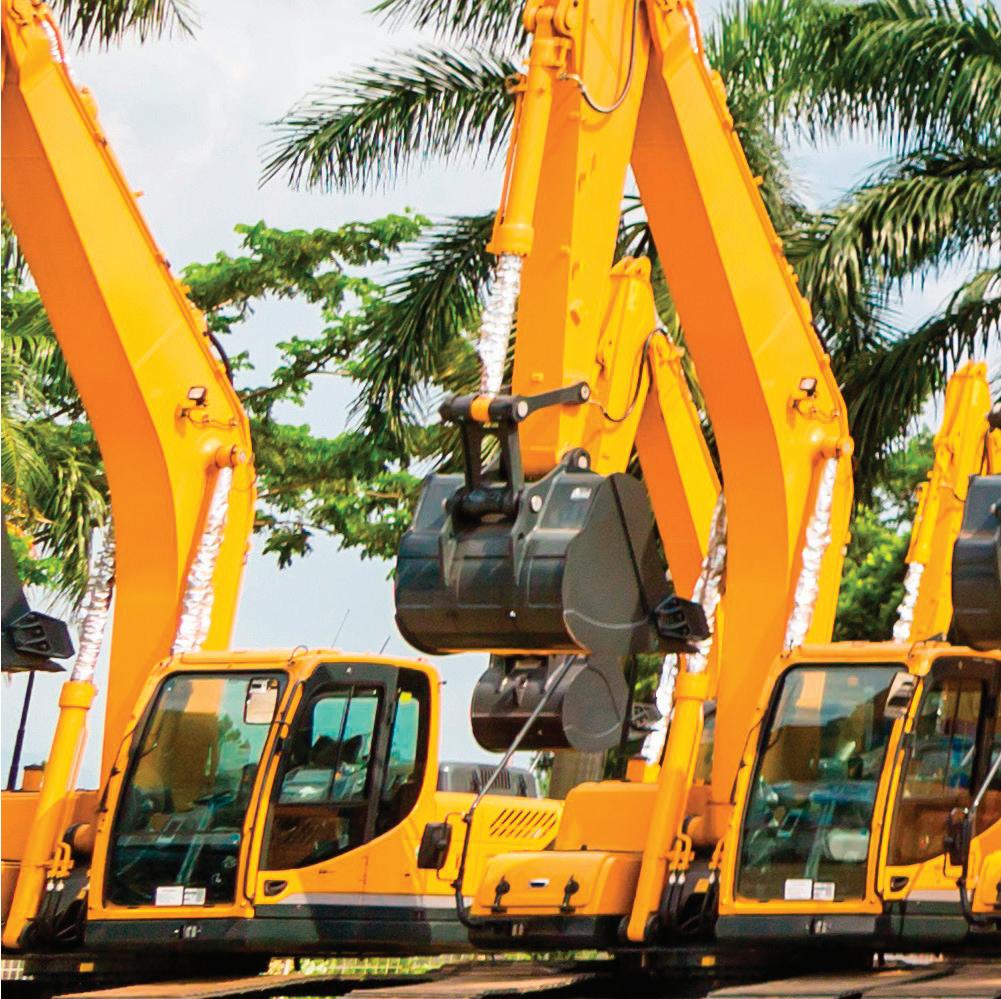





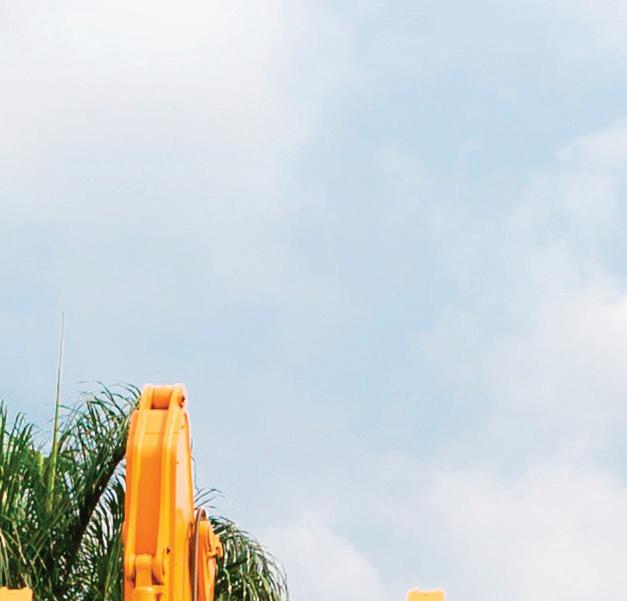
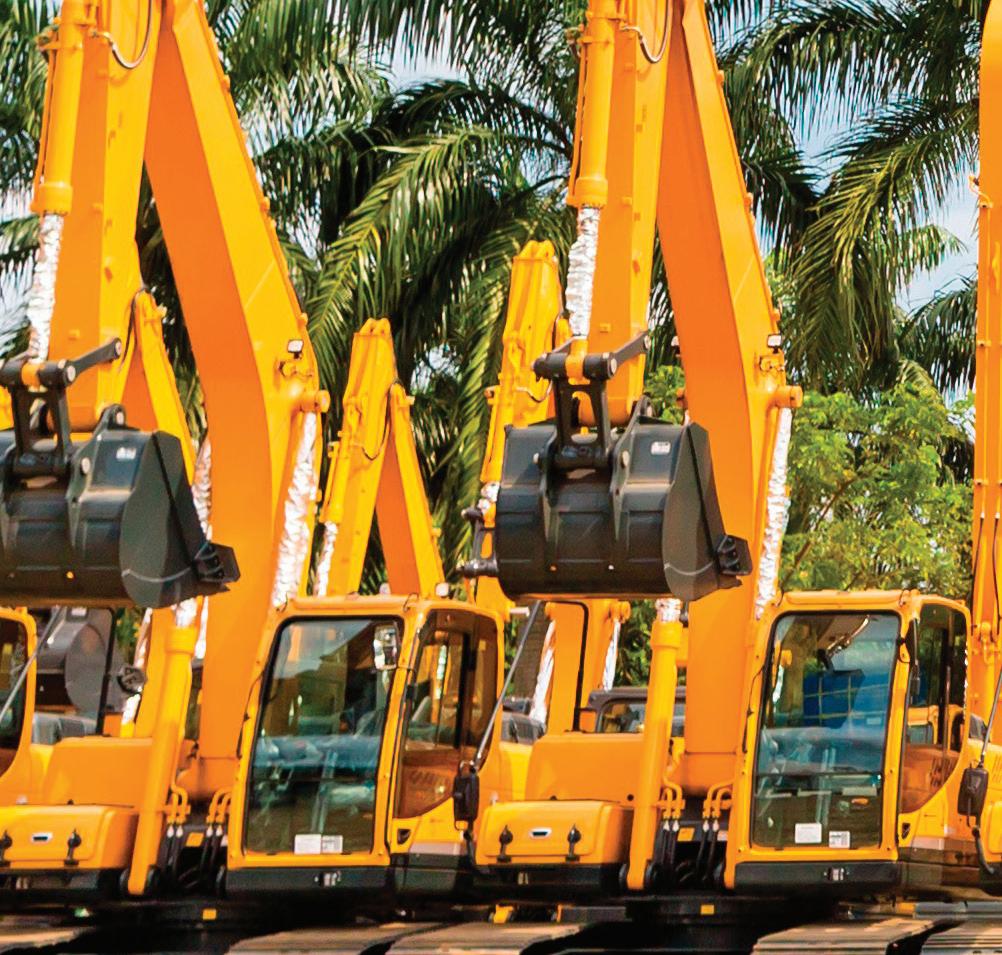







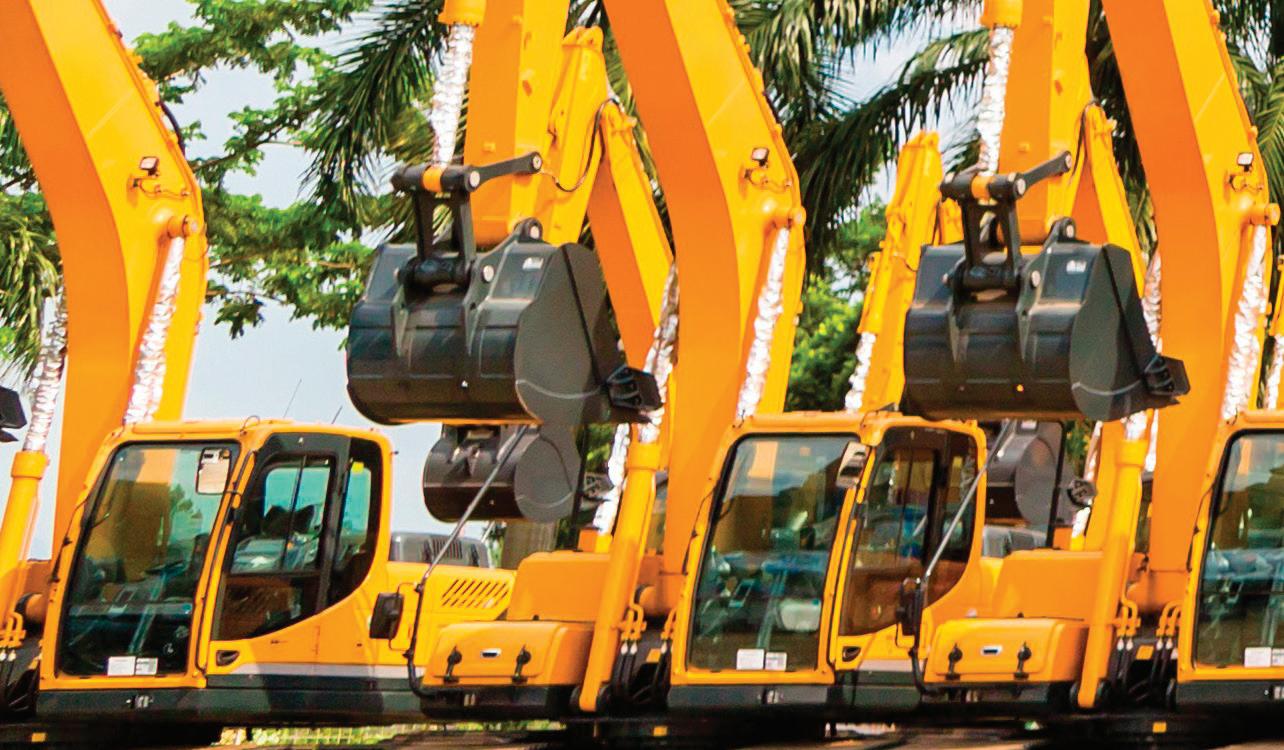
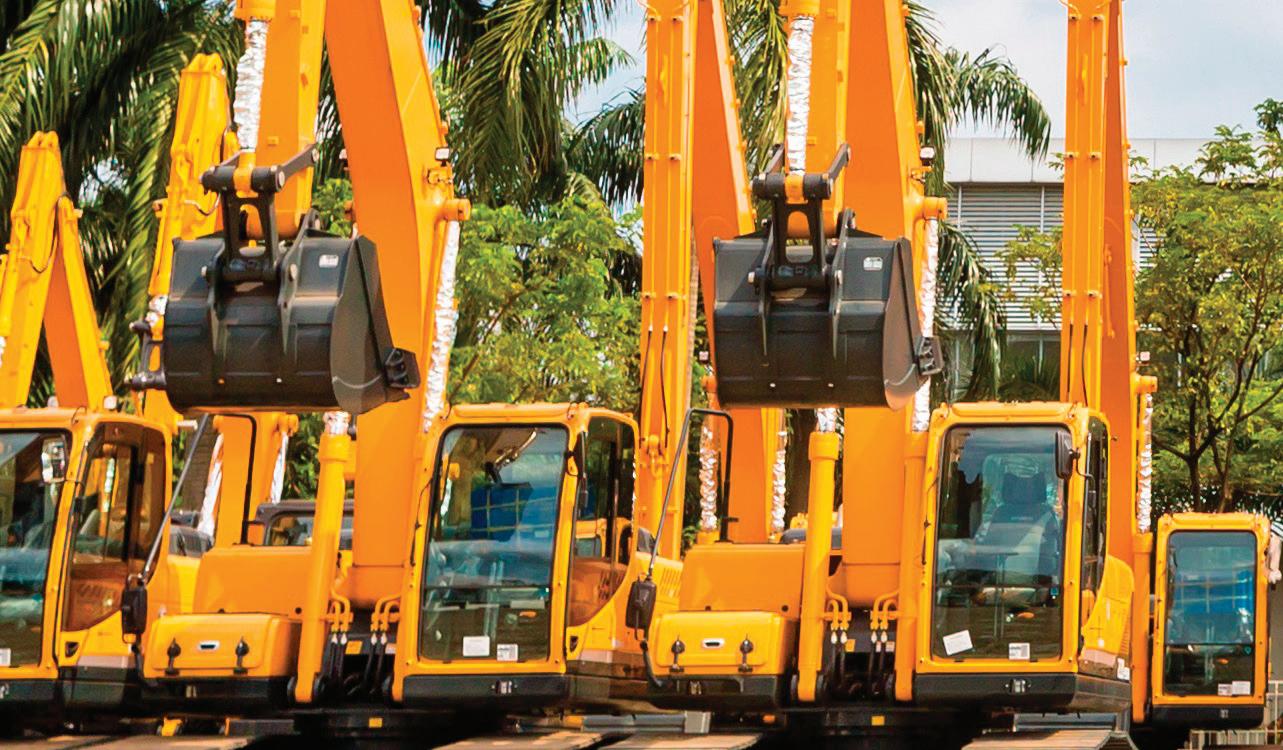

Telematics can help boost productivity on construction sites. According to Trimble, a company specializing in construction telematics, connected construction can help businesses increase productivity by 30%. So how exactly does a business use data to increase productivity in their operations?
The first step in leveraging data-driven insights is collecting information from connected machines and tools on the jobsite. This can range from large excavators and material handling equipment to cordless hand tools and wearables. There are many types of data available on construction sites, capable of providing the feedback and information you need to minimize risks when making operational decisions.
Vehicles: Engine Overspeed
Monitoring an engine’s overspeed rates through remote diagnostics can help equipment managers predict when construction vehicles are due for maintenance, as well as gain a thorough understanding of the challenges of the jobsite. Critical overspeed settings vary depending on the vehicle or motor type. Generally, engines hitting overspeed conditions are prone to reduced lifespan and engine failure, which influences maintenance, budget and rebuild strategies. Overspeed can also cause the engine to generate unwanted heat, resulting in higher operating temperatures associated with damage. Engine overspeed could serve as a warning for dangerous working conditions on the jobsite and should not be taken lightly.
“When we see engine overspeed, the first thing we take into account is the type of machine reporting out the data. Let’s use an articulated truck
as an example. Is it happening on one part of the job? Is it happening all over the job? It is critical to know not just the frequency of triggering engine overspeed, but also where it is happening on the jobsite,” said Jason Threewitts, performance services manager at Carter Machinery.
With more than 90 years of experience in the construction sector, Cater Machinery sells and supports Caterpillar equipment for construction projects. The company has an expansive network consisting of more than 30 locations across the United States.
“This information will tell you a couple of things. If it is happening across the worksite, then it is probably an operator thing. If it is happening on one specific part of the job, it is probably less of an operator issue. Instead, it could be an indication that this part of the job is dangerous. Maybe I need to go out there and check the area to prevent an unsafe situation,” said Threewitts.
Equipment managers monitor overspeed on construction sites using remote diagnostics. Remote diagnostics
refers to real-time monitoring of the vehicle’s status (in this case, overspeed). Upon detecting overspeed conditions, a fault code associated with the condition is triggered and a signal is transmitted to a management platform via a telematics device. These days, newer machines come with factory equipped telematics devices that can be used to capture engine overspeed data. A timestamp, vehicle identification and location data may come with the fault code during transmission.
Engine overspeed data can be combined with other types of information on construction sites for in-depth jobsite analysis.
“It is never just one thing. When analyzing the full situation, how can I continue connecting the dots all the way through? So then, I would start looking for related things. Am I getting an overheat reading at the same time while getting an engine overspeed condition? Am I getting filter plugging issues at the same time? Do I have engine or transmission oil samples coming out of the machine that is telling me something else? When you start adding
Monitoring fuel use is one of many ways data collection can be used on the jobsite.
@Kzenon - adobe.stock.com
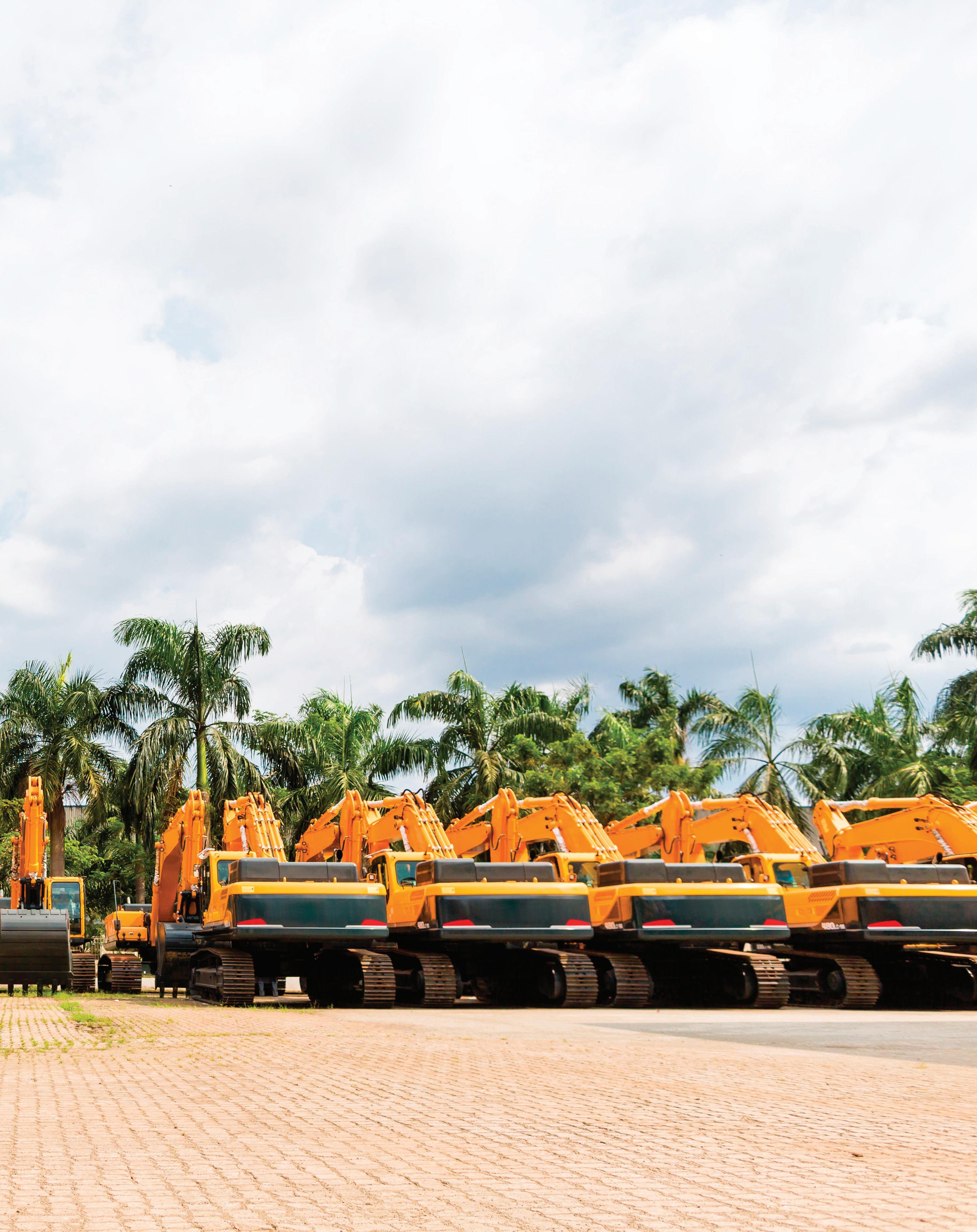












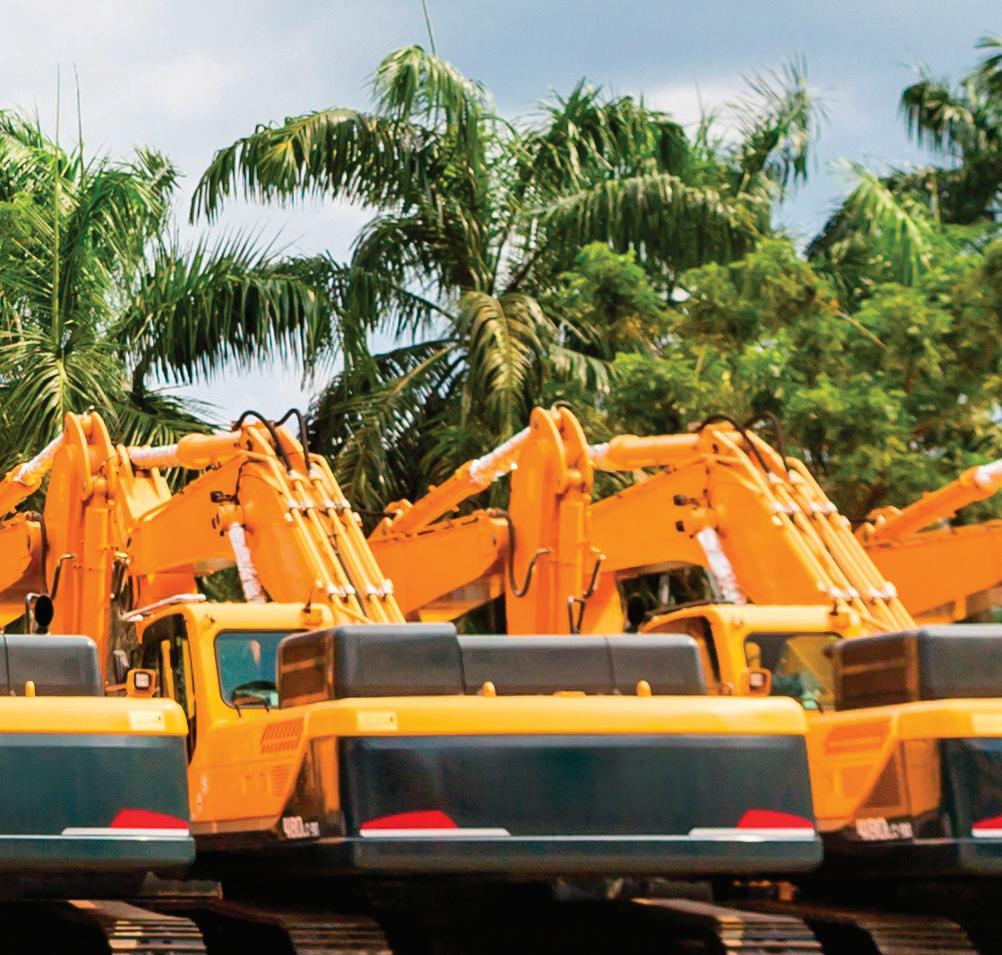
all of that up together, if you have correlating data sets based on either other fault codes or sources, like an oil sample, then you have some powerful information to determine if you have a machine issue, how rebuild life is being affected or if you need to talk to the operator about how they are using the machine,” explained Threewitts.
Workers: Fall Detection Rates
When it comes to safety, fall detection is a critical piece of data to monitor in worksites. Falls, slips and trips are very common in the construction sector.
“The construction industry accounted for 46.1% of all fatal falls, slips and trips in 2020,” according to a report from the U.S. Bureau of Labor Statistics. Falls are tracked using gyroscope and accelerometer sensors on smart watches, tablets or safety devices. Some devices can detect both a normal fall and a hard fall. These wearable devices generate loud auditory alerts and issue emergency notifications to specified contacts or project management platforms in the event of fall without a response, increasing the possibility for workers to receive immediate medical attention.
stairways, can prompt managers to update work safety practices.
“Employers must set up the work place to prevent employees from falling off of overhead platforms, elevated work stations or into holes in the floor and walls. The Occupational Safety and Health Administration (OSHA) requires that fall protection be provided at elevations of 4 ft. in general industry workplaces, 5 ft. in shipyards, 6 ft. in the construction industry and 8 ft. in longshoring operations. In addition, OSHA requires that fall protection be provided when working over dangerous equipment and machinery, regardless of the fall distance,” according to an OSHA overview about fall protection.
Fuel keeps construction vehicles and machines, such as generators and tools, operating, yet is a major cost in the budget of construction projects, usually second to labor. Monitoring fuel consumption is traditionally carried out at the fuel pump. Newer machines come with features that carefully monitor fuel consumption or
Threewitts highlighted a situation wherein an operator was light-loading a wheel loader vehicle on the jobsite. The operator was not fully loading the vehicle’s bucket during each pass. As a result, the operator needed to make two to three additional passes. The operator’s thought process was that he was able to work faster without fully loading the loader bucket. Threewitts utilized fuel consumption data to show the customer that not fully loading the bucket of the wheel loader and making additional passes burned 20% more fuel, compared to maximizing the load capacity of the machine and reducing the number of passes.
“Once you start correlating fuel savings or fuel efficiency and you’re also still able to get the production and payload out of the fleet that you need; that is solid gold for a production or equipment manager. Being able to correlate those two data points together or three data points is huge,” said Threewitts.
Monitoring the location and utilization of hand tools and equipment on jobsites is an effective way to streamline productivity, inventory, security and asset management for businesses. This information seems straightforward, though in application there are many ways to use this data to support operations on construction sites. From a hardware perspective, this involves installing small identification tags on equipment and using wireless Bluetooth technology to transmit the data.
Cloud-based management platforms allow managers to view the status of equipment, as well as historical usage data, where they can assess how tools are used on the worksite.
Tracking equipment uptime is also used in predictive analytics, enabling businesses to know when equipment is needing repair or replacement. Tools that do not meet expected uptime performance can prompt individuals to bring the equipment in for inspection or maintenance. This information can also help businesses stay ahead of costs related to replacing tools by anticipating the equipment’s end of life based on accrued uptime.
“Tracking small tools — whether in repair status, on location or with employees and the associated costs — is one of the most ineffective parts of accounting and internal controls in a construction company,” said Maria Lumke, CFO of Waterline Industries, a New Hampshire-based civil general contractor.
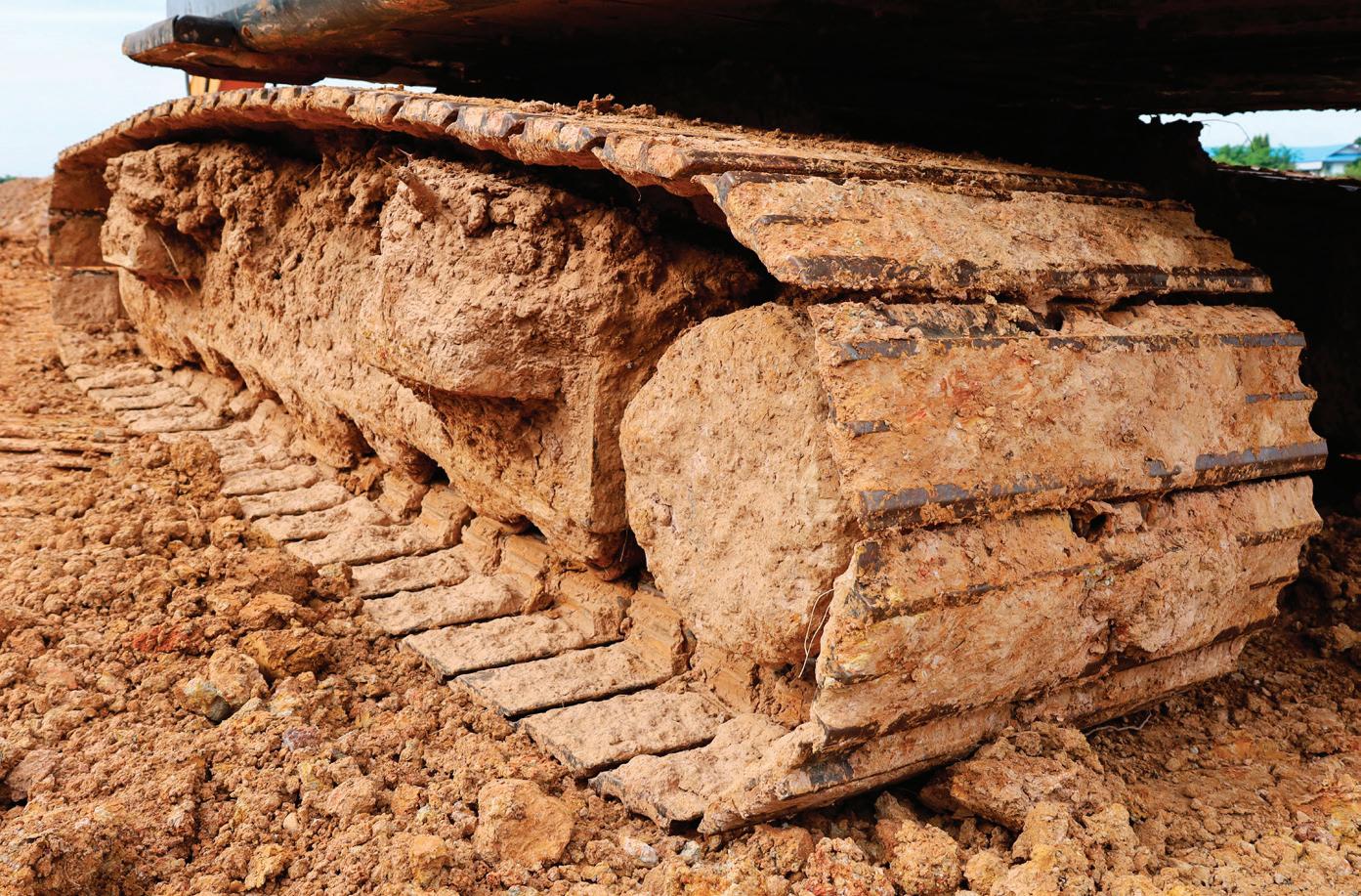
Equipment utilization data of specific tools enables managers to track the completion of various aspects of a project. For example, a business that uses three chipping hammers for light demolition work when removing concrete for site preparation averages 10 hours of tool utilization per project. With this information, managers would know that when the three chipping hammers are at eight hours of utilization, the demolition work is nearing completion and the next phase of the project is approaching. This ability to forecast various stages of a construction project allows managers to stay one step ahead of schedule.
For businesses juggling multiple projects, the combination of location and tool utilization data for equipment is useful. Tapping into such data would enable equipment managers to allocate tools efficiently across different ongoing projects, minimizing idle time while increasing productivity.
In addition to monitoring individual falls and slips, there are several benefits to tracking the rates at which they occur. Tracking the frequency of falls over a period of time can expose gaps in safety protocols. To make tracking fall detection rates effective, a timestamp and location data should be recorded with the emergency notification for a complete assessment. This information can help ensure proper safety standards and fall protection measures were implemented prior to the fall. Falls that occur frequently around a specific machine, such as telehandler or forklift, or a specific location on a jobsite, such as fueling stations or
fuel burn automatically without needing to manually log the information.
“When you start thinking about fuel consumption, the first thing people think about is component life. This is because there is a point in time a maximum number of gallons of fuel goes through a particular asset before you start thinking end of life. This would cause you to consider if it is time to rebuild the machine or take it down,” said Threewitts.
“I also like to think of it another way. When you start thinking about productivity, when you start thinking about how the machine is being leveraged, how much tonnage you’re moving or the load factor of that machine – that’s when fuel consumption can also be something you take a peek at and wonder how hard you are working your asset,” explained Threewitts.
"Our research shows that each jobsite loses on average one day per month of productivity due to workers searching for tools. In addition, the contractors end up spending up to 90 hours per month tracking tools: in essence, productivity loss for both workers and contractors due to lack of an effective asset/tool management platform,” said Michael McGowan, region head and CEO of Hilti North America.
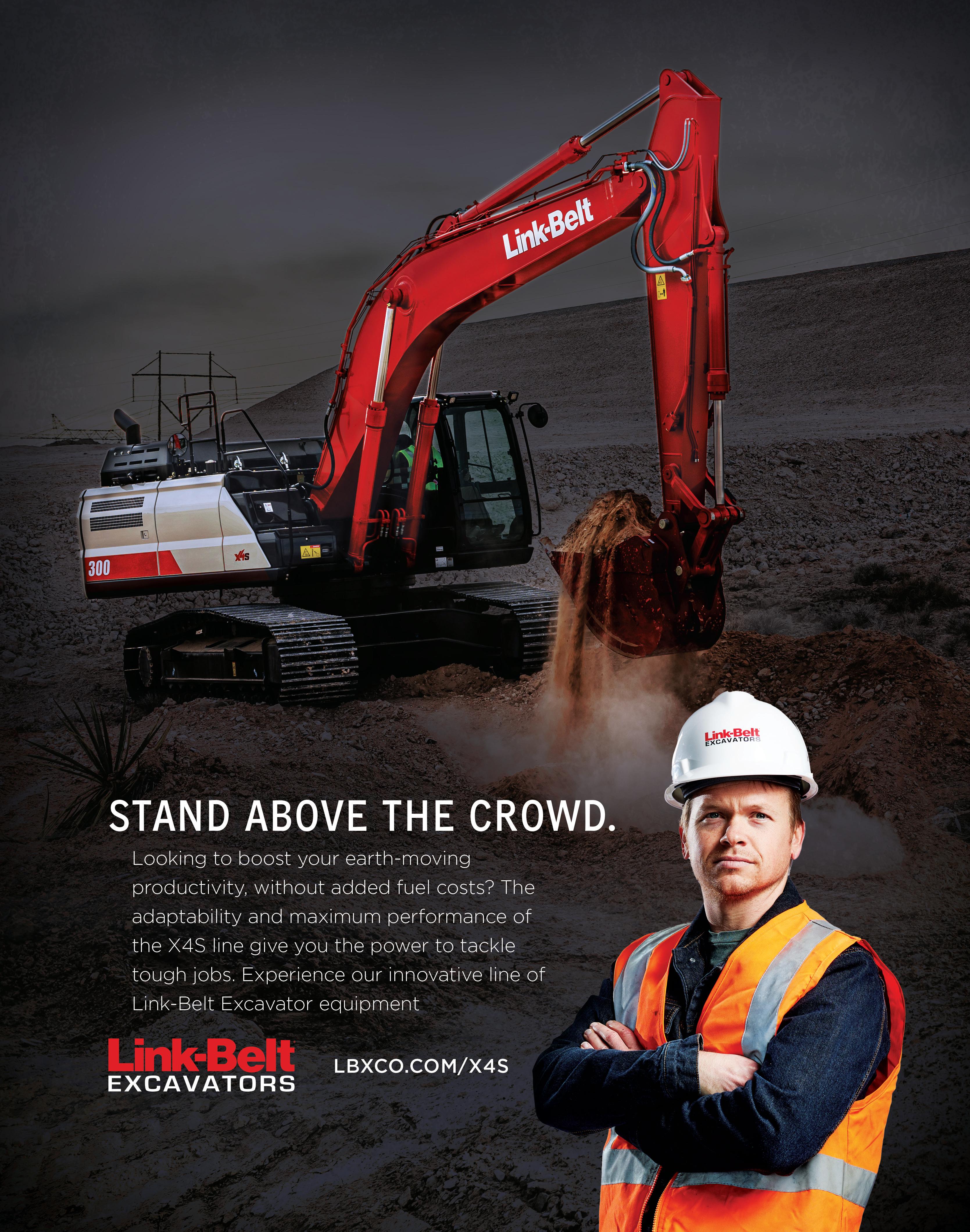
The types of data associated with tracking tool usage are numerous. Monitoring the location of equipment minimizes the risk of theft and improper use of tools by individuals without adequate training for the equipment. The ability to address theft and missing equipment directly by tracking location reduces the need to replace tools, preserving the company’s budget over the long term. Preventing equipment theft also helps reduce unforeseen delays and ensures jobs are completed in a timely manner.
Next, knowing when tools are idle or in use by operators can help with allocation, as well as keep billing accurate (for rental equipment).
A major takeaway from these examples is that, in most cases, it is not the amount of data collected from machines that determines one’s ability to raise productivity. After all, there is no shortage in the amount of data you can collect from sensors and loggers found on connected machines or vehicles. Instead, it how you analyze the data you have at hand, combine or match data sets together and assemble information that allows you to form new strategies that can enhance operations or uncover new perspectives. Ensure that the data you are collecting on the jobsite is accurate and relevant to your business goals.
Having a deep understanding of the types of data your equipment generates is a vital part of analysis on construction sites. This requires businesses to tap into readily available information generated every day by machines and equipment.
Read more at: https://eqtoday.co/data

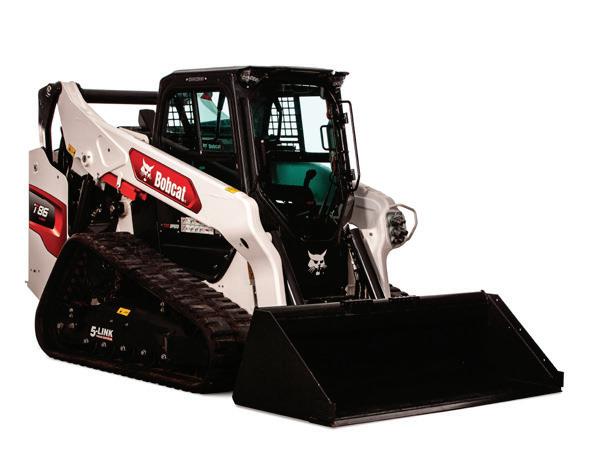
The redesigned TL8R2 offers a tipping load of 6,041 lbs. with an operating weight of 9,182 lbs.
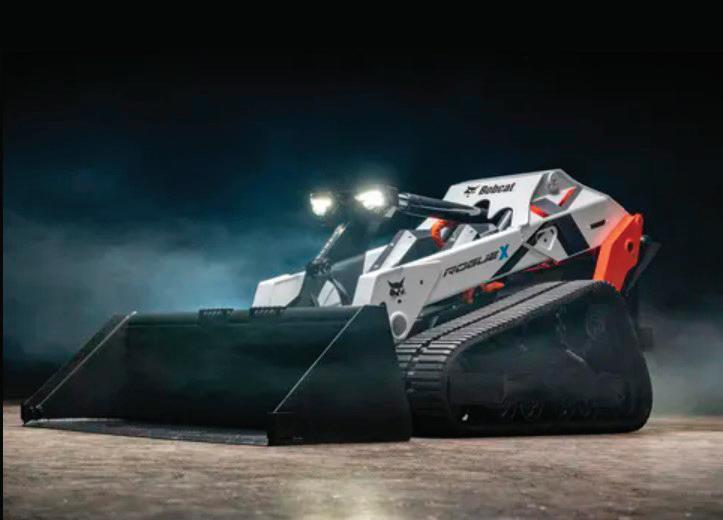

• 74.3-hp turbocharged, Tier 4 Finalcompliant engine features a DOC and DPF
• Creep Mode, standard on models with high-flow auxiliary hydraulics, enables forward speed to be matched to a particular attachment without having to constantly meter the travel lever
• Automotive-styled operator station with 5.7-in. color display with rearview camera and more
• Optional pressurized cab available
This Precision Grader Blade for largeframe compact track loaders is compatible with the use of laser receivers (single or dual), sonic tracers (single or dual), GNSS/ GPS (single or dual) and total stations.
• Plug and play attachment design with auxiliary hydraulics and 14-pin electrical connection
• 108-in. moldboard capable of jointly changing elevation and slope through dual lift cylinders and achieving 60° of combined blade rotation and 26 in. of combined blade side shift
• Motion and action controlled through the existing joysticks with no additional controls required
• Provides 97 in. of grading width even at full rotation
The 44,881-lb. 963 track loader combines the ability to dig, load, carry, fill and more with up to 10% better fuel efficiency, more productivity and cab and controllability improvements. Its 202hp Cat C7.1 Tier 4 Final/Stage V engine produces 15% more peak torque and includes Auto, Eco and Power Modes. The updated cab offers a suspension seat and adjustable armrests/controls, an intuitive 10-in. touchscreen dash display and standard high definition rearview camera. Slope Indicate shows machine mainfall and cross slope right on the display. Both the joystick option and V-lever/foot pedal controls provide fine, normal, coarse implement response to match operator preference. Options include the Performance Series bucket and Fusion Quick Coupler



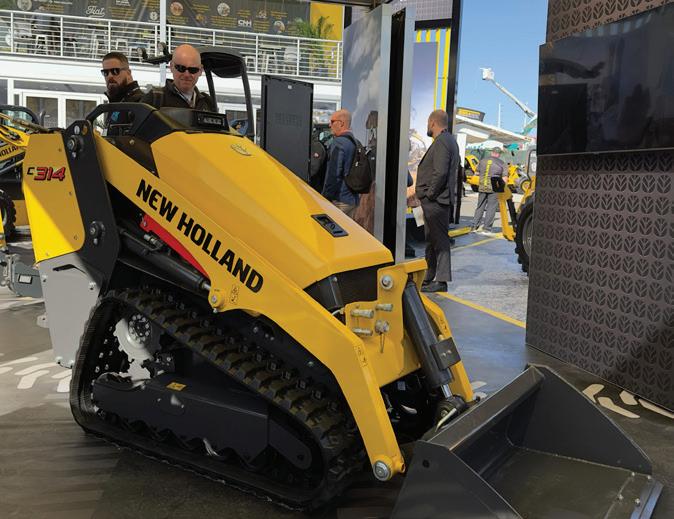
A lightweight stand-on mini track loader, the 25-hp machine, can be paired with an many loader attachments. The C314 has an auxiliary flow rate of 15 gallons per minute. Thanks to its approximately 1,000-pounds rated operating capacity (at 35% of tipping load) and 35 inches of working space, operators are able to power through mild structural projects. It also offers optimal dump height for easy loading. For greater machine control, the C314 mini track loader will uniquely position the operator closer to the drive and motor. As a stand-on machine, operators will experience more stability being positioned closer to the center of the machine.
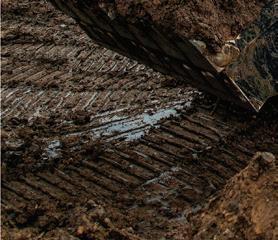
The Bobcat RogueX combines technologically advanced features to make it a one-of-a-kind conceptual machine. While most closely resembling a track loader, the machine is in a category all its own. As a research and development project, the machine was built as a proving ground to advance the Bobcat innovation roadmap, evaluate customer perceptions and test the limits of machine functionality. As jobsites change and operators turn to remote operation, Bobcat took its concept further by fully eliminating an operator station. The machine explores the idea of operating where humans cannot go to tackle more work in more places than ever from a remote position. RogueX is in the early research and development stage at Bobcat. No additional details on future commercialization are available at this time.
Bobcat has launched the T86 compact track loader and S86 skid-steer loader for tough jobs and construction work. Setting the T86 and S86 apart is Bobcat’s Premium Power Performance, a power management system that distributes power on loaders equipped with high-flow and super-flow hydraulics. Each component in the T86 and S86 loaders – including the engine, pumps and hydraulic system – has been engineered to deliver hydraulic performance. Bobcat attachments are engineered to be fully integrated with the carrier’s electronics, hydraulics and geometry. The T86 and S86 can power a wide variety of attachments including those specifically designed for super-flow hydraulics such as super-flow snowblowers, cold planers and forestry drum mulchers.
The LiuGong 856H-E MAX Wheel Loader is part of the company’s range of electric construction vehicles worldwide. The 856H-E MAX is reinforced by an IP67 rated wiring harness and waterproof integrated battery package. This machine is designed for worksites where traditional combustion engines aren’t allowed, or in fixed site operations where investments in charging infrastructure make sense. During use, the 856H-E MAX consumes zero fuel, produces zero emissions and creates lower noise and vibrations. The 856H-E MAX features intelligent controls and a human-centric design to support the operator experience. This includes load-sensing hydraulics, an EAT700 transmission with electro-proportional valve for shifting and independent control of the dual-motor drive for hydraulic lift.

With a rated operating capacity of 3,000 lbs. (1,369 kg), this 74 hp vertical lift machine is ideal for lifting and loading with the added versatility that comes from the ability to use a variety of attachments, including blades, tilers and trenchers. The 42-kW JCB diesel by Kohler T4F engine requires no exhaust after treatment. An industry standard quick hitch for quick coupling to all JCB attachments and all other brands. The standard hydraulic circuit is 70 lpm. A high-flow option up to 115 lpm is available for maximum attachment versatility. JCB’s Smoothride System option allows for improved load retention and faster loading cycles.
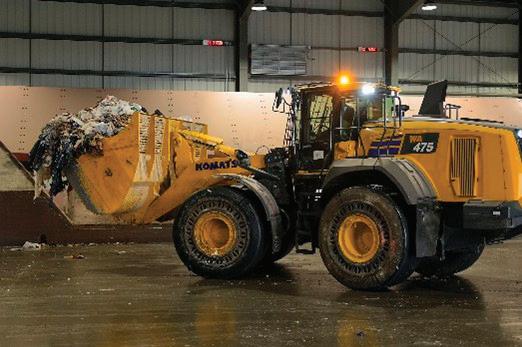
To meet the challenges of material handling, Komatsu’s WA475-10 WH is a heavy-duty wheel loader with customizable waste guarding packages and tire options that can be configured for specific waste or scrap handling applications. Displayed at CONEXPO/ CON/AGG 2023, the WA475-10 WH was developed based on customer feedback and incorporates a pressurized cab, machine visibility and operational features like independent work equipment control. In addition to the customizable waste guarding package, optional joystick steering for maneuverability and visibility is also available. The model includes the next-gen Komatsu hydraulic mechanical transmission (K-HMT).

Available in 2024, the 116-hp compact track loader (CTL) is on the large-frame size of CTLs from a hp perspective, making it a high-performance grading and excavating machine. The CTL will come standard with a torsion suspension system, providing a smooth ride for operators and additional stability with lifting and carrying:
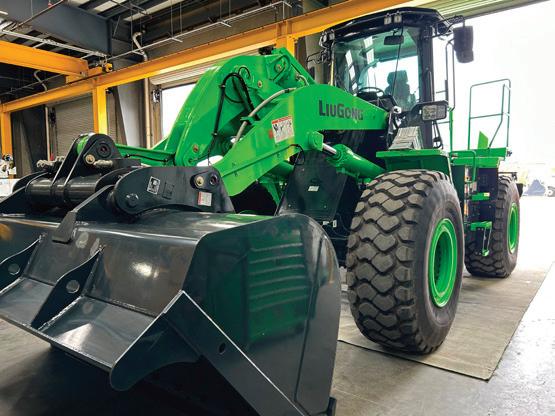
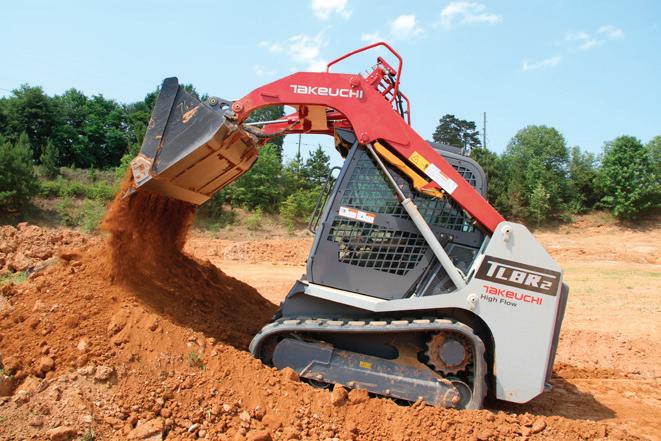
• Operating weight: 12,604 lb. (5,717 kg)
• Rated operating capacity: 3,657 lb. (1,662 kg)
• Ground pressure: 5.7 psi (39.3 kPa)
• Auxiliary hydraulic flow, standard: 23 gpm (87.1 L/min.)
• Auxiliary hydraulic flow, high-flow: 40 gpm (151.4 l/min.)
• Travel speed: 5.3/8.7 mph (8.5/14 km/hr)

Japanese-made and U.S. customized and distributed, the IC100-5 is versatile and powerful, designed for a wide range of construction applications. It features a 268 hp Cummins diesel engine to power through heavy-duty tasks, and a joystick for smooth operation and easy maneuverability in tight spaces. This 12-ton machine has a high-capacity payload of 22,000 and a low center of gravity. It is only 102 in. wide, which means it doesn’t require a wide-load permit. This crawler carrier also comes with an optional hydraulic winch. The IC100-5 is designed with both operator safety and comfort in mind. It features a spacious cab and ergonomic controls, which provides maximum visibility and ease-of-use for the operator. The carrier is also equipped with a number of safety features, including multiple camera angles and a ROPS-compliant cabin.
Yanmar Compact Equipment launched the TL65RS, TL75VS, TL80VS and TL100VS ranging from 67 hp to 103.5 hp. The new compact track loaders (CTLs) cover a range of customer needs. They round out Yanmar’s compact equipment lineup made up of mini excavators, compact wheel loaders and tracked carriers. The new line is designed for construction work, rental applications and more. Tier 4 Final Yanmar diesel engines offer performance in outdoor jobsites. The machines have 360-degree visibility and a standard suspended seat. A removable roof hatch escape offers a safety feature for operators. The TL100VS will start production in the spring of 2023 while the other three machines will begin production in late 2023.
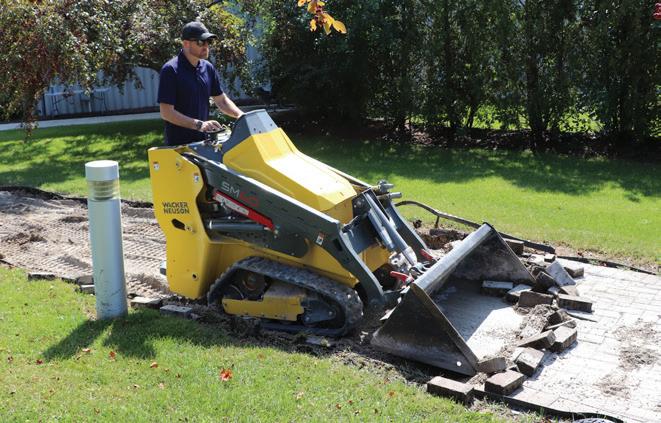
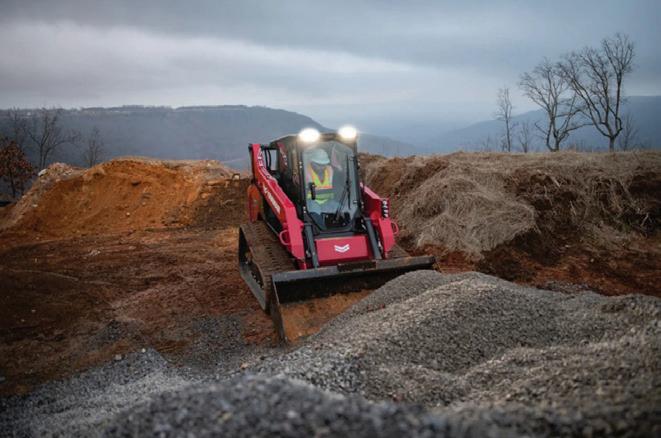


These stand-on loaders are designed for operator comfort, ease of operation and to reduce total cost of ownership. The largest in the series is the SM120, powered by a 24.7hp Yanmar diesel engine, the SM120 has a rated operating capacity at 35% of 1,226 lbs. and a travel speed up to 5.2 mph, providing fast cycle times. The 41-in. wide machine is equipped with 11-in. wide tracks providing ultra-low ground pressure to greatly reduce turf and soft ground disturbance, while also enhancing traction and stability for hill operation. The SM120 also features a radial path design and hinge pin height of 85.6 in.
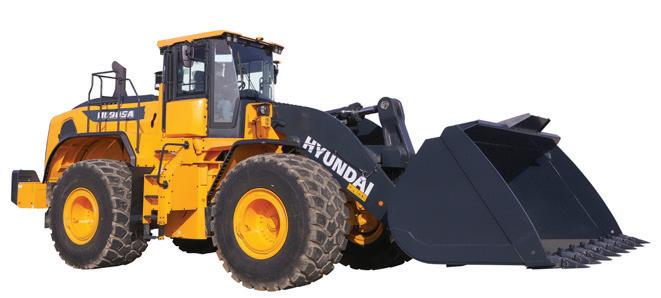


As the largest model in Hyundai’s A series wheel loader product line, the new Hyundai HL985A wheel loader offers a standard bucket capacity of 9.1-yd.3 (7.0-m3) for use in high-production jobs such as quarrying, aggregates and other mass-volume material handling applications. The Hyundai HL985A wheel loader is powered by a 430-hp (320-kW) Cummins X12 Performance Series engine, delivering power and torque, while meeting Tier 4 Final and Stage 5 emissions standards. Heavy-duty ZF axles with wet outboard brakes and with coolers are standard equipment on the HL985, which is powered by a ZF 5-speed transmission. The Hyundai HL985A offers a range of standard features. For example, Smart Power Mode adjusts the engine speed in heavy-duty applications. This can help with balancing traction and breakout forces. Hyundai’s Eco Gauge function enables the operator to monitor fuel consumption in real time or to review historical data.
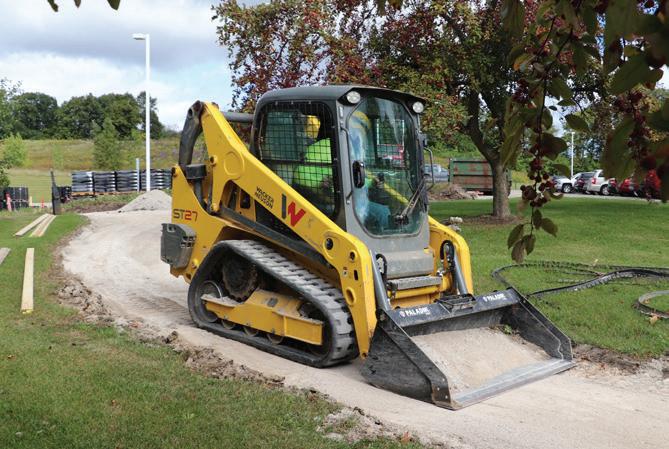
The 114-hp TV620B has a 6,200-lb. rated operating capacity, a bucket breakout force of 12,084 lbs. and 74 in. of track on the ground.

• Heavy-duty undercarriage and 17.7-in. rubber tracks allow for 6.1-psi ground pressure


• Standard adjustable electrohydraulic controls, high-flow hydraulics, auto ride control, one-way self-leveling, hydraulic coupler, auto-reversing fan and LED light

• Cab features a redesigned operator interface, 360-degree visibility and an 8-in. LCD multifunction display
• Rearview camera visible in a splitscreen display with machine data


There are new options for the Cat Smart Grader Blade and Smart Dozer Blade. The external control kit for GB120 and GB124 smart grader blades expands use of these blades to Cat D and D2 series SSL and CTL machines, enabling customers with previous model fleets to run smart blades. The new 3D grade control kit uses existing connections to add automatic blade control to the Cat Smart Dozer Blade. The external control kit provides a means to run smart grader blades on all D-series and select older Cat machines. Simplifying operation, GB120 and GB124 blades detect whether they are being operated on a D3 series or machine with the external controller.
Weighing in at 7,350 lbs., this machine is easily towable and with a Rated Operating Capacity of 1,890 lbs. (@35% of tip), the ST27 comes with a 74-hp Kohler KDI 2504 turbocharged engine. The compact design, measuring 60-in. wide and under 80-in. in height, offers reach at dump height of 36.5 in. The ST27 offers a hinge pin height of 120 in. and dump height of 94.3 in. It features a 2-speed standard travel drive that offers a 9.1 mph speed resulting in faster cycle times. There is a standard auto-shifting 2-speed drive system which can be active or disabled. It automatically senses the operators need to shift. The auto feature engages in and out of the two speeds based on joystick input and eliminates the need for manual shifts.
Compressors are able to adapt operations to best suit the needs of a jobsite, especially with increased "smart" features.
Smart compressors are another piece of construction equipment being added to the lineup of technological advances on the jobsite, which enables better performance through less work. There are several options on the market, including Atlas Copco’s smart compressors, which are designed for advanced connectivity that transcend the days in which an operator had to walk the production floor to take compressor readings and adjust parameters. They serve as one of several examples of how connectivity paves the way for easier jobsite management and monitoring, leading to greater efficiencies, reliabilities and sustainability through adaptable performance and intelligent features.
There are three main ways in which compressors have become ‘smarter,’ noted Paul Humphreys, vice president communications and branding, Atlas Copco Compressors.
“First, they offer advanced connectivity,” he pointed out. “For many people, connectivity is what comes to mind when they think of ‘smart.’ But for a compressor, the ability to adapt and optimize its operation to its working conditions might be even more important. Finally, compressors become smarter as their individual features become intelligent.”
Speaking to the benefits of smart compressors, Humphreys noted that advanced connectivity, adaptive operation and intelligent features allow compressors to boost air system reliability and efficiency.
They also offer new, remote control and monitoring options, allow for a connected production, and adapt to ambient conditions, he added.
Addressing the role smart compressors play on a jobsite, Humphreys pointed out that smart compressors adapt their performance to their
operational conditions and to the air system demands.
A key innovation is a variable speed drive (VSD), which goes beyond preset operations to enable compressors to adapt their performance to their operational conditions and to the air system demands.
“Introduced more than two decades ago, VSD still belongs in this chapter about important innovations. That’s because the technology has been refined in that time,” said Humphreys. “A VSD air compressor of the latest generation can now offer energy savings of up to 60% compared to fixed-speed models.”
Atlas Copco’s newest VSD compressors also feature the Smart

Temperature Control system. It adjusts the oil injection temperature to the actual running conditions.
“This real-time optimization ensures maximum compression efficiency and eliminates the risk of condensation to boost reliability,” said Humphreys. “Algorithms are increasingly making the difference. The new GA VSDS, for example, comes with
an intelligent Boost Flow Mode and a limp mode.
“The former lets you meet peak demand by exceeding the compressor’s maximum capacity for a certain amount of time without harming the compressor. Limp mode ensures the compressor keeps working even when something is wrong.”
On the fixed-speed side, the smart unload algorithm in the latest generation of Atlas Copco GA+ optimizes the compressor’s time to unload to reduce energy use, Humphreys added.
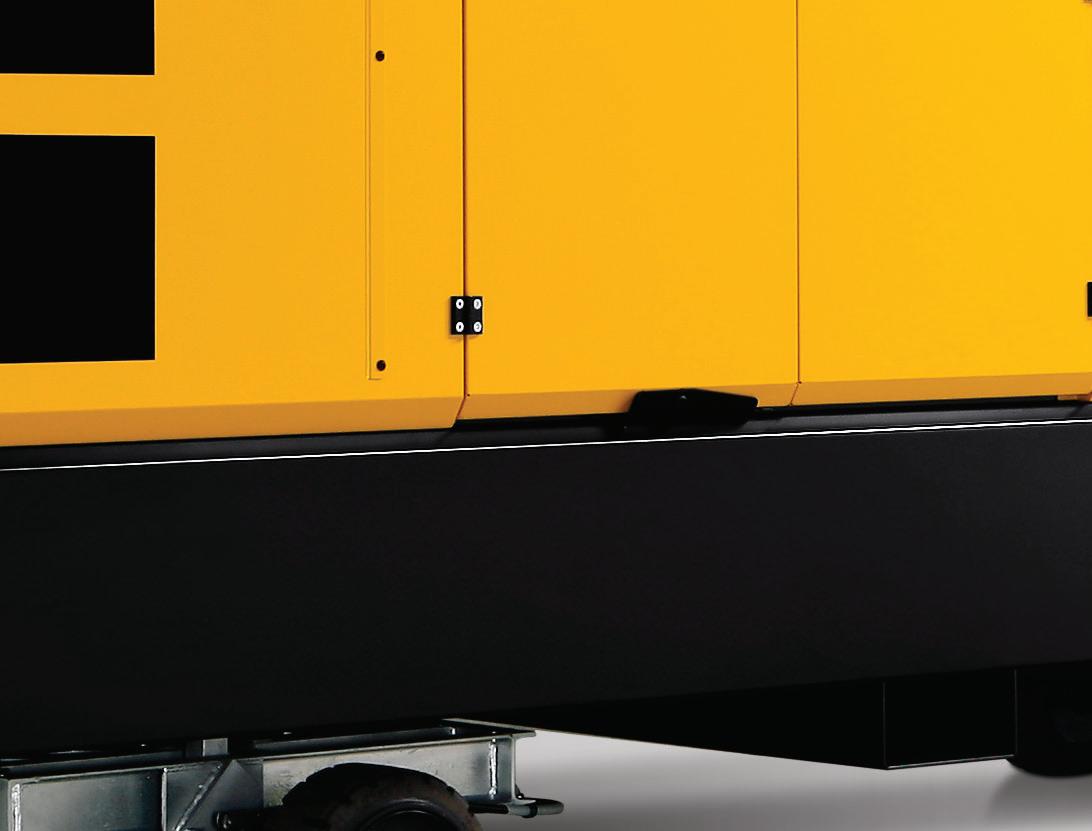
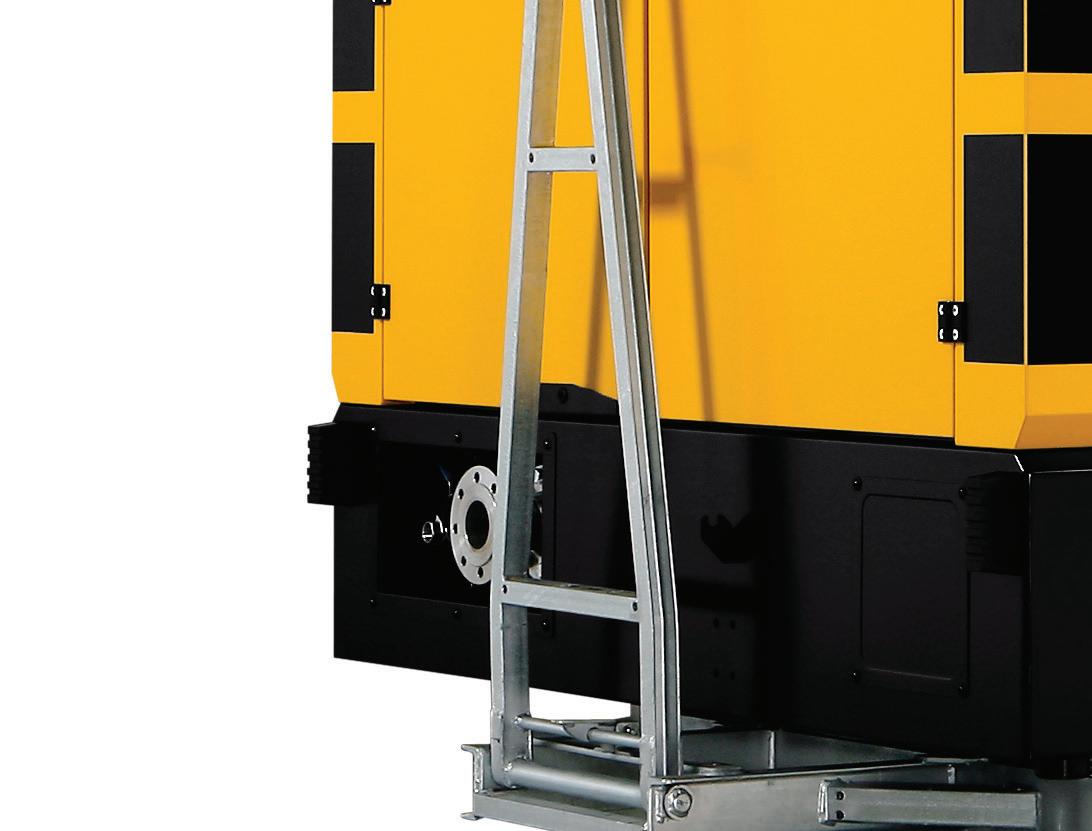

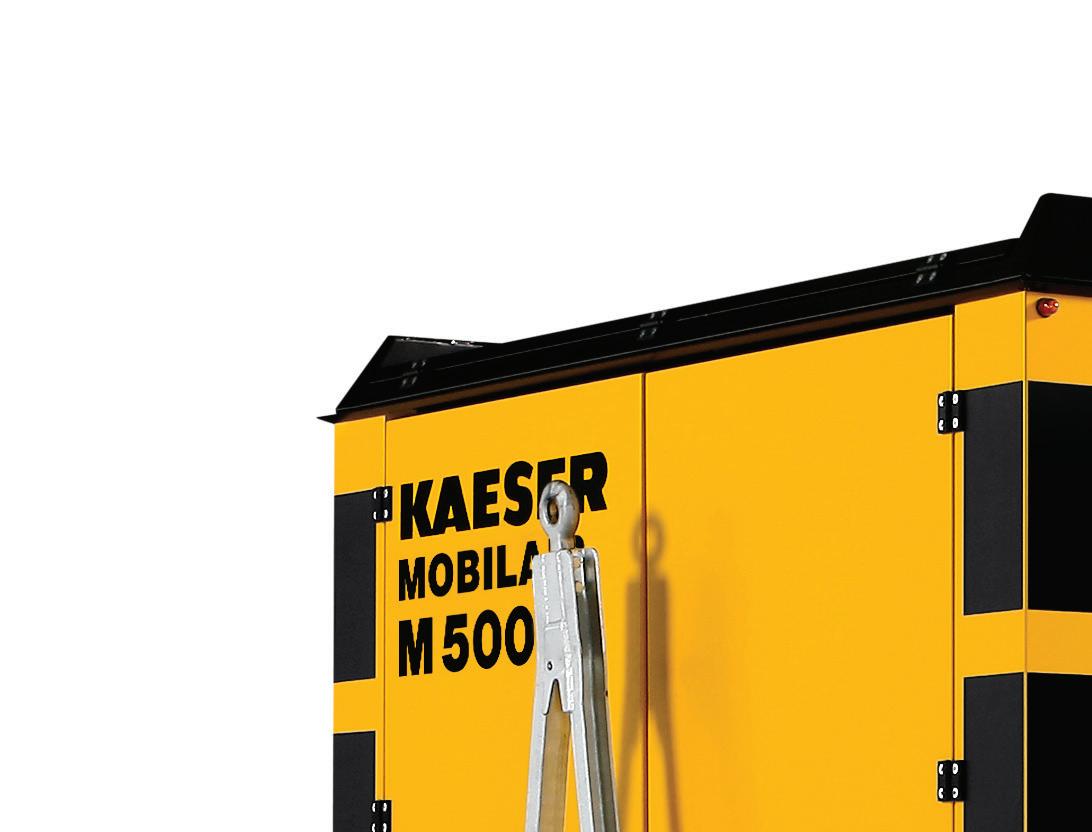
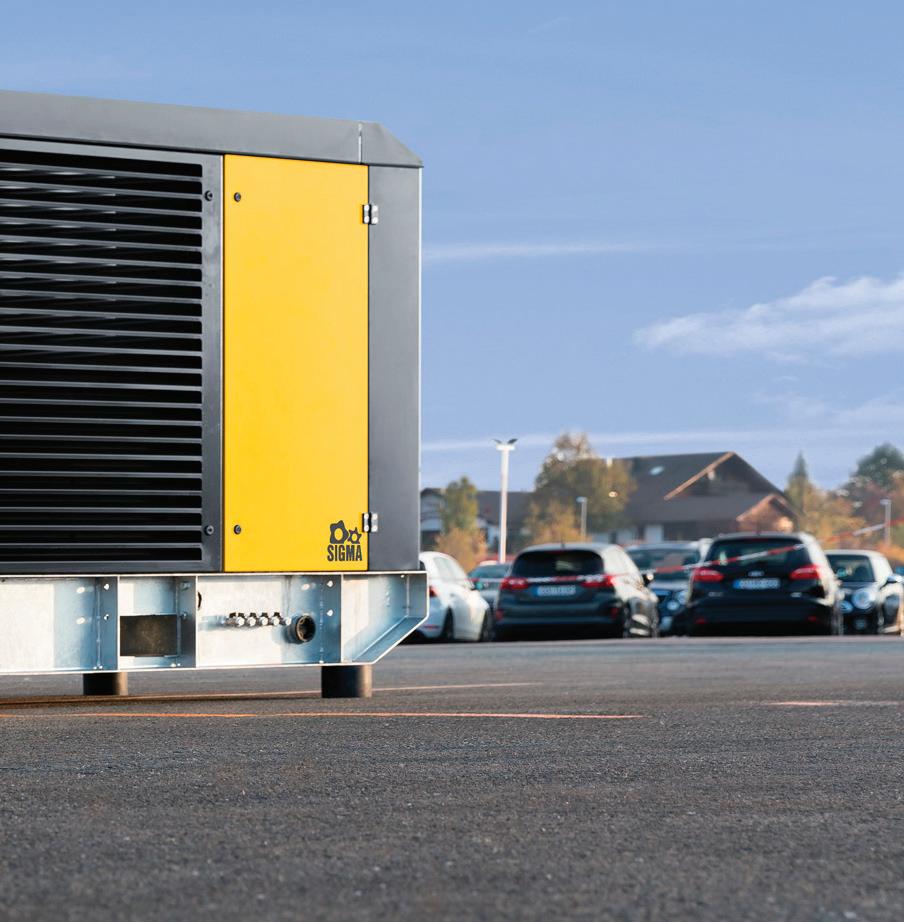
Even mechanical components are getting more intelligent, Humphreys pointed out.
“Smart water drains, for example, ensure the automatic removal of condensate, auto-cleaning, and the detection of potential issues.
Consumable sensors continuously monitor the pressure drop in the inlet filter, the oil filter and the oil separator to optimize performance,” he added.
Remote monitoring plans such as SMARTLINK allow the operator to monitor the performance of an air compressor from a computer, smartphone or tablet.

“SMARTLINK also presents you with insights to identify opportunities for optimization. And it shows you service timelines and maintenance alerts,” Humphreys said.
Atlas Copco pointed out that management of facilities these days always involves remote monitoring and control. In the 4th Industrial Revolution (Industry 4.0), machines should be able to send information which can be
who manage the units and is only possible if machines are connected.
Advanced connectivity is achieved through controllers. The Atlas Copco Elektronikon, for example, offers a host of control and monitoring options and algorithms such as customized timers and efficiency controls.

For those using more than one unit, the Atlas Copco Equalizer can coordinate up to six compressors and distribute the workload in a way that is balanced between all units or operators can choose to primarily run the newest machines to maximize efficiency. It also can set two pressure bands for different times of day, such as day and night shifts.
The Optimizer is the controller for a setting of more than six units. The device is designed to optimize the compressed air and blower system operation while set pressure and flow are being met.
It is designed to maximize energy savings and keeps units in good running condition with a proactive approach to maintenance through online monitoring. The central controller is ready for Industry 4.0, or the Internet of Things, and is designed for smart factories.
The Optimizer 4.0 compliments the efficiencies of Atlas Copco compressors and blowers by enabling multiple units installation to run with optimum pressure or flow band while prioritizing machines that will have more efficient combination.


The central controller is designed to realize the full energy saving potential of VSD units by regulating the VSD to cope with varying demand while avoiding fixed speed machines to run unload whenever possible.
Combining multiple units with the Optimizer 4.0 leads to an even load distribution among compressors and blowers to equalize their running hours, enabling planning and operation of the preventive maintenance.
Compressors and blowers operating with Atlas Copco’s central controller will have fewer load/unload cycles and operate at the lowest possible pressure/flow to extend a machine’s lifetime.
Humphreys pointed out that those running a connected production will want to know about OPC UA-enabled compressors – OPC UA stands for “open platform communications unified architecture.”











“In technical terms, it is a machineto-machine communication protocol that was developed for industrial automation,” he said. “In layman’s terms, it is a universal language that allows different machines in a production facility to ‘talk’ to each other. This ensures that industrial processes run much more smoothly, efficiently, and reliably.”
Speaking to the importance of having smart compressors on a jobsite to integrate with a connected jobsite, Michael Camber, marketing services manager, Kaeser Compressors, noted that “like other construction equipment makers, some portable compressor companies offer models with more advanced controls. As technology
costs for small computers and sensors declines, these controls can track and respond to more operating data.
“This information is used to ensure the equipment operates within design parameters with the goal of ensuring longer life and reliability,” he added. “In the case of diesel-driven compressors, these conditions include fuel, DEF and oil levels, motor and air end temperatures, battery voltage.”
Further, newer machines may offer options to remotely monitor equipment conditions and location via telematics services that enable access from PCs, laptops, tablets or phones from across a large jobsite, across town or in another state, Camber pointed out.
There are significant benefits in doing so.
“The biggest benefits are being able to monitor equipment operational and maintenance status,” said Camber. “These newer communications capabilities allow fewer people to manage greater numbers of assets and keep them productive with minimal manpower and interruption.”
Examples include knowing if fuel or DEF levels are getting low and being alerted to upcoming service intervals so that preventative maintenance can be scheduled at a convenient time and place, he pointed out.
Another benefit is being alerted to shutdowns or conditions that could lead to shutdowns if not addressed, and communicating the codes that enable service teams to prepare for the specific problem before dispatch, Camber added.
“It allows the asset owner, renter or even the manufacturer to monitor the equipment and dispatch service teams as needed,” he said. “Construction and equipment rental companies
with fleets can better manage service scheduling, and in some cases monitor asset location. Pre-set geofencing will prevent operation of assets that have been moved from assigned locations.”
Across its entire Mobilair product line, Kaeser has been steadily advancing the capabilities of its onboard interfaces to provide more condition information and more convenient and intuitive controls, Camber pointed out.
“In particular, Kaeser's 1,600-cfm M500-2 oil free units driven by CAT C18 diesel engines and our brandnew e-power M250E and M255E with electric motors have these communications features,” he said.
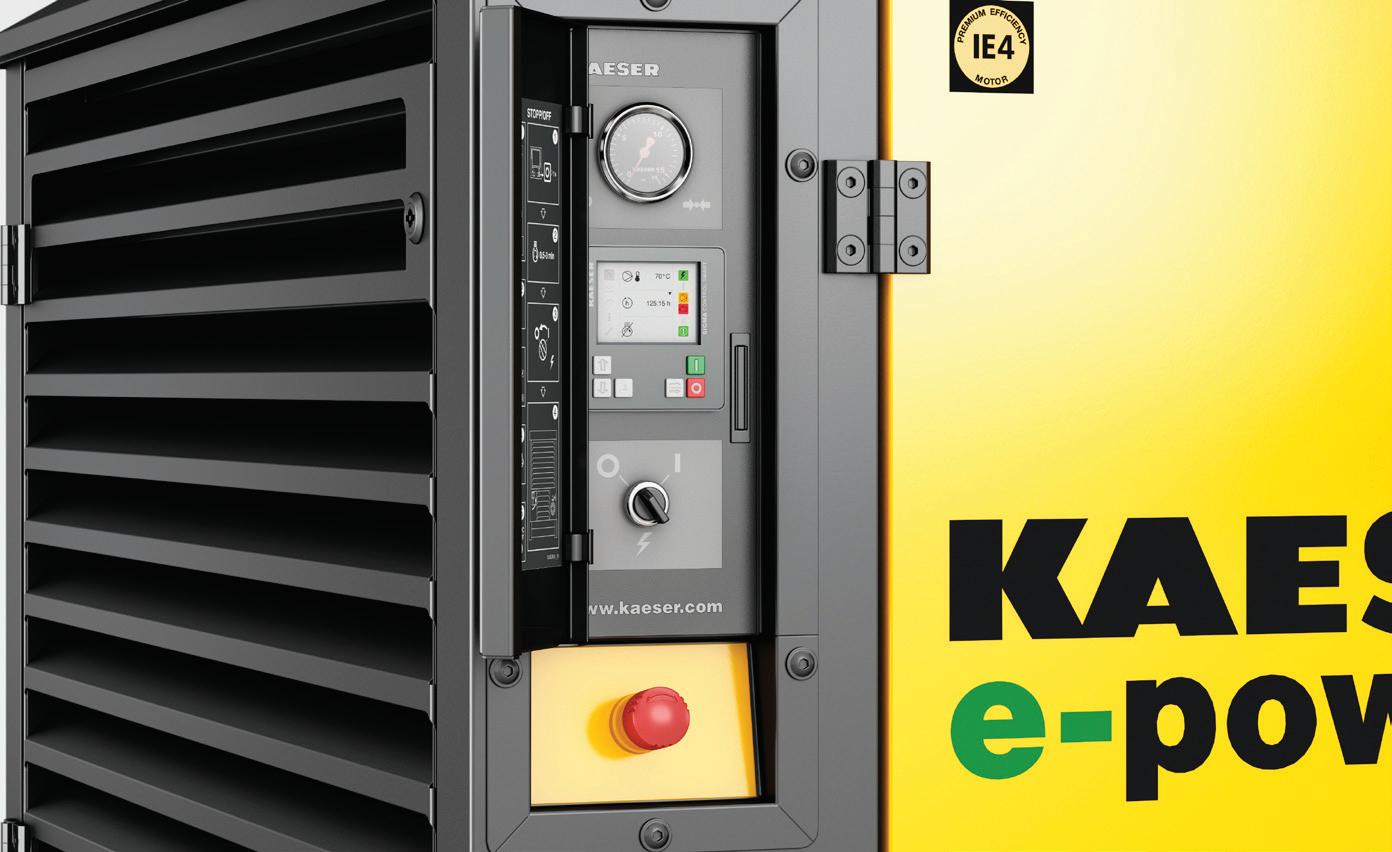
The Mobilair M500-2 was designed to provide reliability, fuel efficiency and flexibility, delivering up to 1,600 cfm with a pressure range of 60 psig to 150 psig. Its 600-hp Caterpillar C18 diesel engine meets Tier 4 Final exhaust emission standards.
M500-2 is designed for heavy industrial, processing, and manufacturing operations including chemical, refinery, midstream/pipeline, food and beverage, pulp and paper, shipyards, mining, and large construction sites.
The machine can be rented or purchased to supplement plant air during peak production, provide backup for critical applications, or support maintenance shut downs and turnarounds.
The M500-2 features a fold-up tow bar and steerable front axle for onsite maneuvering. It also features fork pockets and lifting eyes for full flexibility. It is designed to run continuously for 12 hours without the need to refuel; the external fuel connection and external DEF tank further extend operating hours if needed.
The onboard Sigma Control Mobil is incorporated into the machinery
to match air flow to meet varying air demand while maintaining steady pressure. With standard Proemion telematics and GPS/GSM-modem, operating status and maintenance conditions can be remotely monitored via laptop, smart phone, or tablet. The M500-2 can be started remotely while the geofencing feature can be used to prevent unauthorized use.
New to the market, Kaeser’s MOBILAIR M250E and M255E compressors offer the advantages of electric compressors in weatherproof, skid-mounted packages.
The fully electric M250E/M255E skid-mounted compressor is designed for outdoor operation without the need for additional weather protection. It provides 565 cfm to 990 cfm with pressures from 87 psig to 200 psig, enabling them for use as either shortterm or long-term rentals, back-up for industrial applications, or as a permanent installation in challenging environments.
The M250E/M255E compressors feature a compact design with lashing and lifting eyes and forklift pockets for ease of transport and placement on site.
Standard equipment includes the Sigma Control Smart offering intuitive control with maintenance reminders and real time operational data from a lockable, protected control panel.

The pressure is adjustable to suit the application’s specific requirements. Additional features include Super Premium IE4 efficiency drive motor, standard modulation control, and a built-in aftercooler with condensate separator. Internal heaters extend standard operating temperature range from 14°F to 104°F.
Kaeser offers services to monitor the equipment remotely and to inform the user/owner so they can address refueling, preventative maintenance or troubleshooting and repair.

Camber sees no challenges in using smart compressors, only benefits.
“These smarter machines with communications capabilities decrease downtime, increase equipment reliability and leads to more productive jobsites,” he said. “They allow those using the compressed air to focus on doing productive work rather than babysitting equipment they may not be very knowledgeable about or qualified to tend.”
Humphreys pointed out smart compressors have the same needs as any mechanical equipment.
“They need to be serviced and maintained,” he said. “The good news is they will let you know directly when they are experiencing or about to experience problems. There is no real downside, apart from learning some of the app and controller technology if this is new to you.”
Carol
Read more at: https://eqtoday.co/smartcompress























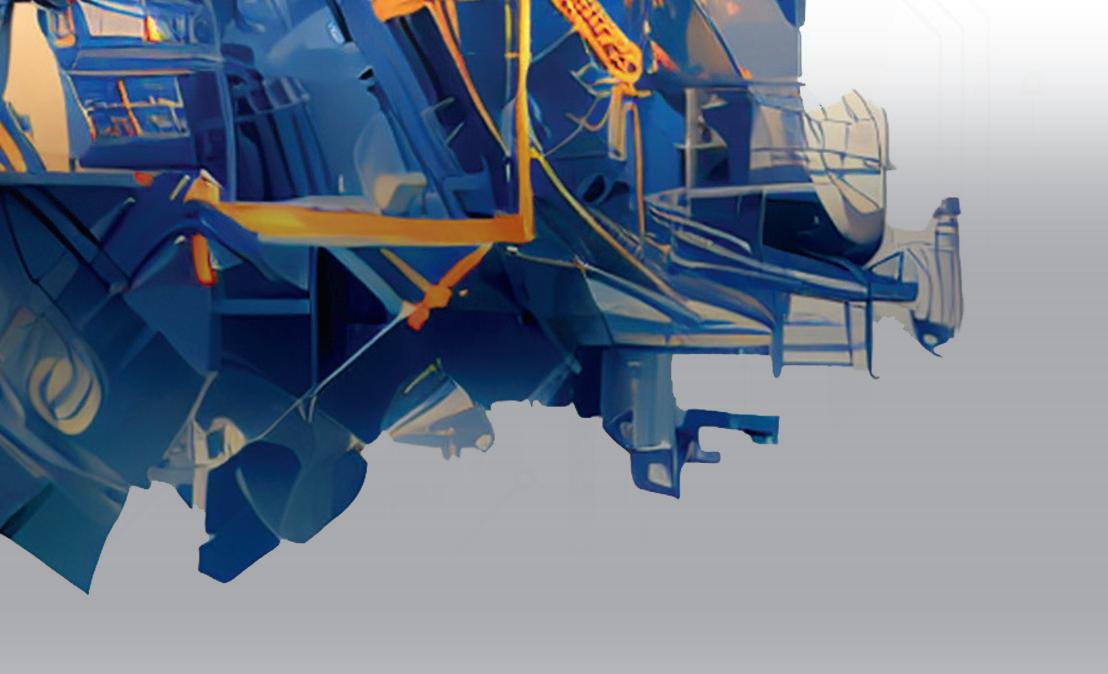

The expression “more power to you” is not usually meant in the literal sense, but rather to encourage someone or show approval of their actions.
However, in this case, it's meant in the literal sense.
Generator and compressor manufacturers explain how rental companies — and their end customers — can get the most out of their powergenerating equipment.
When helping contractors decide on a compressor, rental companies should ask as many questions as possible to find out what application the equipment is being used for, what kind of work the customer is doing, what type of tools they’re using, the number of tools they’re using, etc., according to Chance Chartters, sales manager, Mobilair portable air compressors, Kaeser. Similarly, contractors should rent equipment knowing its applications on the site.
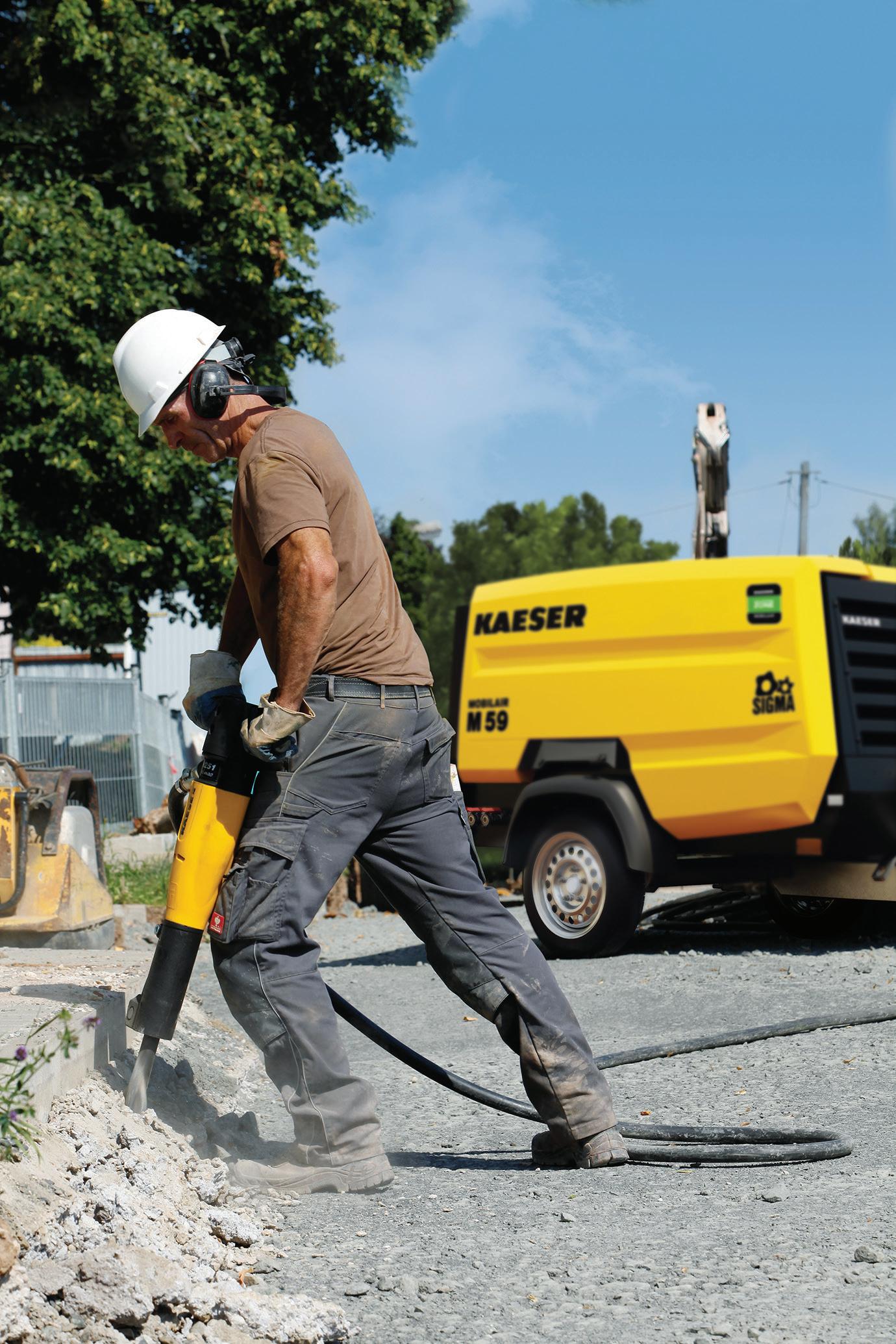
“You want to find out the items about the job or the application that will be helpful in making sure they get the right size compressor for their job,” Chartters said. “The best thing is to know who their customers are and what their typical customers rent when they come in to rent a compressor and what they're using it for. The rental house should know what tools they're running along with the air compressor and what flows are required for the tools they rent.”
Those same questions come into play when renting generators.
“The most common way to get an accurate sizing is to list all the equipment that you really want to power and the energy requirement for each piece of equipment, and then size your generator in accordance with that,” said Tim Doling, global director of innovation and development at POWR2.
However, he noted that there are certain variables that are difficult to predict.
“You may have a whole list of equipment, but you don’t know if it’s all going to be turned on at the same time or what equipment is going to be used when, so you really have to size it based on the worst-case scenario, which is to say that first thing in the morning, crews get to the jobsite, and they switch everything on all at once,” Doling said. “There’s going to be a massive spike in demand, and you have to size the generator based on that spike in demand.”
If generators are not sized appropriately, they will not run efficiently, leading to service issues.
“When a generator is not running at its required load, it's building up carbon particles on the exhaust, called wet stacking,” Doling said. “This can eventually lead to the generator actually failing. It’s more a service issue, but then there's also the environmental fact that the generator is running inefficiently, and unless you put an artificial load on it to make it run at its peak efficiency, you're actually just wasting energy there.”
To help contend with load and sizing issues, battery energy storage systems
have come on the scene to create hybrid solutions.
“By putting a battery or an energy storage system in line with the generator, you only use the actual energy that's required by the load, so generators can be switched off for long periods of time,” Doling said. “We just
provide the power needed for that item, and then when the battery is depleted, we call for the generator to come on. So, we run the generator for a short period of time at peak efficiency rate and switch it back off again.”
In other words, Doling said that generators that are running 24 hours
For battery-powered equipment, it's important to remember that battery solutions produce power silently.
a day inefficiently could instead be running as little as three to four hours a day efficiently.
“The batteries can help smooth out the peaks and troughs and load, so the generator just runs when the peaks are required, and the battery can take up the periods of low load,” Doling said.
The battery systems typically consist of three basic components: batteries, inverters to convert the energy between DC and AC output into a usable form and a control system, according to Aaron LaCroix, product manager at Generac.
LaCroix adds that the battery energy storage system is going to be connected to some type of charging source in the case of mobile power such as a diesel generator.
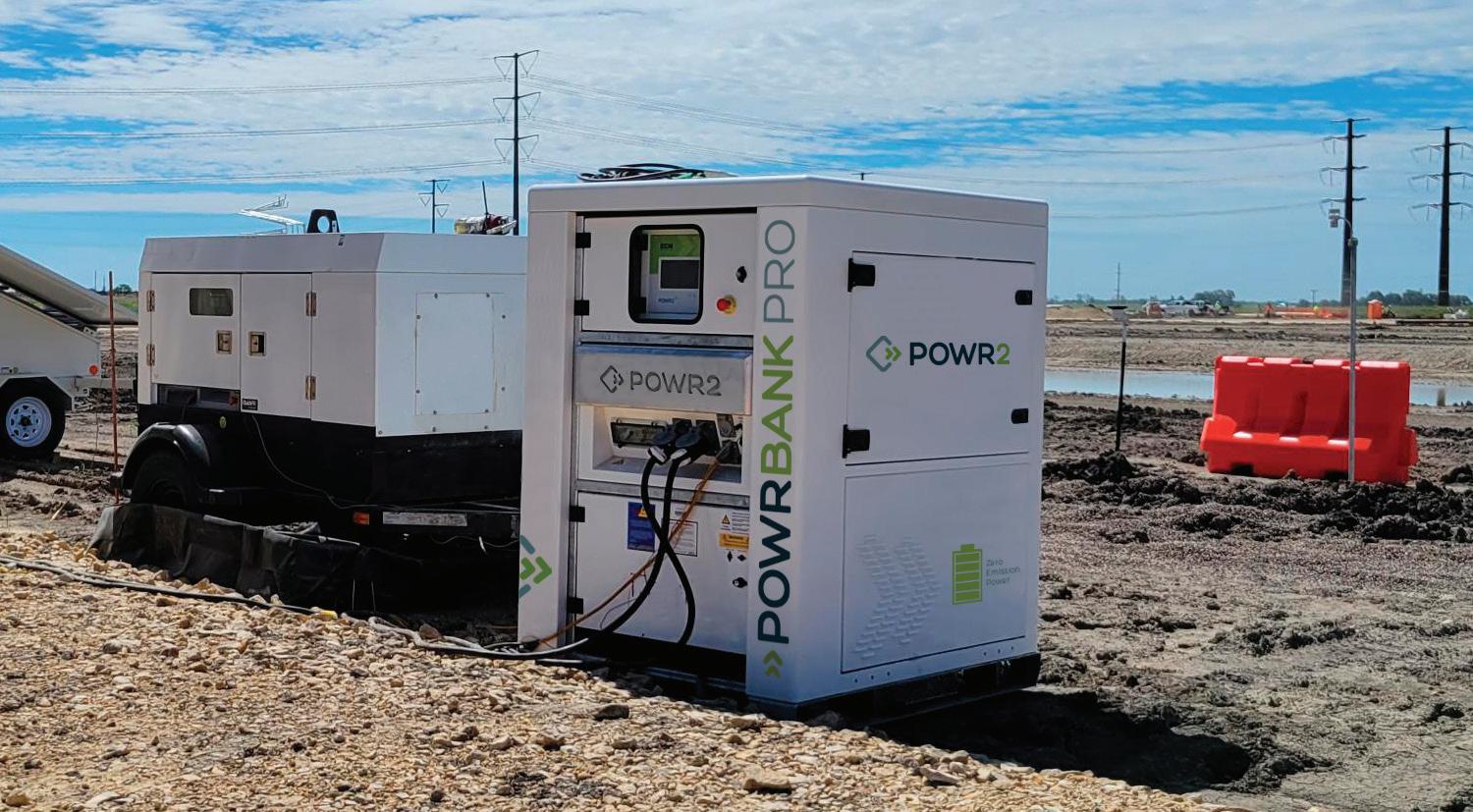
“Generators by themselves have the advantage of a long run time when they have a full tank of fuel, so depending on the load, you could run for days at a time, but with the battery energy storage system, you can easily power both low loads and variable loads while emitting zero sound and zero emissions,” LaCroix said. “Working together, they’re designed to run at optimum efficiency, so combining these technologies allows for even longer run times.”
LaCroix adds that other benefits include a reduction in both fuel consumption and maintenance costs.
“In the mobile air industry, we’ve really seen a shift to more sustainable solutions and reducing greenhouse gas emissions,” LaCroix said. “This technology can make a significant impact on companies that have targets to reduce their emissions.”
Hydrogen generators also make up a portion of the new technology in the generator space.
“It’s very clean burning and plentiful, but there are some challenges about how to transport it and safely bring it to jobsites,” Doling said. “However, the desire for clean solutions means that hydrogen is being looked at seriously, in addition to other gaseous fuels.”
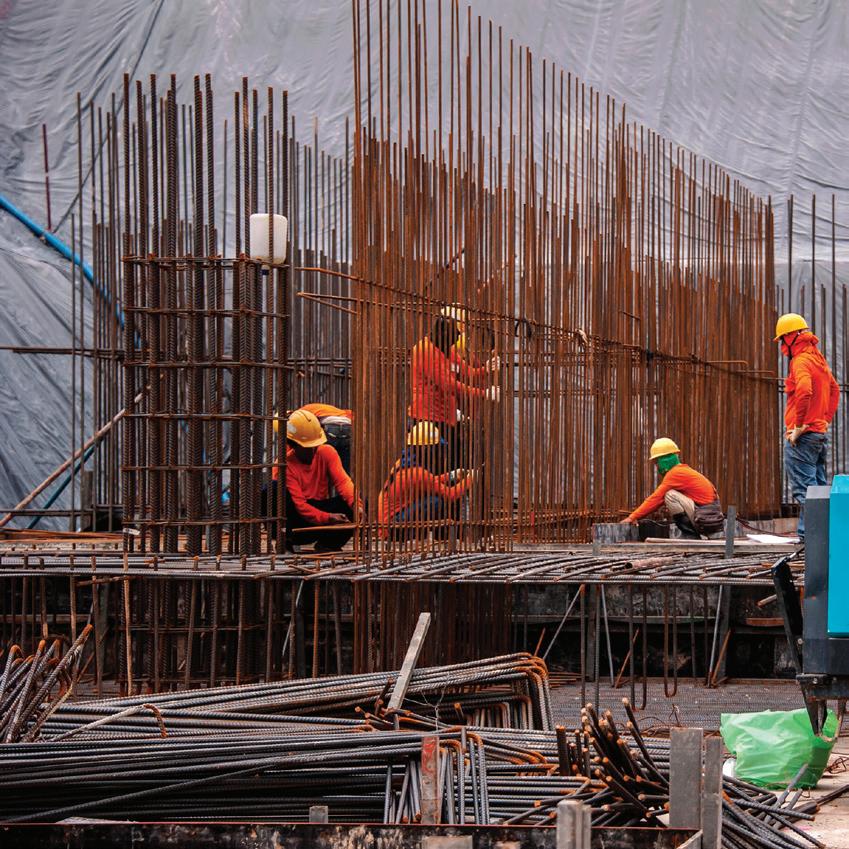
As with any piece of equipment, rental companies should ensure that everything is operating properly on generators and air compressors before renting them out.
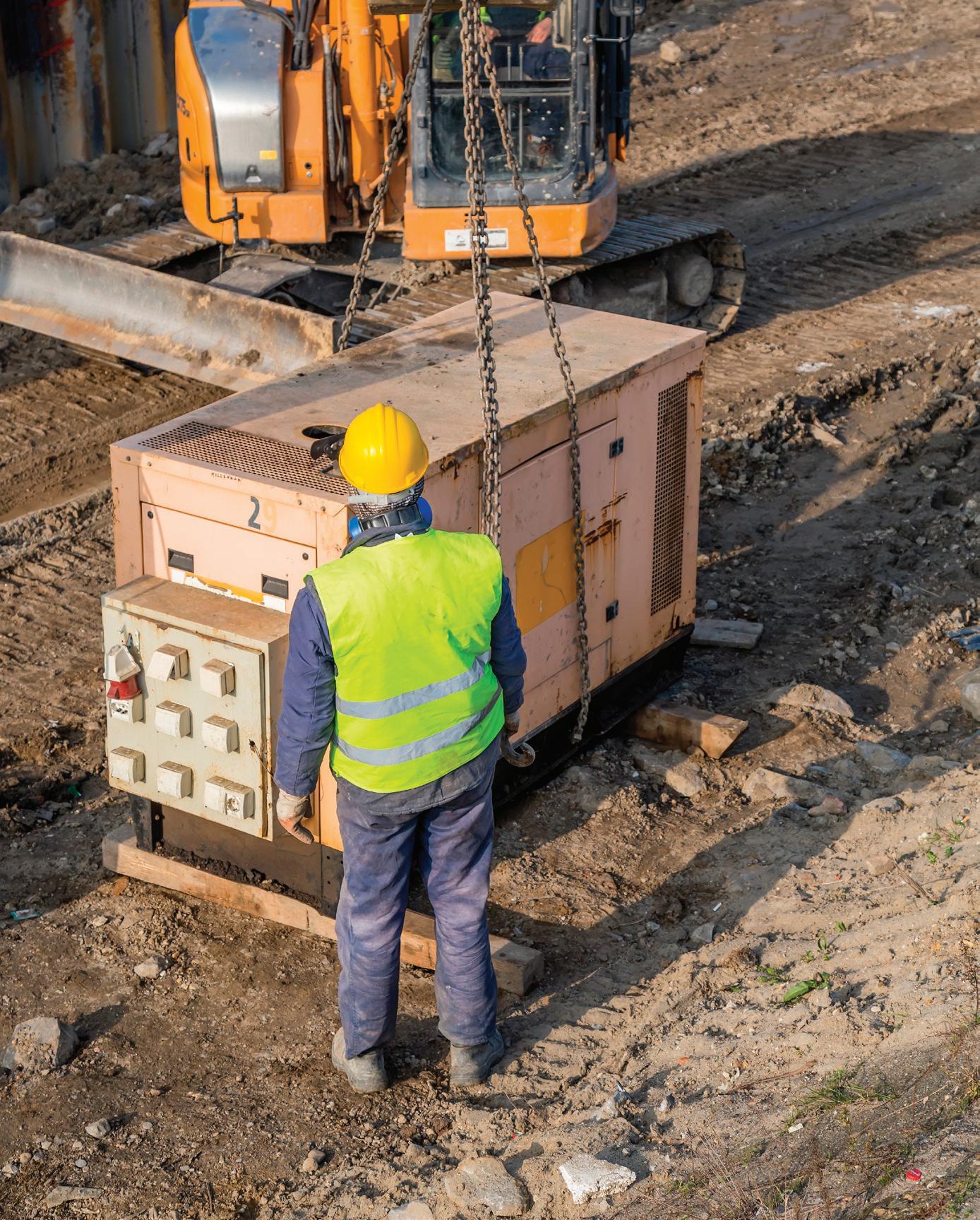
For compressors, rental houses should also check the hoses attached.

“It’s called a whip check, and it is a little cable that goes between the connection of the air compressor and on the hose itself,” Chartters said. “So, if for some reason, the hose does become uncoupled with the air compressor, it keeps it from whipping around. When you connect it to the air compressor, there's a safety pin that keeps the claw coupling from coming out as well. So, make sure those safety pins are used.” When it comes to battery-powered equipment, rental customers should reiterate to their customers that battery solutions produce power silently. “Because they have years of experience running diesel generators and other enginepowered equipment, they are used to something making noise when it’s producing power,” Doling said. “We have to reinforce that all the time because it could be a potential safety risk if someone is not aware the equipment is running.”
To help contend with load and sizing issues, battery energy storage systems have come on the scene to create hybrid solutions.
Read more at: https://eqtoday.co/compressor
While GPS telematics were once seen as the “it” new offering for fleets at the turn of the 21st century, the fleet industry – specifically the construction fleet industry – has advanced in ways we previously would not have imagined.
The use of telematics in the construction industry is nothing new. The technology came onto the scene about 20 years ago to enable global positioning systems (GPS) tracking, which was critical to understanding where a construction fleet's vehicles and heavy equipment were at any given moment.

While GPS telematics were once seen as the “it” new offering for fleets at the turn of the 21st century, the fleet industry – specifically the construction fleet industry – has advanced in ways we previously would not have imagined. Construction companies of all shapes and sizes have leaned into emerging technologies and have seen the benefits they can bring to their bottom line and the safety of their workforce.
Despite all the new flashy offerings, telematics remain core components of any construction company’s technology stack because of the data they can collect from vehicles and heavy equipment. Telematics systems give fleet managers an inside look at the use, health, safety and efficiency of their fleet. But many in the industry are just scratching the surface of what is possible with telematics data.
As we continue to embrace a more digitally advanced world, now is the time to take a closer look at the lesser-known applications of telematics and Internet of Things (IoT) for fleets to save time, gain better insights and drive profitability. Unified data provides insights that help fleet managers control costs, improve safety, and ramp up productivity, enabling
businesses to get maximum output from minimum input.
The remainder of this article discusses the top areas to explore for immediate advancements.

Fuel represents about 60% of a fleet’s total operating costs, and it is important to have insights on how to manage it. Telematics can reduce fuel consumption by improving productivity.
Specific areas of improvement such as reducing vehicle idling time, speeding, unnecessary stop and go patterns, and engine issues can be identified and mitigated. To manage every aspect of fuel usage, organizations need to have fuel cards integrated with their telematics and fuel management. With the right system, managers can ensure that alerts are triggered when a discrepancy occurs.
One of the key provisions in the Inflation Reduction Act that President Biden recently signed into law aims to make electric vehicles more mainstream. With this shift in focus towards more sustainable mobility, the adoption of electric vehicles within the trucking and fleet industries will be critical. Today, telematics technology supports electric vehicles and the fleet electrification journey through access to multiple data streams to enable critical decision making based on electric vehicle performance.
Because telematics systems can give you a better understanding of how your team uses your assets, you can work towards better efficiency,
improved customer service and even cost savings. This insight enables fleet managers to determine whether there is sufficient range to complete the next sequence of jobs, if an alternative vehicle should be dispatched, and which charge sessions need to be prioritized for safe and productive drives.
Many fleet managers today are working across separate and disjointed maintenance platforms with little to no automation between failed inspections, mileage and DTC maintenance planning. Mixed fleet operations in construction are tasked with maintaining a variety of vehicles and heavy equipment simultaneously, which can be a logistics headache as fleet managers try to stick to tight timetables and budgets. This is where the critical role of preventive maintenance comes into play, to expand the lifespan of commercial fleet vehicles.
To prevent small issues from snowballing, you need to keep an eye on critical vehicle functions and safety features daily. This is done through a combination of telematics data, daily inspections and back-office tracking systems. With these tools integrated in a maintenance program, issues are caught and fixed in minutes, making telematics software an increasingly necessary component of a preventive fleet maintenance strategy. Since the device is connected to the vehicle’s computer system, it is easier to align service checks that should be completed periodically.
Advanced telematics can directly help rental companies, where protecting equipment and vehicles is of the upmost importance. Through telematics, access to accurate machine data can help determine fleet use to identify inefficiencies.
For example, telematics software can track habits on seatbelt use, harsh braking and engine diagnostics through information transmitted to the cloud. Within seconds, fleet analysts can track of the drivers’ behaviors and the vehicle’s performance. According to a recent IntelliShift report, 90% of respondents shared that telematics platforms have allowed them to focus their time on other tasks to improve the company’s bottom line.
There is no way around it — the benefits of telematics solutions are impactful for fleet management. Companies that do not learn to embrace these advances may find themselves struggling to keep pace with more technically advanced competitors that are on board with modernizing and optimizing their operations to fit into today’s connected IoT. By effectively embracing modern technologies like telematics in ways beyond their widely known use-cases, forward-thinking companies can stay one step ahead.
Read more at: https://eqtoday.co/hiddendata
Using traditional on-site fuel tanks often creates challenges to construction site productivity, presenting additional work to refuel equipment.

The hunt for solutions to decarbonize construction fleets is on and mobile fueling is taking hold as a go-to solution that can help with sustainability plans, as well as save on costs.
The pressure on businesses to embrace sustainability practices is rising across North America, including in construction fleets. Staffing shortages, increased costs and a competitive market are some of the concerns for managers of all size of fleets, with sustainability gradually finding itself closer to the top of that list in recent years.
Across the country, fleets are launching initiatives to target decreased emissions, focusing on minimizing miles traveled, increasing fuel efficiency, right-sizing fleets and using alternative fuels. Governments at the local, state and federal levels are implementing policies to reduce emissions and work with fleets that embrace environmental, social and governance (ESG) programs.
While Europe is generally considered as leading the sustainability movement, the U.S. movement is growing. The Biden administration recently announced via executive order that light-duty vehicles acquired by the government will be emission-free by 2027. Additionally, U.S. Office of Energy Efficiency and Renewable Energy points to the best practices for sustainable fleet core principles on its website as a path forward for fleets.
Sensing the sea change, fleet owners and operators are starting to make or consider changes to their day-today operations. One such change is to incorporate on-site mobile fueling into fleet management. On-site mobile fueling is a convenient way to fill construction vehicles during downtime to maximize productivity. The mobile service provider comes to where fleets are, either offering to directly fill
vehicles or to fill existing on-site tanks used to service vehicles.
According to GeoTab, on-site mobile fueling not only helps fleets become more efficient, but it also helps fleet managers reduce their fleet’s carbon footprint. Based on the current economic climate, it can also be seen as a smart investment to bring in new business opportunities as companies shift to lower-carbon targets.
Case in point: a recent study conducted by Forbes found in a survey of 1,000 C-suite and VP-level business leaders that sustainability is linked to better business. A majority of those surveyed expected that investing in sustainability initiatives would help to increase sales and improve brand reputation.
While the immediate benefits to those using mobile fueling are viewed as making fleets more efficient and cost-effective, the inherent sustainability value built into mobile fueling makes it an important consideration for a fleet manager’s business strategy. Information released by GeoTab suggests mobile fueling services are helpful in reducing emissions by offering access to alternative fuels and reducing off-route fill-ups.
For example, mobile fueling provider Shell TapUp offers access to a variety of fuel products such as Shell Regular Unleaded Gasoline and diesel. Other fuels offered by the service include R99, B20, and Shell V-Power NITRO+ Premium Gasoline. Additionally, when fleets retain a mobile fueling service, drivers no longer need to fill their own vehicles or on-site tanks, saving time, money, miles driven and emissions.
A recent study by GeoTab shows that each off route refueling trip added an average of 3.45 pounds of carbon dioxide released per vehicle, per month. Those emissions are saved by switching over to mobile fueling, avoiding off-route trips to the gas station. In addition to saving 3,080 hours a year in productivity, large
fleets also reportedly avoided 23,000 miles a year on offroute gas station fill-up visits with the switch.
Breaking it down, fleet drivers divert an average of 2.2 miles out of the way to get gas – wasting an estimated 20 minutes per visit to a station for fuel. The average fuel visits per month is 7.7 times, meaning the time drivers spend filling up significantly decreases productiv ity while also releasing extra emissions.
In addition to promoting sustainability, mobile fueling can help streamline operations. Using traditional on-site fuel tanks often creates challenges to construction site productivity, presenting additional work to refuel equipment. Increased equipment downtime, coupled with the inability to track consumption effectively, makes it difficult to budget and forecast fuel needs.
These services can help implement on-site fueling tanks in a safe location so equipment and vehicles can be filled at the fleet’s convenience. In addition, many services provide digital fueling data per construction site and machines, reports and invoices are generated by fleet managers in an easy-to-read format. Perhaps most importantly, fleet managers can track fuel use and costs in real-time.
On-site mobile fueling also works for fleets under pressure to decrease their footprint but are not quite ready to transition to electric vehicles (EVs). Mobile fueling can be paired with
As the calls to move toward greater environmental sustainability grow across the fleet industry, now is the perfect time for fleet operators to consider mobile fueling.
©Iryna – stock.adobe.com
a transition to EVs, providing fuel options for the portion of the fleet that cannot be electrified yet.
As the calls to move toward greater environmental sustainability grow across the fleet industry, now is the perfect time for construction fleet operators to consider taking the step toward implementing mobile fueling across fleets.
Read more at: https://eqtoday.co/greenmobilefueling
Carryback works against efficiency by reducing payload in the haul truck as residual material sticks to the sides and bottom of the truck, decreasing hauling capacity for subsequent loads.

We all know what it feels like to be put in a sticky situation. Most of us can relate to scenarios with too many moving parts, unexpected or unforeseen challenges and an increase in pressure to still complete tasks efficiently. In the construction industry, many opportunities for "sticky


situations" may arise. One such scenario is carryback. Carryback reduces payload in the haul truck as residual material is left sticking to the sides and bottom of the truck, creating that "sticky situation" and decreasing hauling capacity for subsequent loads. While frustrating, there are techniques and tools to combat this issue.
Carryback creates a variety of problems when overlooked. As material sticks to the sides and beds of haul trucks, piling up load after load, operations suffer from decreased efficiency in two ways. First, each trip sees a reduced payload as the truck hauls the same material back and forth on every
pass, reducing the overall capacity. Operations can accumulate up to ten tons or more of material carryback a day. In some cases, this means 10% of each load is lost. When considered for just one load, this may seem small. But when operations look at the big picture, this 10% can quickly add up and result in more hauling, an increase in

fuel costs, additional wear and tear on equipment and ultimately, a decrease in profit.
Second, when the cost of the carryback becomes too great, the operation must shut the haul truck down to manually remove the builtup material, once again hampering productivity. When this occurs, it requires operations to divert an excavator as well as a handful of crew members to shovel the raw material out of the truck — a dangerous and tedious process that can take at least 20 minutes several times a day, which equate to lost truckloads of payload.
Viable options exist to eliminate carryback. Two haul truck solutions that address carryback are load ejectors and rear eject bodies. When weighing the options, one consideration is whether carryback is the primary issue an operation wants to address or if they are looking to improve efficiency in other ways, as well. Whether choosing load ejectors or rear ejects, it’s important that the solution is not a “one-size-fits-all” approach, but rather one that takes into account the full picture and is tailored to the operation to achieve better productivity, safety and profits in the long run.
Load Ejectors: Shaking the Rug Load ejectors installed in existing haul truck bodies provide can be one solution for tackling carryback. Specifically engineered to address the problem of sticky material such as fly ash or clay dirt clinging to certain areas of an articulated or rigid frame truck’s body, load ejectors feature tailor-made designs to fit an operation’s make and model of truck with a focus on the main areas prone to buildup. Material buildup typically begins at the front slope to floor transition of the body and then creeps down the floor, up the front slope and up on the body sides as time progresses. Load ejectors clear out the material before it can build up on the sides. The design of each load ejector consists of a series of overlapping, jointed plate lattices — comparable to mini-blinds in a window — that attach to the top of the front slope plate and drape down the truck body floor. When the body raises to dump material, the load ejector plates slide down and out of the body, hanging vertically on chains, to remove the sticky material. The ejector hangs away from the floor, so the process can be compared to picking up a kitchen rug and shaking it out. The carryback material falls off the load ejector through
gravity and motion as the truck bed raises. As the truck body lowers, the load ejector plates automatically fall back to their default position and lay atop the body floor of the truck, allowing the full capacity for the next load.
To illustrate the benefits of load ejectors, consider a road contractor in Texas who was introduced to the idea of the load ejector and the efficiency it offers at CONEXPO-CON/AGG 2020, prompting the contractor to test the load ejectors in a couple of haul trucks. Before using a load ejector, the contractor had long dealt with the challenge of handling and hauling dirt and clay to and from jobsites — sticky, and almost unmanageable when the weather became hot and humid. This significantly affected productivity and time management. The contractor was so impressed with the efficiency of the load ejectors that they invested in more than 50 load ejectors to cover the operation’s entire fleet over the following year. Load ejectors are now a standard on all haul trucks at this operation.
Operations increase hauling capacity even more by pairing load ejectors with a tailgate. While sometimes viewed as a simple piece of equipment, a tailgate provides a better loading target and additional capacity by closing off the back of the truck. This allows operators to fill haul trucks up to their full-rated capacity — typically 10-15% more than the amount filled without a tailgate. For those operations with concerns that include carryback but go beyond it, another custom solution provides an even more advanced option.
Knife

Rear ejects take the efficiency challenge to the next level. To make an analogy, a load ejector can be compared to a Phillips-head screwdriver. It accomplishes one function — reducing carryback — extremely well. Efficiency
When the cost of the carryback becomes too great, the operation must shut the haul truck down to manually remove the built-up material, once again hampering productivity.
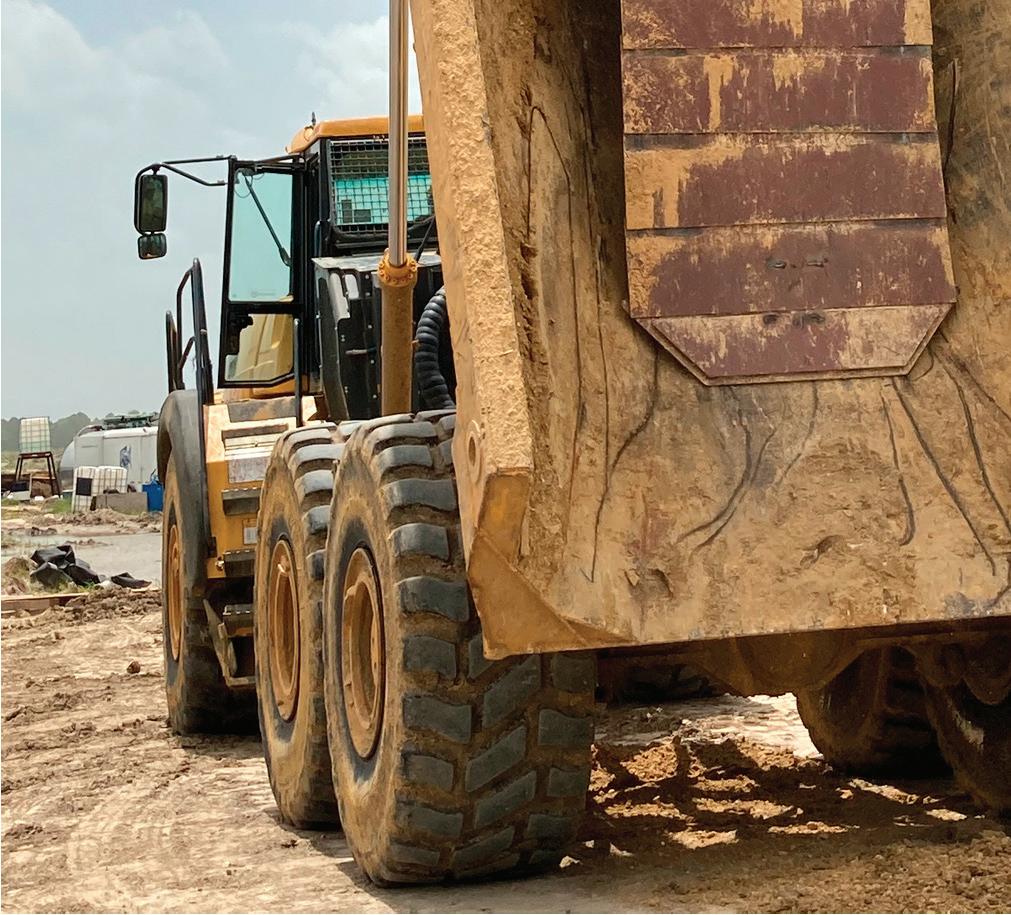

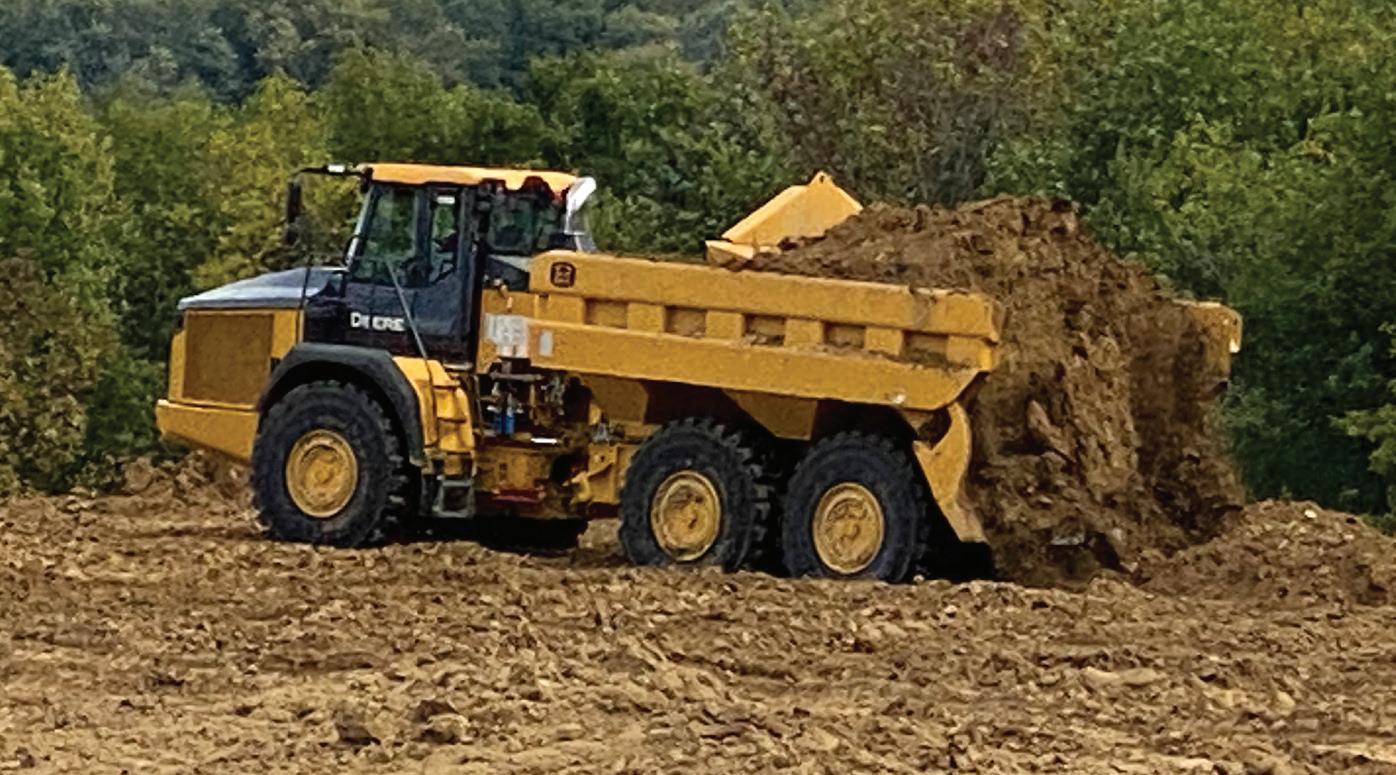
improves by using one rather than trying to accomplish the task without the proper tools. A rear eject would be more like a Swiss army knife. Not only does it address carryback, since it includes a Phillips-head screwdriver, but it also includes other tools, making it a custom solution to improve hauling capacity, increase safety and stability for off-highway operations, and drive overall operational versatility.
Rear eject bodies are engineered to fit a specific chassis and replace the standard end-dump truck body. A rear eject features an ejector blade that pushes material toward the rear of the truck while the tailgate mechanically lowers down, completely ejecting material and virtually eliminating carryback. The truck no longer relies on the force of gravity for dumping, but rather the blade pushes the material out, completely cleaning the body and eliminating the potential for carryback.
Rear ejects also enable trucks to haul their full-rated capacity, and they improve efficiency in other areas, as well. Operations with traditional enddump bodies waste time by stopping to raise the truck bed, dumping material and waiting for the body to completely lower back down before driving away. Conversely, rear eject bodies dump material while the haul truck continues to drive, as the ejector blade retracts while driving away from the dump site. They also allow trucks to dump on unstable and uneven terrain, including slopes, safely and without worry of overhead clearance. Although the cost of a rear eject is higher, the initial cost is quickly offset by the time savings and additional capabilities the design offers.
Read more at: https://eqtoday.co/carryback
Custom haul truck solutions offer an effective solution for carryback while also addressing other operational inefficiencies.Philippi-Hagenbuch Philippi-Hagenbuch
The X-Command telematics program is available for the company’s X-Series telehandlers, Cary-Lift pipe and pole handlers and Speed Swing rail maintenance machines.
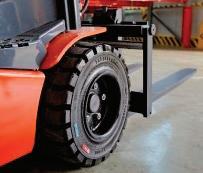
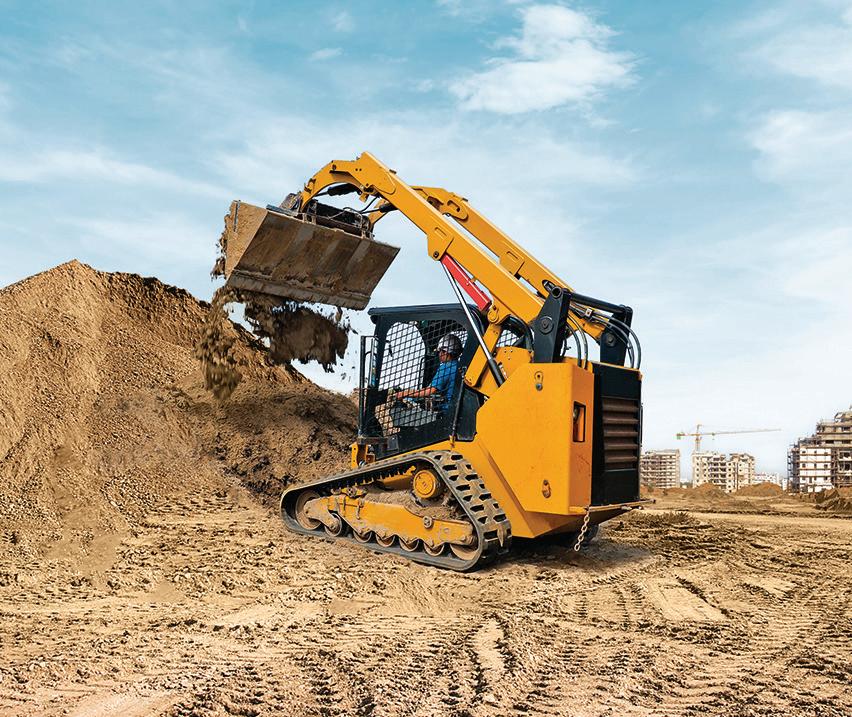


• Allows users to remotely track machine location and observe data points
• Users can access data and generate reports on computer or mobile device

• Allows for remote diagnosis of a telematics-equipped machine

• Comes standard for two years on new telehandlers and is also available as a retrofit for existing X-Series models in the field

The Axenox screed plate design is a significant departure from industry standard. Whereas traditional plates are flat, these plates utilize a 3D angular design. This added dimension delivers lateral compaction confinement to asphalt material. The kneading action helps aggregate to interlock more efficiently than with flat screeds, increasing mat and joint density, along with improving mat smoothness. Densities reaching 91% have been measured behind pavers equipped with the 3D screed plates, so there is less of a chance for material shoving and cracking with the roller. These high densities can reduce the number of passes, lowering compaction cost.

Vanair offers the ELiMENT lithium-iron phosphate (LFP) battery for work vehicles, portable power and construction equipment. It is designed to fit in compact spaces, such as tool cabinets, van shelving units and service body side-packs. The battery system includes quick connect plugs.

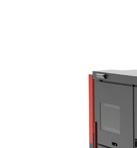
ELiMENT batteries provide full amperage output even at 10% remaining battery life. With a lifespan of five to seven years, it can be fully cycled at least 5,000 times. The zero-maintenance battery takes up to 1.5 hours to charge. Each ELiMENT battery comes with its own battery management system which protects against over current, over or under voltage and over temperature.
Capacity is 100 Ah, voltage is 48 V, Lithium-iron phosphate. Size is 13.38 in. L x 12.5 in. W x 11.8 in. H with handles; weight is 107 lbs. Protection: Over current, short circuit, over charge, over discharge, over temperature and under temperature. Battery Management System: EPEQ. Wiring:Quick connect plugs.
The VMAC G30+GEN air compressor/ generator combines two forms of power into a single system. Operators with VMAC’s rotary screw air compressor/ generator combo on their service truck can quickly switch between air and AC power for their tools and equipment.

VMAC’s newly released G30+GEN delivers compressed air at 25 cfm and AC power at 3600 W, combining two convenient forms of power into one innovative system powered by a Honda GX390 gas engine. The G30+GEN improves job site workflow, allowing operators to quickly switch between air and AC power for their pneumatic tools, electric tools, lights, and other equipment. With its proven rotary screw technology, VMAC’s G30+GEN is 40% smaller and 36% lighter than other gas powered air compressor/ generator combos.
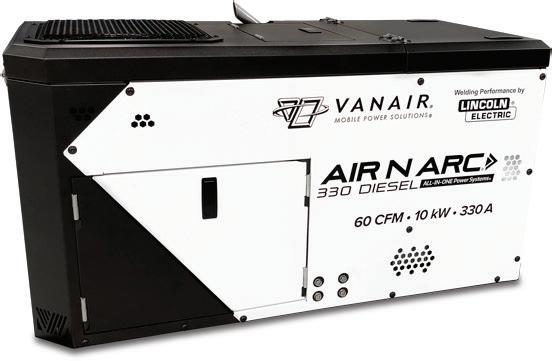
The Vanair Air N Arc 330 Diesel ALLIN-ONE Power System delivers versatile power solutions for roadside maintenance projects, construction sites, welding and more. Made with Lincoln Electric, the Air N Arc 330 features a Vanair rotary screw air compressor, Lincoln Electric welder and a Lincoln Electric AC generator. This machine is equipped with several multi-functioning capabilities including up to 60 cfm of air power, 10,000 W of AC electric power, battery booster and battery charger. A brushless electric fan keeps components cool and helps maintain operating temperatures. Individuals can access a panel with a 4.3-in. LCD display and push buttons for controls and settings. The power system is protected by a powder coated galvannealed steel sheet metal enclosure.
The GridPak is a carbon-neutral alternative to conventional diesel and gas power sources. It provides up to 30 kW of power and features battery capacities of 60 kWh and 120 kWh, with an option for 180 kWh. The GridPak solar array collects 320 kWh of energy (eight-hour day) weekly. Operators can parallel up to four GridPaks to provide as much as 720 kWh of carbon-free power. In inclement weather, GridPak features a low-noise propane generator capable of generating 6.5 kW to supplement solar charging. The energy is stored in a series of Lithium-Iron Phosphate batteries. Battery charging times (calculated as 60 kWh battery) are 2 hours (utility), 9.2 hours (generator at 6.5 kW), and 10.5 hours (solar at 5.7 kW). A single GridPak system can offset 2,510 lbs. of CO2 per week or 65 T CO2 per year. GridPak saves an estimated 5,096 gallons annually.
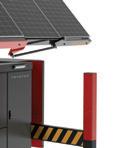
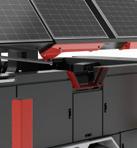
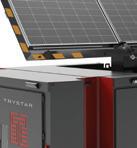


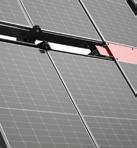





The ClearSky fleet management telematics solution provides flexible options to access critical engine and equipment operational data.
• Data points include location, engine hours, usage, fuel and battery levels and maintenance schedules and are available in real time
• Monitors fault codes and critical alerts can be sent via text and email

• Dashboard, settings and widgets are editable and can be prioritized to customer preferences
• Available as a factory-installed option for new JLG machines or aftermarket installation kit to retrofit
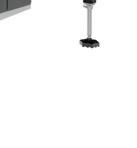
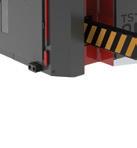
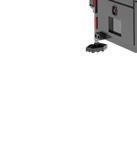
Trelleborg launched its newest tire, the XP900, made for material handling vehicles. The new tire supports cornering, cycle length, average speed and working time during high-intensity applications. As the newest tire in the XP range, the XP900 offers stability in heavy load operations and long workdays. It is designed to perform across a variety of conditions, including warehouses, shop floors and other material handling ground services. Advanced material compounds promote tire life and lower rolling resistance. The block tread on the XP900 is designed with a large footprint for cornering and load positioning.
MULTIFORCE BK T91 can be fitted on compact track loaders deployed in harsh operating conditions. The tread is made of a high-performance compound for resistance against cuts, tears and abrasion – factors that can affect durability and product performance. The compound formulation combines resistance features and durability, making the track suitable for daily usage in rough industrial environments. In addition, MULTIFORCE BK T91 has been reinforced with hightensile steel cords for performance. MULTIFORCE BK T91 features an aggressive, C-shaped tread pattern.
Delo ELC antifreeze/coolant products are single-phase, ethylene glycol based NOAT (Nitrited Organic Additive Technology) products available in various dilutions that are based on patented aliphatic carboxylate corrosion inhibitor technology specifically formulated for heavy duty cooling system applications that require nitrite. Delo ELC antifreeze/coolant products are recommended for use in a wide variety of cooling system applications including on-road, off-road and stationary engine applications. These products are also recommended in mixed fleet applications where heavy duty and light duty trucks are present. Delo ELC antifreeze/coolant products have been fully tested under the CAT EC-1 specification and have been found to meet all the chemical and performance requirements of this specification.
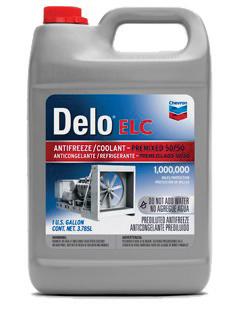
The new 5-in-1 Multifunction Power System, powered by a Honda iGX800 V-Twin EFI gas engine, includes a 40-cfm rotary screw air compressor, an 8-kW generator, a 250-amp welder, a 300-amp battery booster, and a 12-/24V battery charger. At the request of its North American dealer network, VMAC leveraged its 10 years of experience designing multi-power systems to develop

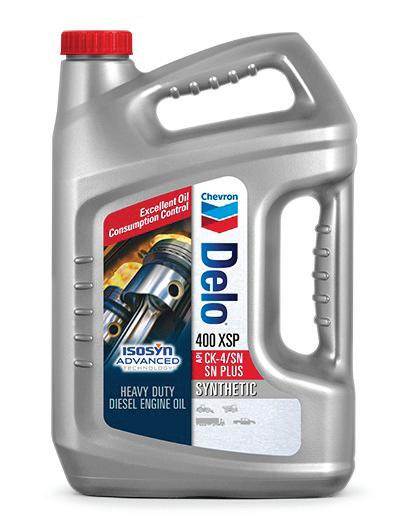
POWR2 is preparing to unveil a new energy storage technology that will allow users of the energy storage solution, the POWRBANK, to run multiple batteries in parallel. Traditionally, batteries could be cascaded to increase storage capacity, but the new technology from POWR2 will allow batteries to be run in parallel, thereby increasing storage and power output. The compact, maneuverable product can string together multiple POWRBANKs to achieve an increase in overall storage capacity. This new product will help rental companies, general contractors and all current POWRBANK users to support fleet flexibility, usability and kVA without investing in a larger POWRBANK model.

a gas powered 5-in-1 Multifunction, which includes all the best features of traditional gas and diesel multi-power systems, but with more power and in a smaller, lighter package. When you need the capabilities of multiple machines in a single powerful system, there is no better solution than the VMAC Multifunction Power System, powered by a Honda gas engine. The 5-in1 multi-power system includes everything needed for heavy-duty mechanic work and is engineered for service truck bodies. The smart design reduces noise levels on the jobsite with noise reduction panels, automated idle controls, and standby mode, all-in-one compact package that fits on the side pack or behind the cab.
Delo 400 XSP SAE 15W-40 (full synthetic) with ISOSYN Advanced Technology is a mixed-fleet engine oil recommended for naturally aspirated and turbocharged four-stroke diesel engines and fourstroke gasoline engines in which the API CK-4, API SN or API SN PLUS service categories and SAE 15W-40 viscosity grade is recommended. Delo 400 XSP SAE 15W40 with ISOSYN Advanced Technology is an API CK-4 heavy-duty engine oil specifically formulated for on-highway and off-highway applications including 2017 greenhouse gas (GHG 17) compliant diesel engines with lower CO2 emissions and improved fuel economy, in addition to EPA 2010 compliant low-emission diesel engines with SCR, DPF and EGR systems.
The Chicago Pneumatic CPS-400E portable air compressor is designed for versatile tool and equipment support on construction sites. This air compressor features compact dimensions and an intuitive electronic controller. These units can operate in a wide range of applications in harsh work environments. Whether being used for running pneumatic breakers, general construction work, sandblasting or for rental, the CPS-400E offers 150 psi and up to 420 cfm during use. The air compressor is equipped with a centrifugal oil separator combined with a filter element. Accessible instruments on the unit include: hour meter, operating pressure gauge, start button, load and unload switch, and diagnostic shutdown indicator lamps.
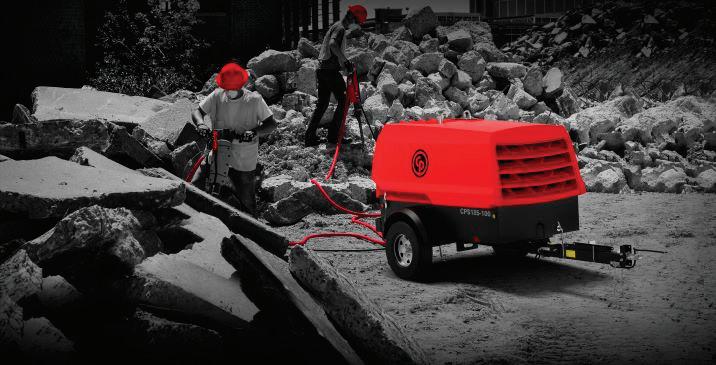
Jenny’s W11HGB-30P two-stage wheeledportable air compressor is equipped with an 11-hp Honda GX-Series engine with electric start. It includes a 30-gallon, ASME-certified air tank with durable powder coat. It produces 21 cfm at 100 psi or 17.6 cfm at 175 psi. Built for tough operating conditions, the compressor includes several features to reduce maintenance and maximize uptime.
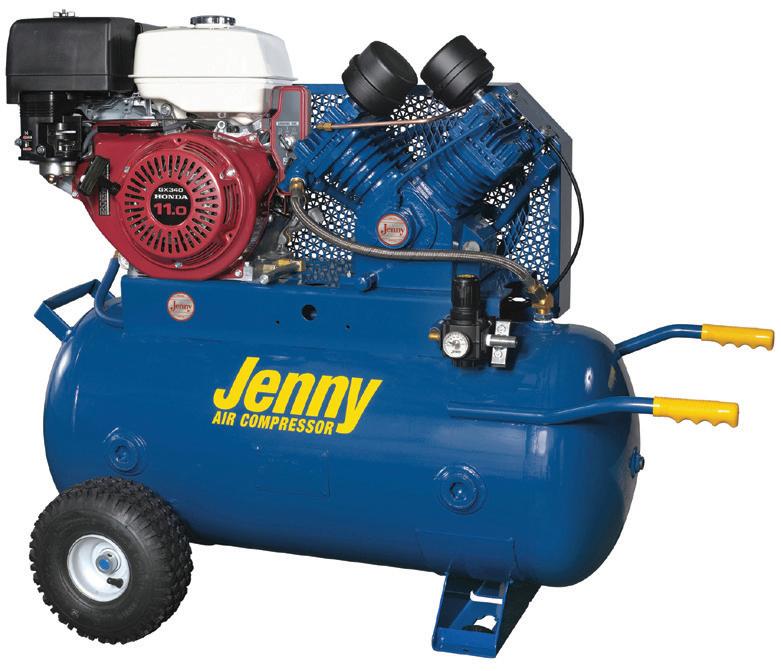
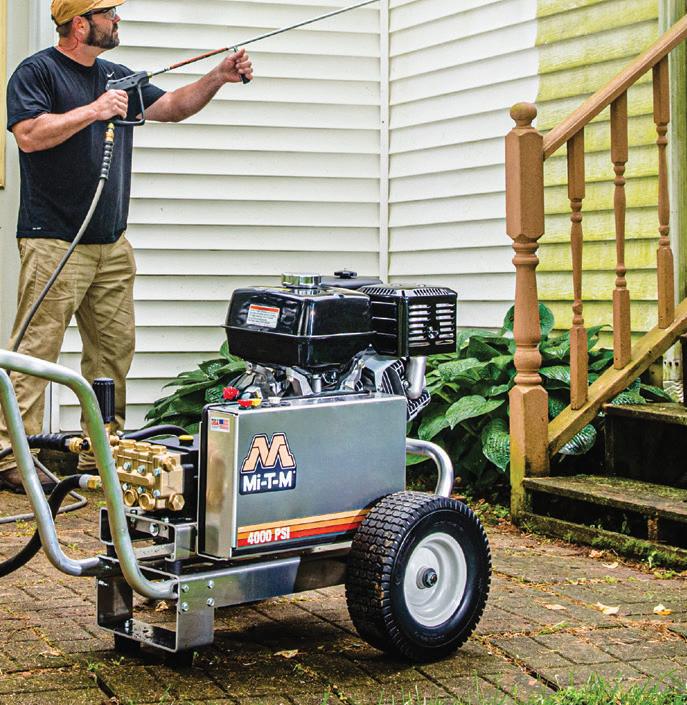
Splash lubrication with Jenny “Ultimate Blue” compressor-pump oil offers contractor-duty protection of pistons, crankshaft, bearings, rings and cylinders.
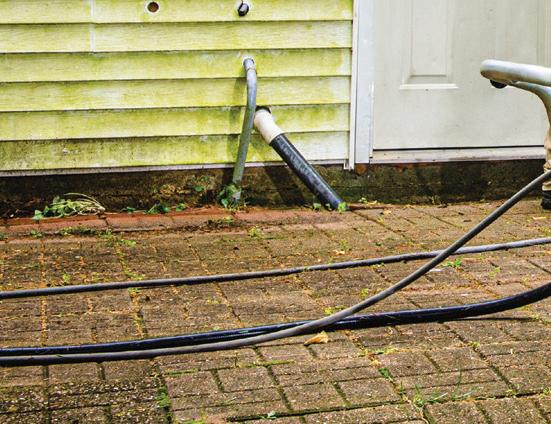
Equipped with a liquidcooled, three-cylinder Kohler diesel engine, the CPS 185-100 is built to power two 90-lb. breakers, or other additional tools, and ranges up to 125 psi. Air pressure, fuel level and running hours are all displayed on screen, as well as additional measurements, like rpm, engine temperatures, oil pressure and voltage for diagnosis and troubleshooting. The Xc1004 intuitive controller can display compressor and engine measurements, warnings, alarms and operational settings, routine service requirements and more.

• Check out the Annual Excavator Spec Guide

• Coverage from CONEXPO-CON/AGG
• New attachments on the market














There are different schools of thought when it comes to enterprise software, and as broad, powerful applications make their way to market in the construction industry, contractor executive teams will see firsthand what they are.

A classical approach is to establish a billing relationship with a customer and then compete for a larger and larger share of their wallet over time by selling them more functionality to address additional business processes.
Buy some software, and then if you like it, buy more — it seems to make sense.
But what if a contractor is running software from a single vendor for estimating, field productivity and safety but their telematics and maintenance solutions are not a good fit?

Or what if a contractor has multiple divisions with different needs no single vendor can address, and portions of a solution from another vendor are therefore a better option for the contractor to meet their needs?
Like most jargon in enterprise IT, the term composable solution or composable enterprise was coined by analyst firm Gartner. On its face, the term communicates the idea of an enterprise solution that is composed of multiple products rather than a unified, pure-play application suite from a single vendor.
The use of modern application programming interfaces (APIs) can facilitate handoff of processes between diverse software products
from different vendors, helping to deliver this composable enterprise. Gartner thinks the future will take us even further towards composability as software vendors become APIfirst, meaning they build the product around the API and then API-only. At this stage, the product does not necessarily support end users with an interface, but rather provides microservices to the applications the end user is engaging with directly.
“By 2024, 20% of Global 2000 CEOs will report an increased appetite
for risk and improved resilience, both attributed to modular business redesign,” the authors of Gartner’s “Becoming Composable: A Gartner Trend Insight” said. “By 2024, the mantra for new SaaS will be ‘composable API-first and API-only,’ relegating traditional SaaS vendors as ‘legacy.’”
It will be a while before we see many API-only construction software offerings, apart from designated construction integration platform as a service (iPaaS) vendors like Agave or information services like Trimble DataXchange (formerly Ryvit) and standard pricing services like those from RSMeans, Spon’s Price Libraries or Trimble’s TRA-SER pricing service. But what we see happening at scale is construction software vendors coming to terms with the importance of APIs, and to the idea of yielding the right of way to others who can best complete a customer solution. Walls are out and wheels are in as construction technology vendors are realizing that maximizing value will work better than trying to maximize revenue — and that means working and playing with other vendors rather than trying to keep them out of the customer.
When you think of a partner marketplace in construction software, you think of Procore, which has more than 400 partners in its marketplace. While the depth and functionality of the integrations with these partners varies, Procore becomes an iPaaS of sorts, leading the industry as a whole towards a partner-centric approach to construction software interoperability. Seeing this, Trimble is also eyeing the 30 partners that came with the Ryvit deal as a move toward partnerships playing a large role in interoperability between different products.
HCSS, the heavy construction software platform, is also making a concerted effort to build out its partnership community, has established a marketplace and is also opening its environment increasingly to partners to help speed integrations to market.
“Where we sit in 2023, we understand we are market leaders in our space,” HCSS Senior Product ManagerPartnerships Rateb Almasri told IRONPROS.com in a recent interview. “But technology is evolving so fast, we can’t do everything. But what we can do is partner with like-minded companies that are best in class and cater to our customers. We are better together at the end of the day.”
HCSS has been rolling out new partnerships at a rapid clip, with batches released in March 2023, including:
A partnership with Onstation for location-based documentation essential to roadbuilders
An integration with PipelineSuite software to streamline sending of bid solicitations, creating bidder lists and sending invitations
An integration with Clue Insights, which aggregates data from multiple equipment management solutions to an enterprise view
The partnership with Clue Insights may seem odd given that Clue addresses many of the same functions as HCSS’ offerings like HCSS Equipment 360 or HCSS Telematics. But Clue Insights operates by the concept of a composable solution very well—it is designed to standardize data from multiple GPSenabled asset management software a contractor may do into a common presentation and transactional layer.
“We announced our partnership with HCSS this week,” Clue Insights CEO Oded Ran said. “The challenge we are solving is that you have a customer that already has HCSS, maybe running Heavy Job or Equipment 360. But they may use a different telematics provider. That means they don’t have everything on one pane of glass.”
There are standards for equipment data, but in a recent interview, Clue Insights CEO Oded Ran said they were only a partial solution.
“Any company thinking that AEMP is a standard, well, it’s a standard that’s not standard,” Ran said. “You may find one brand of dump truck has a problem with a given version of the AEMP standard. So part of our day-to day-job is maintenance of these data pipes we know very well. If we are talking to a company with 20 assets, they don’t get this. But that contractor with 1,000 assets — they feel the pain.”
Clue Insights, Onstation, PipelineSuite — all illustrate Almasri’s and HCSS’s stated partner strategy and he is looking for more partners like them.
“I always want to think of the customer,” Almasri said. “We are looking for companies that complement us. And that has to do with more than functionality. We are a customer first company — 90%of our implementations are complete in 90 days or less. Our customer calls support and it picks up by the third ring. We offer money back guarantees. So yes, we are looking for companies that complement us on that front and from a solution standpoint they help us elevate the customer experience.”
Customer demand will help Almasri determine which partnerships to move to the top of the pile.
“I have an opportunity matrix to prioritize holes we want to fill,” Almasri said. “Drones are becoming more popular in our industries, and we may do something there. Our customers want to optimize and increase the efficiency around bidding for new jobs. But we will also see continued growth around our current enterprise resource planning (ERP) integrations. Our customers can feel confident that when they purchase Heavy Job or Equipment 360, we can integrate with everybody. We have no preferred vendor, but if you bring your ERP, we will make it work.”
Getting to this partner-focused approach did not happen overnight — it required HCSS to evolve its products to integrate easily and support partners with technology.
“What we focused on over the last year is building out the infrastructure for a marketplace,” Almasri said. “We want to be able to drastically improve the onboarding process for partners and have launched an app portal where they can look at our APIs, read up on them and understand what data they can pull out of HCSS. They can get selfservice in that fashion and start testing out our APIs, provision their own sandbox environment and edit their marketing collateral and determine how it is displayed in the HCSS marketplace.”
The storefront for partners should streamline things for other software vendors, but the customer experience and the speed with which new integrations can come to market are also attributable to years of building out a robust collection of RESTful APIs.
“If you were to ask me if we were ready for this in 2019 I would not be confident in our message,” Almasri said. “But with the infrastructure improvements we have made that over the last three to four years, it is a lot easier for us to onboard partners and focus on integration. For some larger companies that have their own development team that want to use data out of HCSS in their homegrown system,
they can do that fairly easily now. Before, it was an incredibly long.”
GPS-enabled asset management leader Trackunit is also preparing a partner marketplace, and giving both partners and customers more robust access to the platform for development and integration.
“Right now, we are in the midst of launching the Trackunit Software SDK, as well as the Trackunit Marketplace later this year,” Trackunit Vice President of Product David Swan said at CONEXPO-CON/AGG.
Because Trackunit goes all the way up market, some of their customers have deep enough IT benches to take on substantive work creating their own Trackunit environment.
“We are the primary connectivity provider to most of the largest construction fleets in the world,” Swan said. “If you go down that list of the largest contractors, we are basically there all the time, and a lot of that has to do with our platform approach. These are huge businesses, and they are so deep into the problem space in a way we as an IT or connectivity provider can never be. But we give them a space build on our platform and guide the solution to where it needs to be to solve their specific business problems.”
Trimble had earlier launched Trimble Construction Cloud at its Dimensions conference in November of 2022. Apart from enabling use cases like live data and model sharing, a common data environment to connect Trimble and non-Trimble solutions and the Trimble Development Portal.

Autodesk meanwhile had already built its Autodesk Cloud and Autodesk Docs solutions on top of Forge, which also serves as a development sandbox where independent software vendors (ISVs) and system integrators that are part of the Autodesk ecosystem can develop complementary applications.
Read more at: https://eqtoday.co/telematics
What we see happening at scale is construction software vendors coming to terms with the importance of APIs, and to the idea of yielding the right of way to others who can best complete a customer solution.@metamorworks - adobe.stock.com The use of modern APIs can facilitate the handoff of processes between diverse software products from different
vendors, helping to deliver a composable enterprise.@kokliang1981 - adobe.stock.com
The big challenge for construction professionals looking to streamline operations isn’t whether technologies can help – they can, no question. Rather, it’s where to start.
For one thing, construction-business leaders are sorting through a mass of available point solutions that, while purporting to solve problems in the short term, may or may not help address the foremost underlying issue that has dogged this industry since the Tower of Jericho went up: that is, construction projects involve many hands, and, too often, one hand doesn’t know what the other is doing. It’s long been a generally bitter recipe for inefficiencies, rework, delays and ballooning costs.
For another, we now face the intimidating idea of connected construction, which, as elucidated by the likes of Deloitte, seems to evoke a wholesale, holistic digitalization involving command and control, quality control, asset tracking, performance management, safety intelligence, digital twin and BIM+, workforce efficiency, energy management, and more. It’s a lot to chew on.
Deloitte itself doesn’t assume that construction firms will digitalize in one fell swoop. Among the first steps their experts suggest include asking yourself, as a company, “What use cases or business opportunities are you most interested in solving or enabling?”

Those use cases and business opportunities will differ depending on one’s line of business, market, the competitive landscape and so on. But I’m seeing three key areas in which construction firms tend to be focusing as they take steps toward the connected-construction vision that will – or at least should – materialize across the industry in the near future.
Construction projects work best when teams as they’re most broadly defined – owner/operators, architects, engineers, and construction teams – work together. Rare is the project in which these teams are truly siloed. But it’s also far too rare that their collaboration involves data sharing based on real-time information. Rather, so much of what counts as construction-business collaboration happens through emailed spreadsheets and status summaries that can be outdated before the files get opened.
Effective collaboration means using a cloud-based platform that enables real-time access to constantly updated information from all corners of a project based on a particular player’s needs and security permissions. It also means establishing formal collaboration workflows among the players to delineate what the key data points for different roles are (the building owner will be interested in different views of a given pool of information than
an electrical subcontractor) and how that data best be shared. Cloud-based project-management systems and collaboration tools are the vehicles to get this done.


Cloud-based data repositories may be far better than dispersed databases/ spreadsheets, but the benefits of centrally stored, easily accessible data depend on the quality of that data. When it comes to construction projects, data quality – and, by extension, management’s ability to rely and make decisions based on that data – depends on inputs from teams on the ground.
Those inputs will come from mobile devices into which crews provide updates either directly or indirectly based on task-related workflows embedded in those devices. Internetof-Things sensors are also increasingly in play, automatically feeding data to cloud-based project management systems and helping enable predictive maintenance.
Either way, mobile data capture can vastly improve the volume and accuracy of the overall project’s data, and, by extension, provide the visibility for players up and down the chain to make better decisions during the course of a mass deployment or one-off build.
Predictive analytics solutions use statistical models – and, increasingly,

machine learning and artificial intelligence – to predict the future based on data from the past and present. In the construction context, predictive analytics is valuable in identifying risks and assisting with forecasting. But a growing universe of construction-business use cases exist, as McKinsey & Co. points out: from sharpening proposal bids to recognizing when a project may run into trouble. Centralized, cloud-based data sources and mobile data capture are essential precursors to predictive analytics in construction because they feed the large, timely pools of data upon which predictive analytics depend.
The construction business has an enormous amount to gain from digitalization, so much so that it can be hard to know what to begin. Starting with cloud-based systems that enable real-time collaboration, mobile data capture, and predictive analytics establishes a foundation for enhancement and expansion into the broader vision of connection construction. Along the way, you’ll get a lot more done and save yourself some money – not to mention quite a few headaches.
Brant Carter is director of industry products at Sitetracker.
Read more at: https://eqtoday.co/techintegrate
Construction businesses have an enormous amount to gain from digitalization, so much so that it can be hard to know where to begin.
The construction industry has an enormous amount to gain from digitalization, so much so that it can be hard to know where to begin.
Despite the year's unavoidable challenges — from skyrocketing pricing to unrelenting supply chain and labor shortages — construction companies have an opportunity to protect the foundation of their business by focusing on what they can control: their supplier relationships. Strong supplier relationships are the lifeline of a successful construction business. Without them, work can come to a standstill and new opportunities can be lost to the competition, potentially stifling growth and jeopardizing survival. About 80% of construction firms surveyed for the Association of General Contractors 2023 Construction Outlook said they have trouble hiring the workers they need to complete projects and take on new ones, a fact that shines light on the importance of investing in existing relationships.
When it comes to relationships between general contractors and subcontractors, nothing is more important than knowing payments will be processed in a timely fashion for work that is properly billed. Delayed payments, perhaps more than any other factor, put relationships at risk. According to Rabbet’s Construction Payments Report, 49% of subcontractors waited 30 days or more for their payments last year, making it tough for them to manage their own businesses and more likely for them to turn down future jobs in favor of work from firms that promptly pay.
Even with the best of intentions, complex billing and payment structures, frequent change orders, multiple stakeholders and a paid-when-paid mentality make it challenging for construction firms to quickly pay subcontractors and suppliers for work completed. Consider the volume of invoices generated in construction projects and the ensuing paper chase they
create, along with the lengthy process of cutting and mailing checks, and it’s easy to see how supplier relationships are easily soured over delayed payments. Fortunately, technology can directly impact and improve relationships by streamlining invoice and payments processing. Here’s a closer look at why investing in technologies, including automated accounts payable (AP) solutions, should be a priority for construction companies and how advanced technology can help firms earn loyalty by offering subcontractors profitable work with low risk.
While the construction industry has been notoriously slow to adopt digital transformation, 2023 analysis from Deloitte shows that most construction firms realize the time has never been more ripe to embrace technology. Still adjusting to a new normal following pandemic disruption, they need innovation to aid recovery and build stronger businesses. Research from the Construction Industry Institute shows that proven technologies can increase their productivity by as much as 30% to 45%. By saving time and money and working smarter, firms can build resiliency to better ride out the current economic turmoil and prepare for whatever lies ahead.
Back-office technology, including automated invoice management solutions, does its part by increasing efficiencies, providing visibility and protecting valuable supplier relationships. Integrated with companies’ existing accounting software, the AP solutions automatically collect and code invoices, leveraging optical character recognition (OCR) and advanced technology to match POs and receipts, and then circulate invoices for quick
approvals. Automating the work is far faster and more accurate than manually handling it and makes it easier for AP staff to decipher loads of invoices and POs coming in from multiple jobsites.
Automated bill payment software can then give suppliers a choice of how they’d like to be paid, and more secure electronic payment methods, including Automated Clearing House or Virtual Credit Card payments, as alternatives to slow-moving paper checks. The options give suppliers control and potentially save them a trip to the office to pick up a check and eliminate the need to wait for money to arrive in the mail. Cloud-based solutions help companies stay on top of the process by providing 24/7 visibility into payment status, making it quick and easy to identify any hold-ups and rectify them before they cause problems.
Investing in AP technology provides a host of intangible benefits beyond speedy payment delivery. It fosters goodwill from suppliers by saving them time and making it easier and more convenient for them to get paid — enabling them to submit electronic invoices from jobsites rather than dealing with keeping track of paper receipts.
It also recognizes and alleviates the
Loyal, reliable suppliers can boost their reputation as a company that employs experienced, qualified workers and priortizes a safe work environment.
©JU.STOCKER – stock.adobe.com
significant risk subcontractors take on as smaller businesses with tighter margins. They typically foot the bill for materials and supplies long before they are reimbursed for them or paid for their work, making it tough to manage their cash flow. Leveraging automation gives them peace of mind that payment is imminent enabling them to sustain their business and invest in new opportunities. It also helps to keep projects on track, assuring them of steady, dependable work.
Strong relationships offer intangible benefits for construction companies, too. In addition to enabling them to complete and take on new work, loyal, reliable suppliers can boost their reputation as a company that employs experienced, qualified workers and prioritizes a safe work environment. This makes it easier to maintain compliance standards, attract new hires and win business.

Despite a recessionary environment and critical shortages of necessary supplies and labor, construction companies can boost their bottom line by nurturing relationships with suppliers and subcontractors that make their business possible. What better way to strengthen those relationships than making sure people are accurately and promptly paid for their work? Technology makes it possible, while delivering just as many benefits to the payer
JimCampbell is vice president of AvidXchange.
Read more at:
https://eqtoday.co/supplierloyalty
lifeline
Without them, work can come to a standstill and new opportunities can be lost to the competition, potentially stifling growth and jeopardizing survival.
Caterpillar's Smart Creep feature for the full range of Cat D3 Skid Steer Loaders (SSL) and Compact Track Loaders (CTL) for operating Cat cold planer and wheel saw attachments senses the load on the attachment and automatically adjusts the drive command to keep the cold planer or wheel saw operating at the most productive speed.
A combination of attachment sensors and proprietary software balances attachment load and machine speed. By continually sensing the load on the attachment, smart creep increases machine speed when encountering less resistance and automatically slows the machine when encountering higher loads. Engine load remains constant, while the operator can monitor hydraulic pressure on the in-cab display panel.
The GTL-1200 combines the power of a robotic total station with a laser scanner (LIDAR), enabling users to perform digital layout and capture high-resolution 3D scans, all with a single setup.

• Provides near-real-time, construction verification and documentation
• Features improved scanning resolution and adds Wi-Fi capability to enable wireless data transfer to field-controller software
• Workflow includes seamless integration with ClearEdge3D software for as-built and advanced construction QA workflows
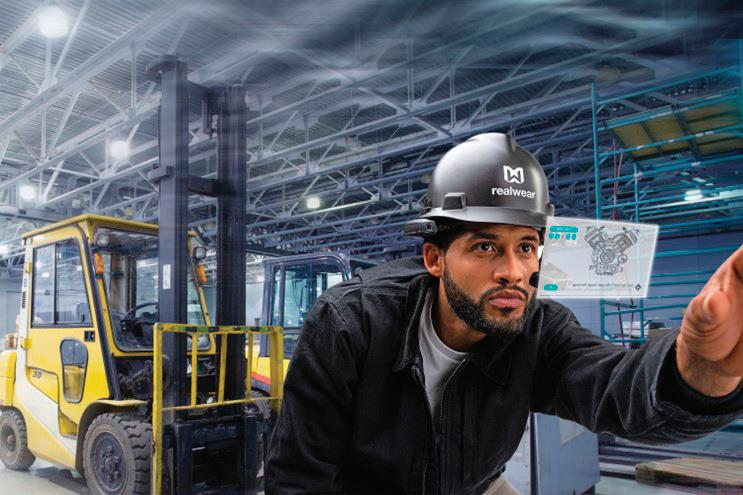
• Collage Site offers field-centric workflows that eliminate extra data management steps traditionally performed in the office

RealWear, a company offering assisted reality wearable solutions, has launched three new products to support data collection and monitoring in jobsites. These products include the following: RealWear App Marketplace, RealWear Connect and a Developer Toolkit. When a support call is initiated by the frontline team wearing the RealWear device, including RealWear Navigator 520 or HMT-1Z1, the app triggers notifications within text, email or in-app notifications in Teams or Zoom, connecting a frontline professional to an expert. Once connected, the subject matter expert can see exactly what the frontline professional sees and guide the user through visual inspection via two-way communication, even in high noise environments.

Caterpillar's Cat Command for Loading for D3-series skid-steer and compact track loader line provides joystick-controlled remote operation of the skid-steer and compact track loader models to increase safety and productivity when operating in challenging and potentially hazardous environments. It's available in two configurations: line-of-sight at the jobsite and non-line-of-sight operating via a remote station located off-site. The line-of-sight system includes indicator lights, microphone, wireless receiver and antennas installed on the cabin roof with the Command activation switch mounted behind a lockable door with ground-level access.
The non-line-of-sight system adds front, rear and side cameras for 360-degree viewing. Since Command controls are integrated with machine electronics, users experience the same control response as they would operating inside the cab. Two different line-ofsight consoles will be available to meet customer need, each providing different levels of functionality and control with complex hydromechanical attachments. Operating range for both line-of-sight Command consoles extend up to 300 feet allowing for convenient remote operation. The non-line-of-sight Command for Loading solution includes a modular, customized Command station that positions users in a familiar and comfortable seated position that simulates traditional machine control. One user can connect to multiple machines from a single station, controlling one machine at a time.

RugGear expanded its product portfolio with a 5G smartphone. The product is equipped with the eight-core Qualcomm QCM6490 processor from Qualcomm Technologies. This Android 12 device offers individuals mission-critical push-to-talk and -video communication. A 6-in. FHD display, 48-MP main camera, 103dB amplified speaker, 4,400-mAh removable battery, Wi-Fi 6, Bluetooth 5.2, NFC and 16-pin interface for secure peripheral connection complete the feature set. The RG540 supports the new CBRS frequency spectrum for private LTE networks. Especially in the field of public safety and crisis management, process or manufacturing industry and in the logistics sector, the smartphone with 5G technology enables high transmission speeds for demanding applications.
Volvo Trucks North America rolled out a new connected technology tool for its dealers to help deliver fuel and vehicle insights to fleet customers. The Connected Vehicle Analytics (CVA) tool collects real-world data from fleet operations — including current truck configurations, daily routes, average speed and fuel consumption — to enable dealers to recommend configurations for a customer’s new Class 8 truck purchase, tailored to their specific operations. Using Volvo Trucks’ CVA tool, dealers can have quantitative insights into how a customer’s fleet is operating and what updates and changes can be made in the specifications when investing in their new trucks.
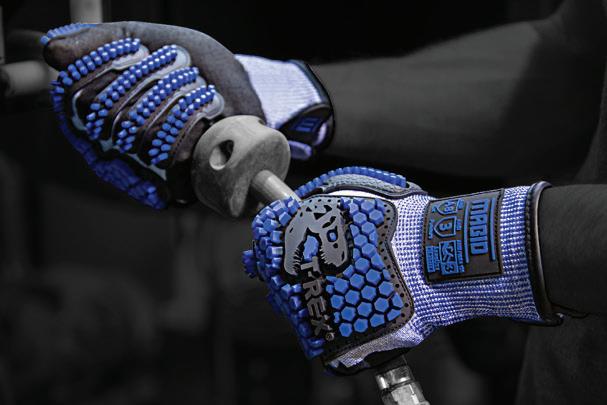
Equipped with Level 3 impact protection, the glove features a new TPR design and delivers a combination of protection, comfort and grip. Features include:
• Magid M-Power Defense System: TPR formulation and design that delivers a high level of impact protection while maintaining airflow

Danfoss Power Solutions, a supplier of mobile and industrial hydraulics as well as electric powertrain systems, launched its Dextreme systems pathway for excavators. Dextreme systems is designed to help increase excavator energy efficiency by 15% to 50%, regardless of the power source. The Dextreme pathway consists of three incremental system solutions: Swap, Flex and Max. The simplest configuration of the system, Dextreme Swap, is now available. Dextreme Swap replaces the excavator's main hydraulic pump with a Digital Displacement pump, custom software and digital controller, delivering a 15% reduction in fuel use and carbon dioxide emissions compared to an excavator fitted with a conventional swash plate pump.

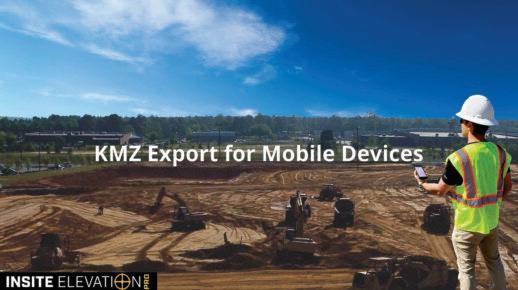
• ANSI A8 Cut-Level AeroDex Shell: One of Magid’s innovative shells that delivers cut resistance
• VersaTek Adaptive Coating: Magid’s coating technology that promotes grip by adapting to various environments such as wet, dry and oily environments
InSite Elevation Pro users can export KMZ files to third-party mapping applications like Google Earth, Map Plus and other geo-browsers with jobsite data. Original PDF or CAD file data can be overlaid with cut and fill contours, subgrades, stripping regions or area and length take-off before export. This information is accessible on a desktop app in the office to verify proper location and planning, as well as on a GPS-enabled smartphone or tablet. With InSite Elevation Pro, users can send the aligned KMZ file to a mobile device. As users walk on the jobsite, the location is pinpointed on any of the original site plans with cut and fill contours displayed. This enables individuals to walk right to the location of a structure, building corner, driveway, etc. and share the information in real-time. The KMZ file can be shared with several individuals working on a project.

Trained experts inspect the equipment from its chassis down to its sprockets, create a detailed Verified Conditions report, and upload photos and video to every listing.

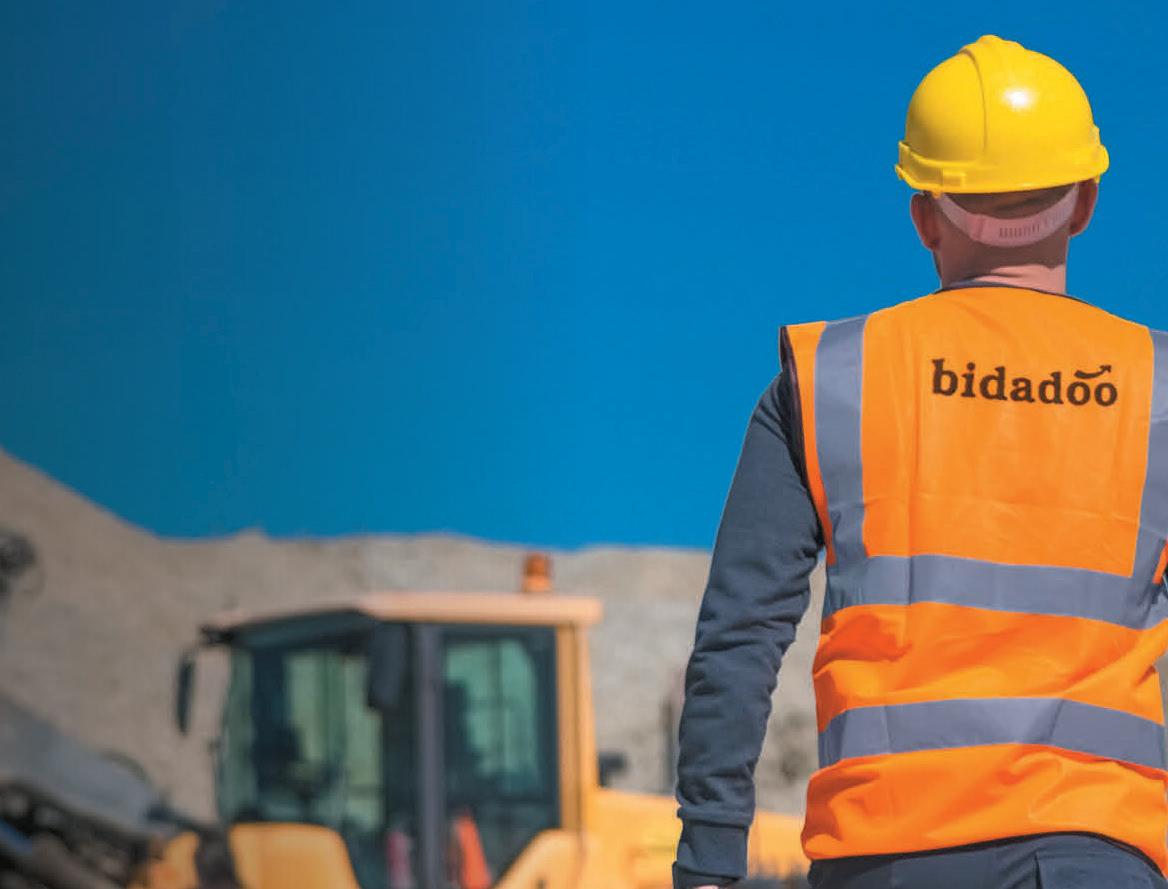


Our five-star rating system confirms the quality of the equipment you’re purchasing. A quality and condition rating is given to product specifics like chassis, undercarriage, engine, hydraulic system, and more.
Your purchase is protected through eBay’s Business Equipment Purchase Protection.

All inspections are completed by bidadoo experts, a trusted eBay partner with over 20 years of industry experience.
Get end-to-end support at every step through bidadoo experts for questions about the product, shipping, financing, or liens and warranty.
Chassis
Sheet Metal/Body
Paint/Decals
Frame
C-Frame/Push Arms
Blade Linkage Pins/Bushings
Belly Pans
Undercarriage
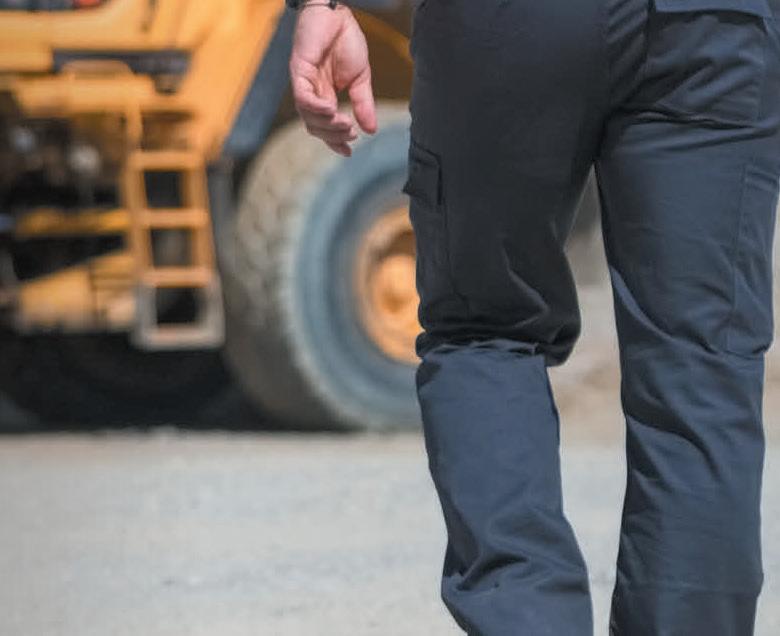
Track/Show&Link Condition









Track Tensioners
Front Idlers
Sprockets
Rating Key



Based on age and use
Poor Very Good
| By Charles Rathmann, Technology EditorHow advancing technologies, emerging products and economic megatrends are thrusting machine control to the forefront of the construction industry.
Contractors are using connected equipment technologies, and will use more in the future. That is one takeaway from the 2023 State of the Industry Construction Technology Report, where 13% of respondents were already using interconnected equipment and another 62% said the technology would be important for them in the next 10 years.
What types of connected equipment technologies are these contractors running or planning to invest in? More respondents were using machine control technology from their equipment OEM than were relying on aftermarket options from companies like Trimble, Leica, Topcon or others. Researchers are predicting the construction machine control sector will grow from $4.4 billion in 2022 to $5 billion in 2023, reaching $7.6 billion by 2027.
This growth will be enabled not just by advancing technologies and new products finding their way to market, but because machine control addresses a serious pain point in construction: staffing. According to Associated Builders and Contractors, as of February 2023, contractors will need to hire about 546,000 additional workers over and above their normal hiring to meet demand this year.
McKinsey, in some research by Garo Hovnanian, Ryan Luby and Shannon Peloq, points out that the Bipartisan Infrastructure Law creates 3.2 million new jobs in nonresidential construction and its supply chain. This presents a real challenge because in a tight labor market, as the trio’s report reveals, other field labor-intensive sectors have seen declines in productivity. This would be poorly-timed when the sector is about to realize a spike in demand for its outputs.
Technologies that lower the amount of person hours or reduce the skill level required to put projects in place has already made a real difference. This includes not only technologies that automate machine operation but equipment guidance products like Cat Assist.
In one early study at the University of Southern Mississippi, automated machine guidance provided:
˜ 66% time savings for grade checking
˜ 85% reduction in or elimination of staking
˜ 30%-50% time savings through uninterrupted earthmoving

˜ 66% reduction in survey staffing and 100% increase in speed
The researchers defined automated equipment guidance as using global positioning systems (GPS), global navigation satellite systems (GNSS), total stations, and rotating laser levels and displaying this data in context to the operator, guiding the work to conform to a 3D model. In this approach, the operator still controls the equipment to perform grading or paving operations using multiple perspectives and comparison graphics to shape the constructed surface to match the planned design surface.
Equipment Guidance As a Gateway Technology Equipment guidance obviously provides real labor and timeline-sparing advantages, and more products are coming to market. Some, like Trimble’s Siteworks Machine Guidance, can be extended later to provide varying degrees of autonomy.
“This is machine guidance, and we are not automating the operation of the machine but are offering visual indicators for the operator,” Trimble Civil Construction Product Manager Jack Young said. “But not only can the contractor continue to use this system after upgrading into our automation
solution, but we are offering a stepping stone into the more advanced technology. It is extremely buildable and very good. So it is not a dead end.”
This lowers the investment and puts technology that measurably improves productivity into reach of more contractors—including, according to Young, those with even a single machine. Trimble and other vendors are also offering an as-a-service model, which may appeal to riskaverse buyers or those who want to get equipment guidance into the field without taking the full plunge.
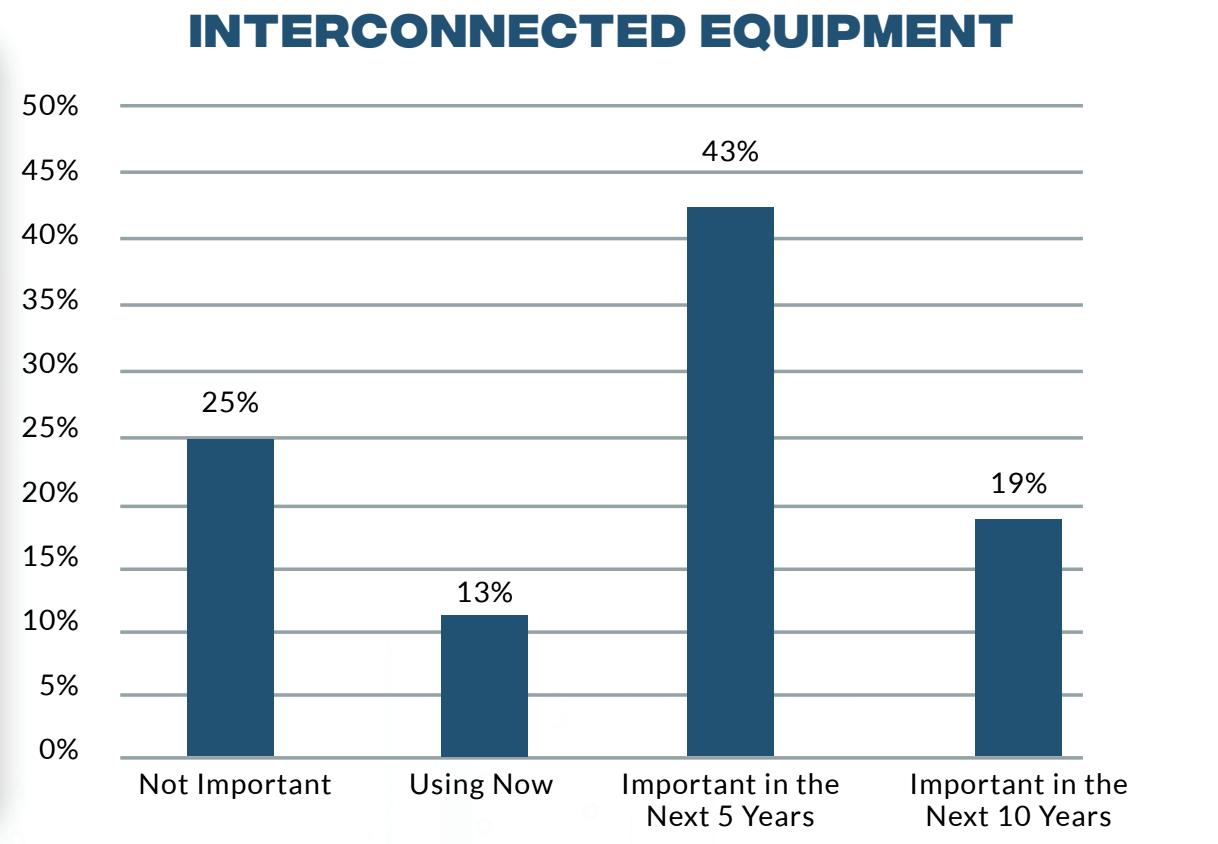

“I believe equipment guidance will become a standard feature in five to 10 years,” Hayfield said. “If you want to get more efficiency and better operational performance out of your equipment and operators, you’ll want
to put intelligence in the cab so they are aware of what they’re doing, what the machine’s doing and what to do if there is an issue.”
These technologies can also often automate productivity reporting to document work has been done to specification, eliminating manual work in the back office.
Emerging equipment guidance products were heavy at CONEXPOCON/AGG 2023, where Trimble launched Siteworks Machine Guidance. Interact Analysis Senior Research Director Alastair Hayfield came away from the show impressed with what the direction he sees vendors taking.
“Grammer Seats has a nice feature where they have built haptics into the operator chair,” Hayfield said. “The operator can get an actual physical
cue that there is something behind the vehicle. One of the other nice things was the Bobcat display with augmented reality. I have seen that displayed that at a show before, but not in a vehicle. They had a transparent LG display in the cab of the excavator that shows machine information and could overlay data about the construction site, very useful information like where the electricity mains are, where the water is, where the gas is, plus safety and productivity information.”
While equipment guidance offers measurable benefits by itself, technologies that automate the end effector of a piece of construction equipment or even automate steering are now mature and proven products for earthwork and paving applications.
“If you can automate it, you can still have someone in the cab driving the equipment, but they don’t need to have as much skill,” Hayfield said. “You have automated systems to do that heavy lifting.”
Apart from OEM equipment with automation features and aftermarket machine control giants like Trimble, Topcon and Leica, emerging technologies here too are pushing the envelope further.
Built Robotics, for instance, is finding a niche for its aftermarket solutions to fully automate 15-ton to 60-ton excavators in utility trenching for solar farms. At CONEXPO, the company launched the RPD35 robotic pile driver. The robotic system attaches to a midsized excavator — the version at the show was built on a Caterpillar 335.
“The piling process is very difficult, it is labor intensive, unsafe, and it could be a good component for automation,” Built Robotics Director of Communications Erol Ahmet told IRONPROS in a briefing the week before CONEXPO. “What happens
13% of study respondents were already using connected equipment and another 62% expect to see value in the next five to 10 years.
without robotics is that a survey team comes out to mark the locations, and then a pile distribution team manually places a single pile at each spot. Driving the piles and getting them into the ground is its own step. And then there is an inspection process to ensure the pile is plumb and at the correct depth. We can take all those four steps and put them on one machine. You just upload the site plan — the poles are housed on the machine itself.”
The machine can carry 200 piles, driving them autonomously with a custom-designed hammer that impacts the pile 500 times per minute at 4,000 pounds of force per foot.
Built Robotics also plans a product to position and hold solar panels to be attached to pilings, putting it on a collision course with Sarcos Technologies. Sarcos has its own machine in this category and other robotics products applicable to construction that operate on the principle of supervised autonomy, completing repetitive tasks that can be programmed by the operator. Construction use cases have included grinding, spraying, hydroblasting, torque tooling and surface prep.
Another sea change in many construction equipment categories is electrification, and this, too, could help speed time to market for new construction equipment machine control technologies.
Electrification is driven by multiyear product development initiatives, driven in large part by environmental, sustainability and governance (ESG) management philosophies and investing.
Construction equipment electrification has reached a tipping point, Delta-Q Technologies Senior Product Manager Mourad Chergui wrote in a recent article for OEM Off Highway Chergui cites several reasons this is the case including:
Stricter emission regulations for non-road diesel engines used in construction

Low-noise requirements, especially in residential areas
High cost of diesel fuel
Major OEMs and component vendors like Cummins and Briggs & Stratton are investing heavily in the technologies that can reduce the 23% of global carbon emissions researchers have attributed to the construction industry.

“The important point to make to you is that we all know climate change is real and happening and impacting our planet,” Cummins Chairman and former CEO Tom Linebarger said on an analyst call following the company’s acquisition of electric powertrains, braking, mobility and drivetrain component manufacturer Meritor. “There is not a more important thing for any of us, regardless of our role, in the government, to do than address climate change. And that means our industry has to change. We are a big user of fossil fuels and a big generator of carbon in our industry. The commercial and industrial market has to decarbonize. The good news for Cummins is that decarbonization is a growth opportunity for us … we will win in this market because we have what it takes to help our customers decarbonize.”
But electrification will also bring changes to particularly light
construction equipment that will enable more advanced automation. Specifically, hydraulics used to move booms, buckets, blades and other components may give way to more efficient electromechanical actuators, which are smaller, lighter and eliminate the need for pumps, accumulators, oil tanks and pipe work.
Electrification favors the greater efficiency that electronic actuators bring. In turn, electronic actuators eliminate barriers to precise operation inherent in hydraulics including slack, backlash and flex.

“Hydraulics are great for lots of things, but they are very energy
dense,” Hayfield said. “It performs well under a number of conditions, but it is inefficient. So, with electrification we will likely see a lot of systems to improve hydraulic performance or even replacement with electrohydraulics or ball screws. That is a potential route to fuel savings, but it also helps with adoption of batteries because as you make the overall machine more efficient, you need less battery. It is also a driver for automation. If your different hydraulic cylinders are electronically activated, it is easier to control them remotely.”
Electromechanical actuators could come for



light equipment first, in large part because their capacities may make them impractical for heavier excavators and other equipment.

“You’ll probably see this used on smaller equipment, or functions on an excavator or wheel loader where there is not a lot of force,” Hayfield said. “When it comes to automation or autonomy it could be they are used for an assist function, as opposed to performing the main work. But in time, we could start to see these used in larger equipment.”
more precise in terms of movement,” Hayfield said. “You have the ability to control movement with a greater degree of precision, bring more accuracy to a work site and maybe allow an operator to be less skilled. If you are working in a tight space, in a foundation or basement, you can move the vehicle with more precision and not running the risk of damaging the building you are working around. If you are trying to dig a trench you can maybe do that quicker.”
While some vendors push the envelope on machine control by loosing fully autonomous machines on repetitive use cases and others automate steering and production for a human operator, the future could bring equipment that can operate itself entirely in more complex and dynamic job sites.

“People talk about SAE-levels of autonomy, and the need for something similar in the construction space,” Hayfield said. “But the complexity there is that in automotive, you don’t want the car to interact with anything. In construction, the machine needs to be able to drive into a pile of dirt and interact with it, sometimes dumping it into another vehicle.”
Read more at: https://eqtoday.co/connect
But according to Hayfield, electromechanical actuation can also make automated equipment more accurate.

automated equipment
more accurate.
“One of the advantages they
have is they are much

At CONEXPO, Built Robotics launched the RPD35 robotic pile driver. The robotic system attaches to a mid-sized excavator — the version at the show was built on a Caterpillar 335.

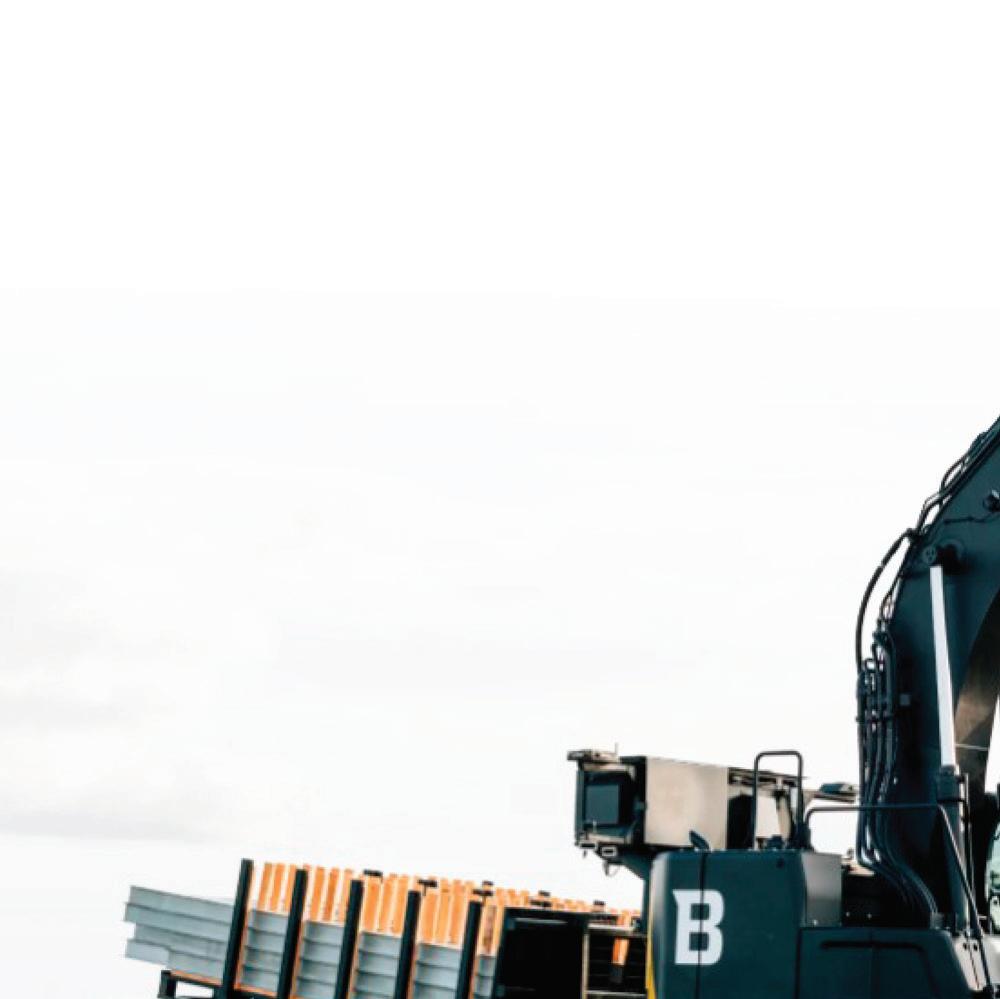
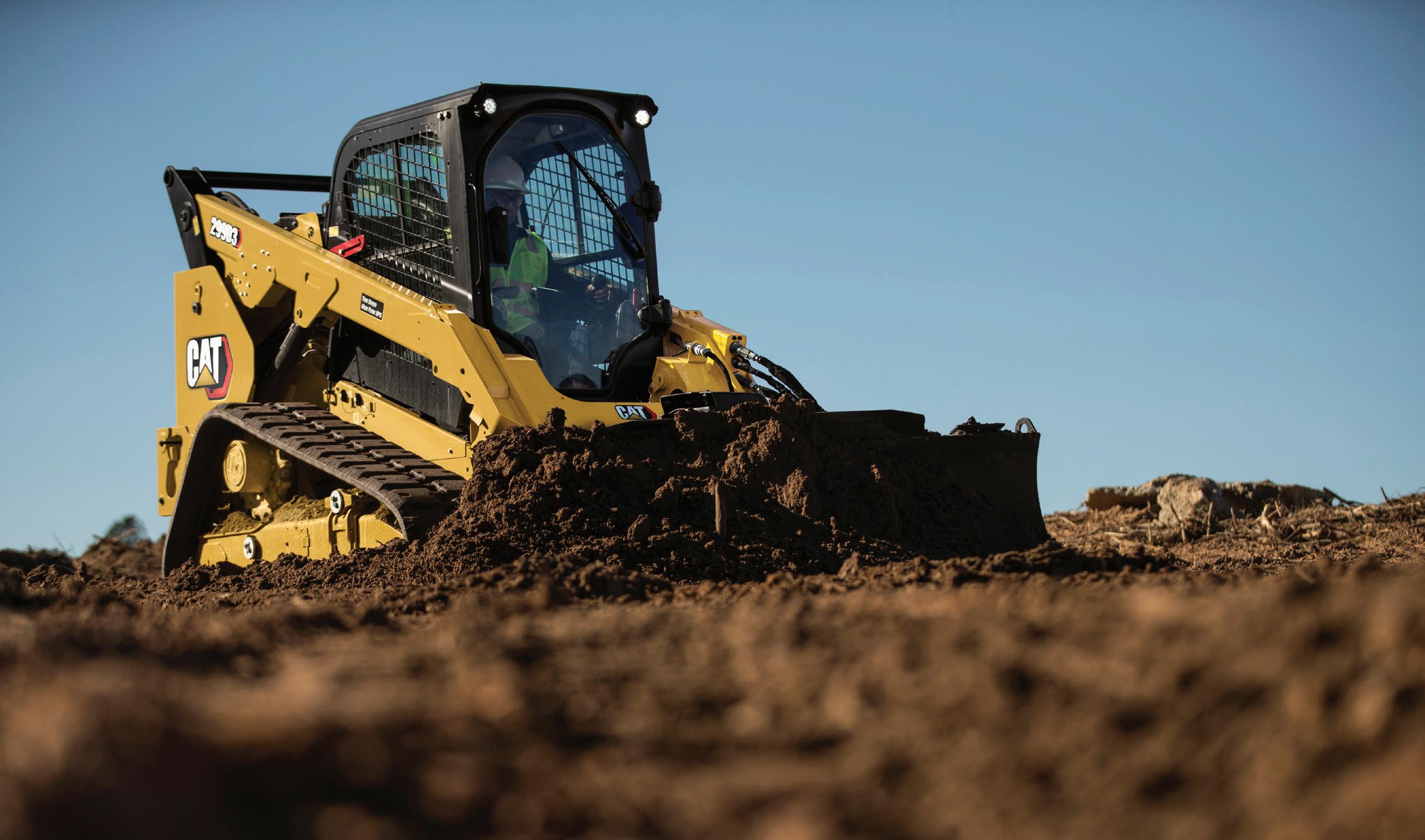


We all have our daily routines to follow. Or maybe not anymore, if you work from home rather than the office. Then there are the times where you take routes occasionally to fill needs or find services. In either case, however, I eventually come across a scene that drives me nuts.
You know by now that I am an equipment nut. I love construction machines because they “build” things for long periods of time if properly maintained. In fact, most units should make it through two rebuild cycles before being disposed of. They are amazing machines.
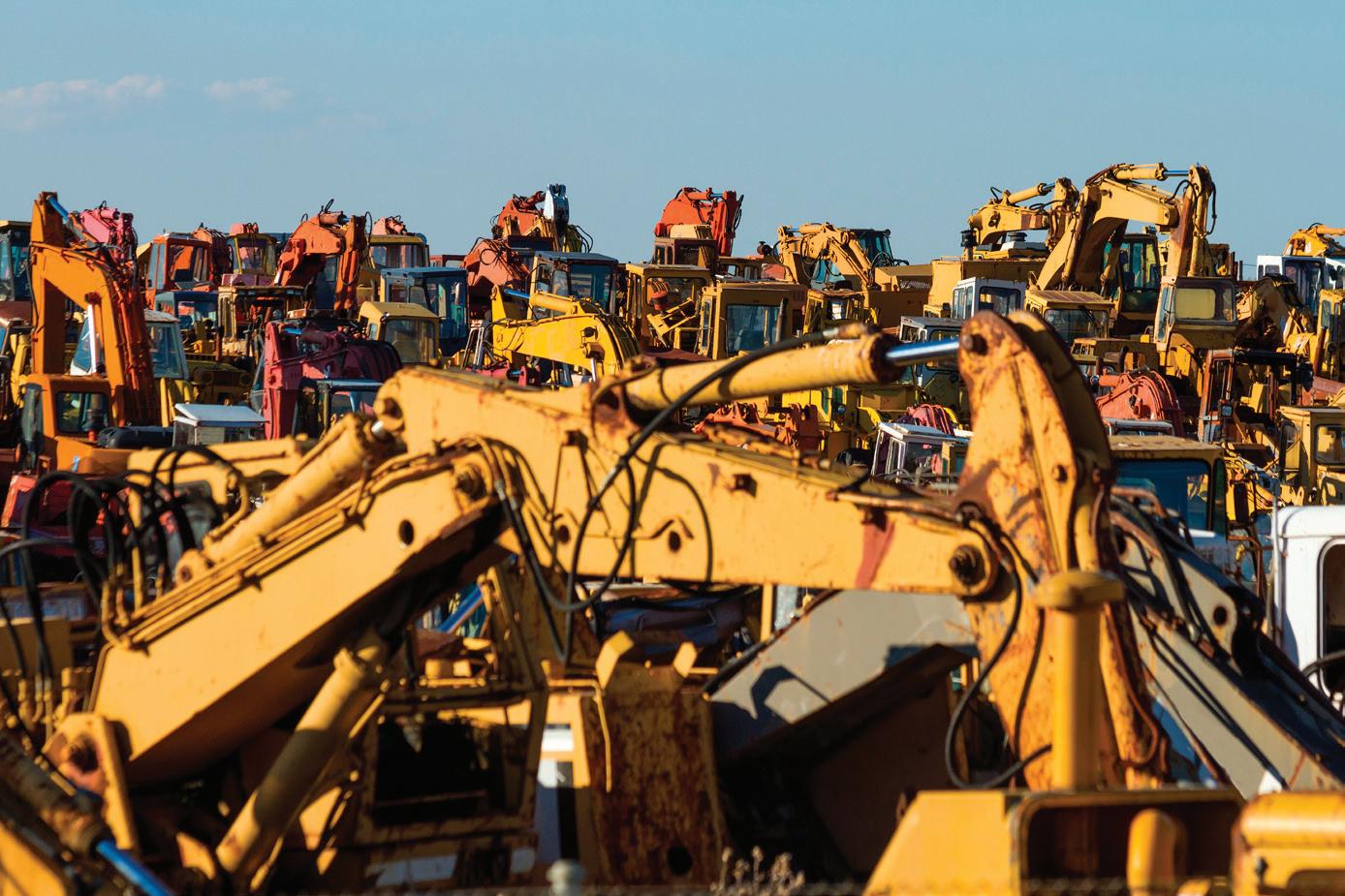
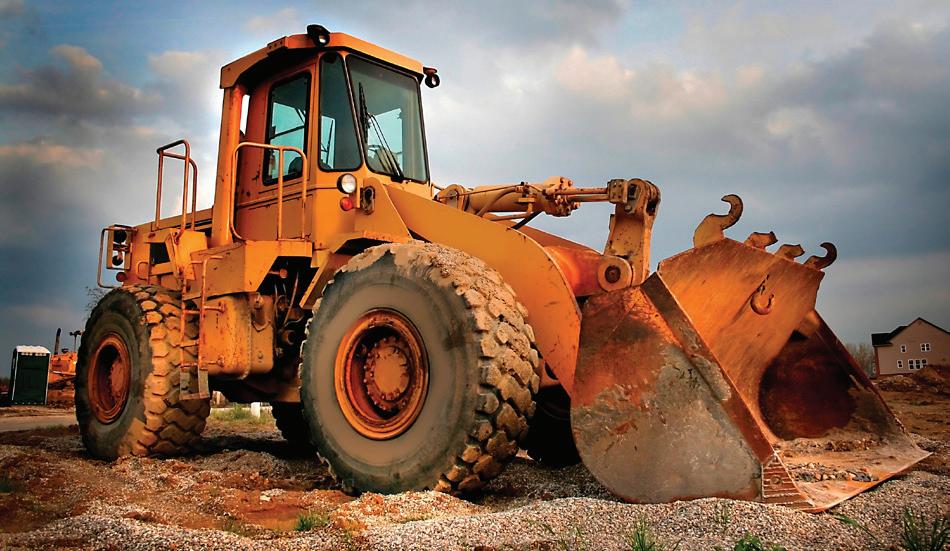
Figure out yet what is driving me nuts?
Let me tell you: It is seeing the same machine sitting idle on a jobsite. Going about my daily routine, once I see such a unit sitting on a jobsite, I make a point to keep checking on it to see if it was used. And if I happen to be on one of my occasional routes, my brain reminds me that I saw an idle unit and to keep my eyes open for it as I drive along.
Seeing those idle units drives me nuts! Maybe I am nuts for getting excited about it, but I doubt it.
When you consider the equipment costs are probably close to 20% of total construction costs, you have to believe that if that idle unit I keep seeing was properly used, the cost of the job would have been lower and completed sooner.
Believe me, having equipment sitting idle is costing you dearly, including:
˜ You have ownership costs assigned to the job in question.
˜ You have operating costs assigned to the job.
˜ You have pick-up and delivery costs for moving the unit.
˜ You insure it.
˜ You store it on a piece of property you own.
˜ If you rent a unit, you are not getting your money’s worth.
˜ If leased, you are paying for estimated monthly usage each month.
˜ Sitting idle sets you up for damages (you will have to pay for) as well as theft.
You incur all these bad outcomes when that unit should be put to use to make you money.
Come to think about it, I am not sure I want my company name on a unit sitting idle for any amount of time. People in the business would probably think you don’t know what you are doing or at the very least manage jobs poorly.
And where are the field personnel on this job? How about the
superintendent? Their job is getting charged for the use of that idle unit, which apparently is not being used productively. On a tight job, that unit sitting there could make the difference between profit and loss. And it is a real loss, since that unit could be generating revenue at another job. These days, I would expect a rental company to notify you when your current rental contract is ending or, by using their telematics, notify you that the unit is not being used. I have experienced many times when rental units sitting on a jobsite and have not been called off when they should have been. There is no excuse for that on both sides of the equation; the rental company and contractor should know when they need to return a rental unit.
Now I’m going to get emails telling me “So what? The cost of the unit was included in the bid, and I am collecting for the unit, whether I use it or not.” I understand that but doubt that your customer would. And if you are using rental units, you will not have a waiver for the unit in question to support your equipment cost. Poor cost controls will eventually cost you work since competitors will provide a lower bid. The bottom line being that poor controls cost you money two ways; loss of work and increase in costs.
These types of discussions take place in rental companies daily, possibly hourly. They understand that they make money only when the rental unit is making money every day it is off the lot under a contract. Rental managers want to know when units are coming off current contracts, what is being picked and will be available shortly, what is in the shop long term (five days or more) or in the shop getting checked out to be made “Rent Ready.”
Should the contractor be doing anything less? NO. The faster rental companies turn units around, the more they make. The same works for the contractor. The more billable hours you get out of a machine, the more money you make, the sooner you complete the job and the faster you move to the next job. In the end, annual sales are higher than expected. What a nice surprise compared to the bad outcomes noted above.
Recent economic articles still reflect construction way behind most other industries when it comes to overall efficiency and productivity. That is not to say there not efficient construction companies because there are. And those of you who have not prepared a REAL PLAN to become more productive will sooner or later hit the wall because you cannot compete with the folks who have invested in making their operation more productive.
To begin, I suggest that every contractor who owns or uses equipment to do their work get nuts like me and search regularly for idle units. If you find any, you might want to remove your name from the unit or wear blinders going forward.
Read more at: https://eqtoday.co/idle
On a tight job, that unit sitting there could make the difference between profit and loss. And it is a real loss, since that unit could be generating revenue at another job.Equipment costs are close to 20% of total construction costs.
For decades, the construction industry has experienced a steady decline in its workforce. The lack of appeal to young people, recessions and the pandemic have shrunk the available labor pool. Everything from skilled trades people to CEOs are becoming harder to find. A long-term solution is challenging and will take time to achieve.
In every strategic planning session I have facilitated in the last several years, the greatest limiting factor for
every construction company has not been the availability of work or capital but people. There is an adage that “you can’t fill the money bank until you fill the people bank.” Therefore, most construction companies are now searching for and enacting strategies to maintain or increase their workforce.

At the 2022 B2W Software User Conference, I facilitated a discussion on this with about 50 contractors. I have also participated in roundtable
discussions at the CFMA Annual Conference & Exhibition and other industry events. In this article I will share with you some of the key thoughts communicated in these sessions and from other industry experts.
The overriding common theme is that, when it comes to people, you must play defense as well as offense. In other words, a company’s first focus should be on keeping the people it has before focusing on gaining new people. With
The overriding common theme is that, when it comes to people, you must play defense as well as offense. In other words, a company’s first focus should be on keeping the people it has before focusing on gaining new people.
the industry facing a shrinking labor pool, everybody is fighting over a piece of a smaller pie. Remember, it is easier and more cost effective to retain an existing employee than it is to recruit and train a new employee.

Communication and management credibility are at the core of retention strategies. The message from owners and managers in these sessions was that it is important to talk to employees regularly and follow through on promises. Most agreed that the goals are to get to know workers and their personal needs and to make sure they understand the big-picture goals of the company and how they fit into that picture.
Contractors confirmed they also gain loyalty when their companies promote from within whenever possible and provide a well-defined, structured career path forward. They provide training and growth opportunities for employees at all levels.
Compensation and benefits are obviously tied to employee retention. A consistent, disciplined compensation program that’s equitable across the board is important. So is a systematic process for reviews and increases that the company sticks to.

Jeff Robinson, president of PAS, a construction compensation consulting firm, said, “It is important for construction company compensation programs to be in writing. This assures consistent application over time.”


One compensation weakness many construction companies have is not adjusting the salaries of current employees when new hires are brought in at significantly higher amounts. Based on my experience of over 20 years as a construction CFO, there is no such thing as payroll confidentiality. Within a workgroup, everybody finds out what everybody makes sooner or later. I realize it is
challenging to bring yourself to give current employees significant increases mid annual raise cycle, but if you do not, your competitor will. Robinson believes only about 30 percent of the industry adheres to this.
Managers said the amount an employee is paid is not always the deciding factor. Benefits are becoming more and more important. The perceived values of various benefits may be shifting. Several contractors that have instituted retirement plans reported that the response from employees was lukewarm. Conversely, improved or expanded healthcare benefits were highly appreciated. Some companies are fitting out small fitness centers where employees can work out before or after work. This is receiving positive feedback.
Childcare is clearly a growing concern and has great potential as a talent attraction. Several companies are using new and creative childcare solutions to differentiate themselves in the eyes of both current employees and potential new hires. One converted a training room into an area where office employees can bring children to work with them on occasion. Others were experimenting with flexibility options to make it easier to care for children. One of my clients investigated starting a company daycare center but found the licensing and liability issues to be daunting.
It is important for employees to understand the value of any benefits they are provided, including time off. I strongly encourage my clients to issue an annual compensation statement to their employees. The statement should show all payroll related compensation
and the dollar value of benefits, including vacation, PTO and holidays.
It has been my experience that most employees are surprised at how much they cost the company. I also advise to mail the statement to the employee’s residence so that other decision-makers in the household might see it.
Participants also said interest in work-from-home options has increased among existing and potential employees. They acknowledge that this presents tough fairness challenges in construction, where most jobs cannot be performed remotely. All of my clients are now back to requiring employees to report to work at company jobsites or facilities.
Finding New Employees
Consensus among contractors is that the industry needs to do more to make itself attractive. Still, contractors acknowledge that individual companies are taking steps on their own. Several have proactively established new ties with local high school vocational education programs and trade schools to provide career information and promote opportunities. Equipment simulators that provide a realistic experience were cited as a promising tool for introducing prospective equipment operators to the industry.


Contractors indicated that testimonials from current employees were especially effective in appealing to potential new ones. Video was the preferred format. Social media was cited as the top vehicle for distributing testimonials and other recruiting messages. Websites are being redesigned more as recruiting tools than client influencers.
Additional recruitment initiatives mentioned by the group ranged from internships in the office and the field
to employee stock ownership programs. Regarding internships, one of my clients has adopted the approach of offering permanent employment upon graduation to interns after one summer, even if they are not going to be seniors. Non-seniors are brought back in subsequent summers until they graduate. In other words, when you find a good person, you need to grab them.
Smart companies are realizing that investing in technology is required to attract talent. They understand that not only does technology clearly allow them to do more with fewer people, but it is essential to attracting young talent. Engineering and construction management college programs all include the use of mainstream construction technology.
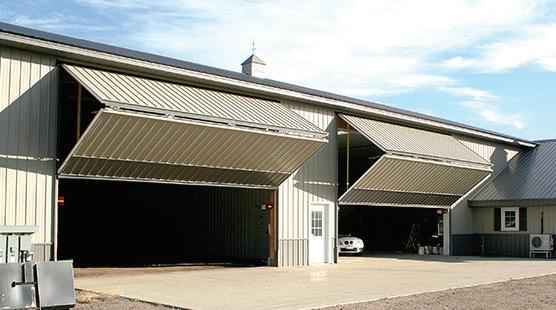
For example, in the minds of young talent, mobile field reporting of employee and equipment time is a given. Finding out that a company still does manual field logs and timecards can be a real turnoff. Virginia Tech Engineering Professor Emeritus and leading construction equipment consultant, Mike Vorster, said, “In order to attract the best students from engineering and construction management schools, a company’s technology must be current.”
All these initiatives cost money. They all represent permanent increases in company overhead. Due to the high-risk nature of the industry, some contractors may resist these types of outlays. I caution you to remember that this is a strategic issue. What is the cost of an ever-shrinking workforce to the bottom line of a company? This investment in retaining and recruiting talent is not a choice but a necessity.
Herb Brownett is president of Brownett & Associates, LLC, and a construction financial management consultant with B2W Software.
Read more at: https://eqtoday.co/retainET
Smart companies are realizing that investing in technology is required to attract talent .
— Herb Brownett
Trailer Weight: 8,380 lbs.

Overall Width:102", Length: 31'4"

Deck Length: 21’ Flat (model shown)
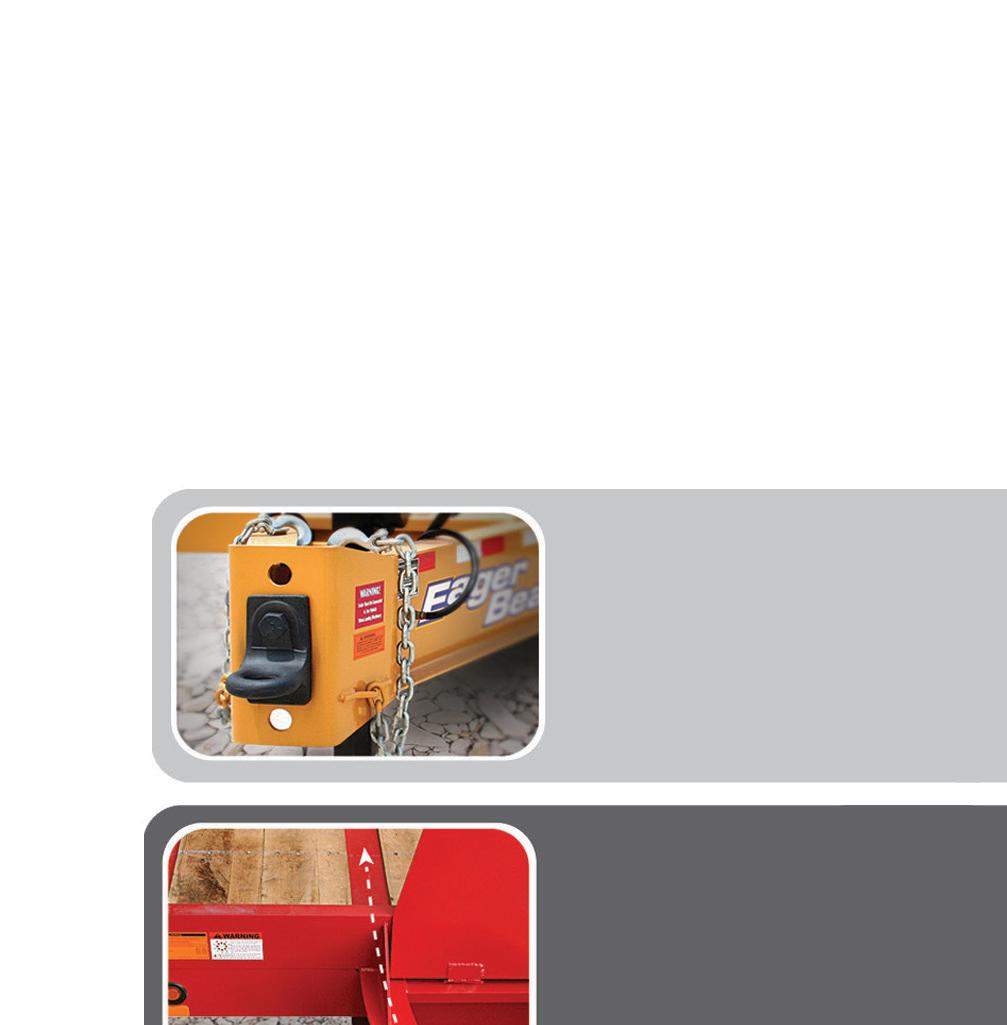
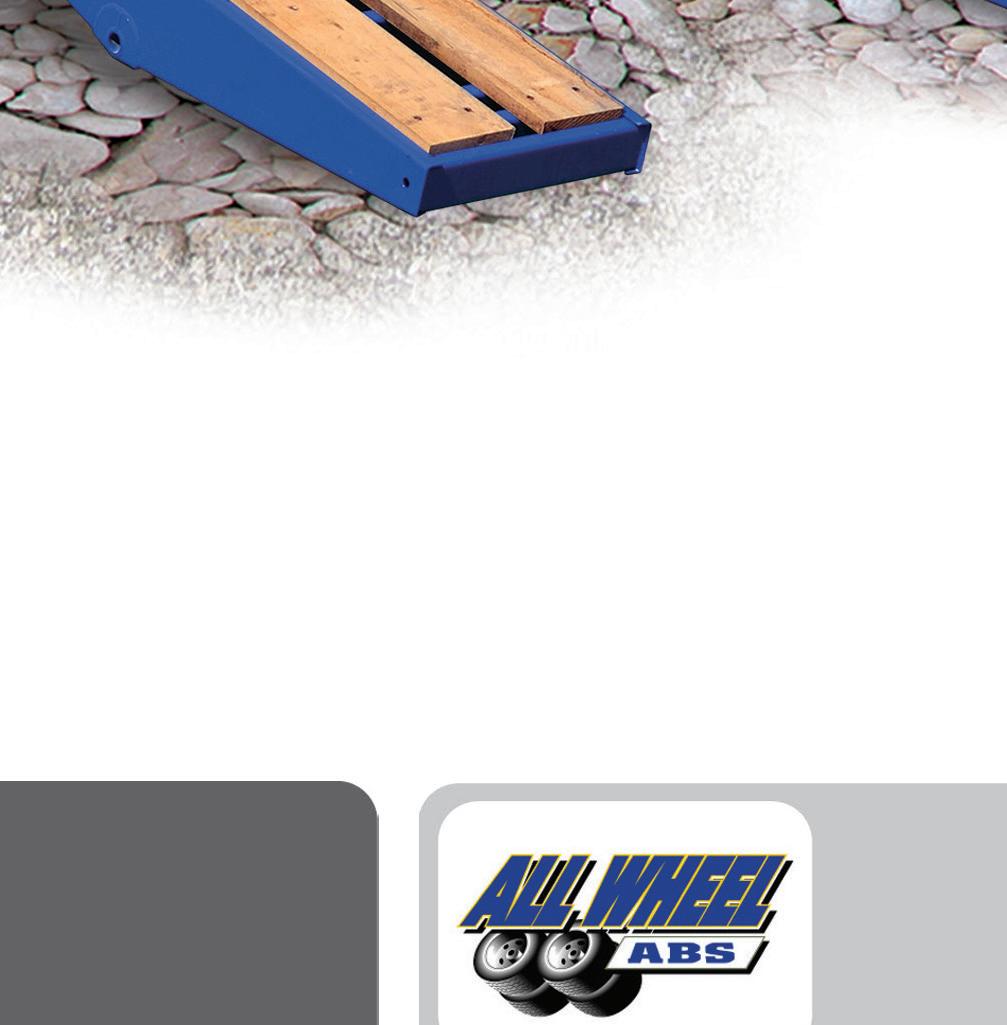
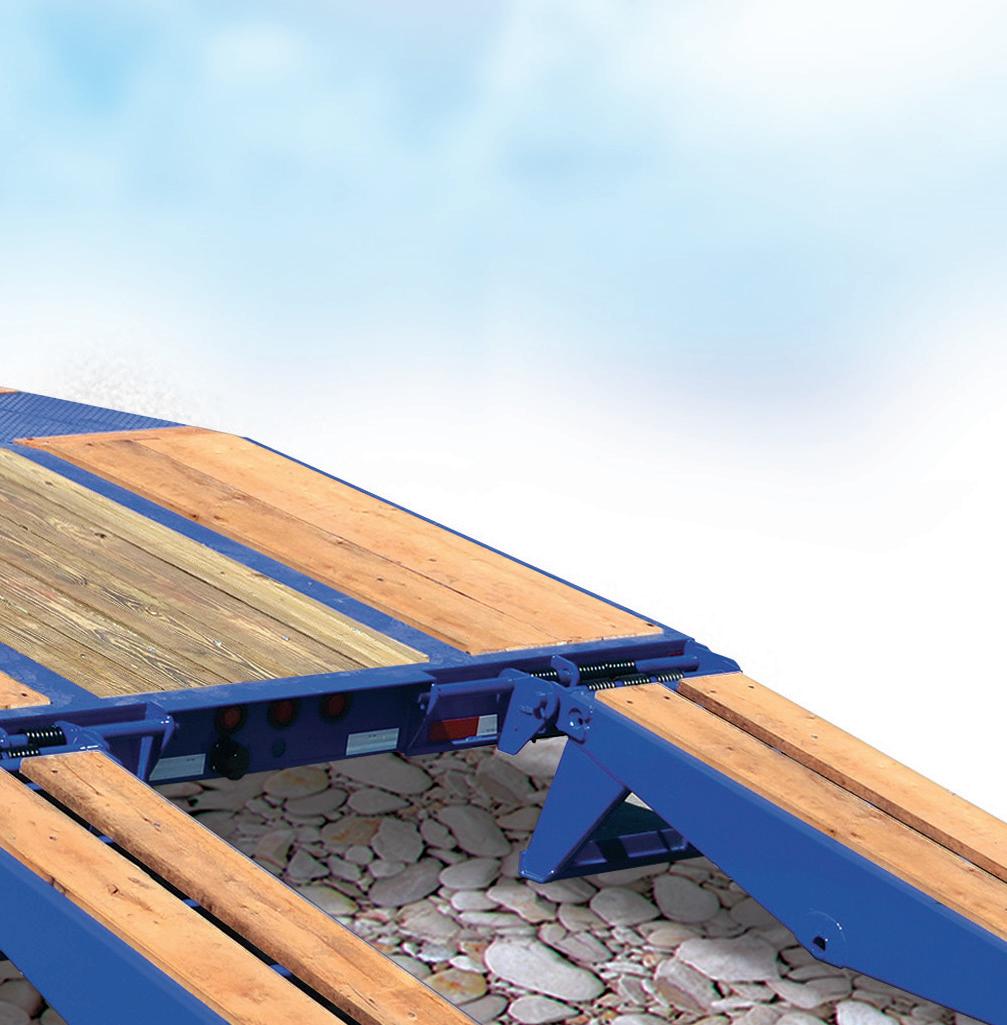
6’ Beavertail

Deck Height: 34"
Tires: Eight 215/75R17.5 (H)









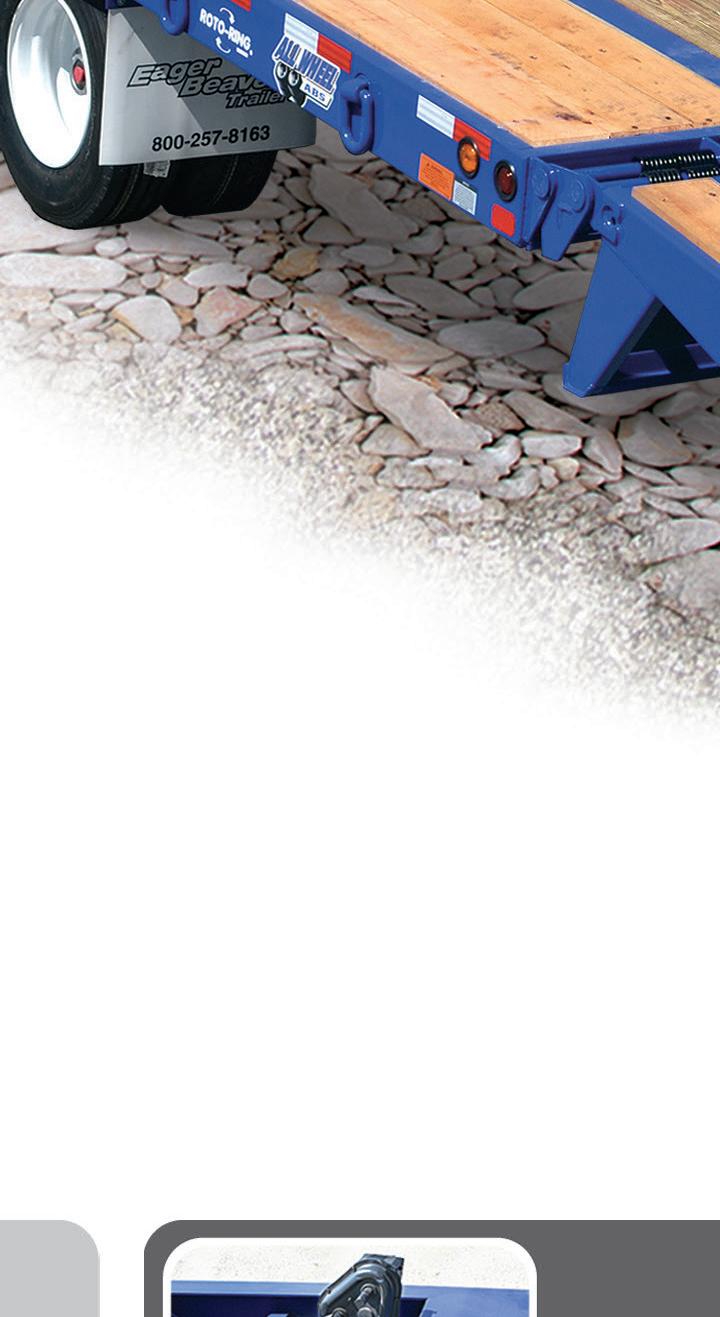



Brakes: Air (Full ABS System)

Ramps: 72" Long x 22” Wide Range: 102" Max. 29" Min.
Lighting:100% Sealed Wiring harness and L.E.D. Lights



















